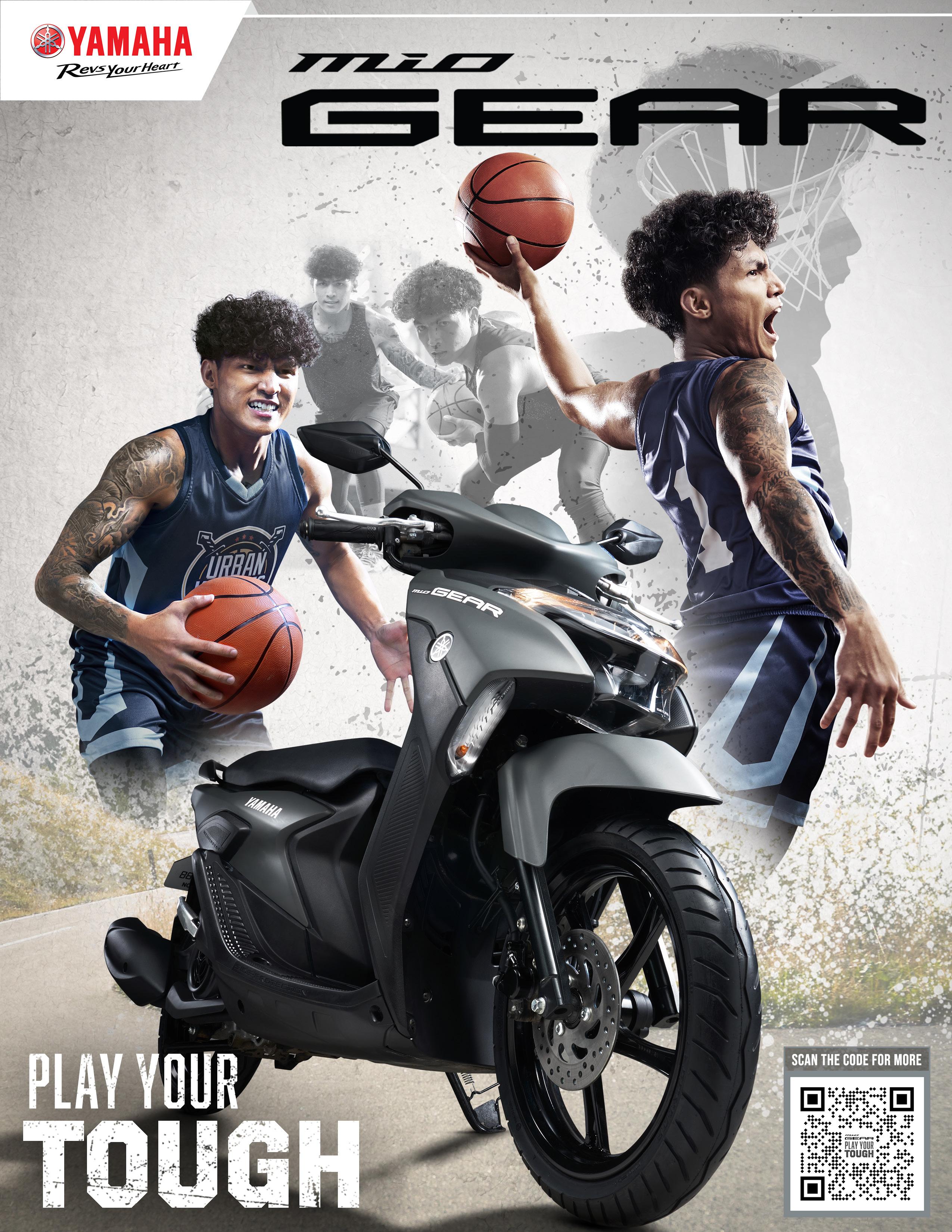




























t takes around three to four hours to reach Baguio from NCR via the NLEX-SCTEX-TPLEX route. This is a distance of at least 235-kilometers from that first expressway tollgate to the Summer Capital’s center. Last Christmas season, it took me the same amount of time to traverse the roughly 30-kilometers from SLEX in the Alabang area to Quezon City. For those coming from Fairview, the experience can sometimes be just as bad going from their place to the opposite end of Quezon City. The point is that there are too many cars on the Metro’s thoroughfares. So much so that in a study published in 2019, the Japan International Cooperation Agency said that the country’s traffic cost us over PHP2-billion per day in 2014 and over PHP3-billion per day in 2017, with the figure estimated to balloon to over PHP5-billion per day by 2035 if the situation does not improve.

How have we gotten here, and how can we move forward from this mobility gridlock?


According to the Land Transportation Office, in 2020, there were 1.1-million registered private cars in the Philippines. In 2021, this grew to 1.19-million. In 2022, this was at 1.27-million. While the COVID-19 pandemic caused an economic slowdown, it did not deter the rise in private vehicle ownership. In fact, it spurred vehicle purchases as more people opted away from public transportation options due to the fear of catching COVID-19 from other commuters. However, this car-centric mindset stems way back before the pandemic. In a survey conducted by the National Economic and Development Authority in 2015, over 8,000 out of 10,000 respondents said that they dreamed of owning at least one car by 2040.
This car-first mentality is also reflected in public spending. Looking at the data, over PHP2.7-trillion out of some PHP2.8-trillion public funds meant for road infrastructure were used for the development of the country’s road networks. While bigger, longer, and wider roads seem to solve traffic in the short term, in the long term we just end up with the same problem due to induced demand.
More roads means more cars which means more traffic. Rinse and repeat.

The Just Transition Research Collaborative in 2021 reported that there is only one public utility vehicle for every 25 private vehicles on Metro Manila’s roads. This is in stark contrast with the actual number of people who need to go from A to B. With a population of almost 13.5-million, over 9-million commuters in NCR depend on public transport to go where they need to, according to the Move As One Coalition transport advocate group. To further highlight the disparity, the University of the Philippines School of Urban and Regional Planning says that this 70% majority only take up 22% of available road space — the rest of the asphalt is occupied mostly by private vehicles.
Meanwhile, walking and cycling are the most common first- and last-mile modes for public commuters as, more often than not, designated public transport stops are not actually someone’s final destination. However, if you look


at the Metro, most sidewalks are not conducive for walking. Either they are not wide enough, slanted so you’re always walking, leaning to one side, occupied as vehicle parking, or treated as extensions of private properties or commercial establishments. If you’re a pedestrian looking to get to the other side of the road, then you will also have to deal with mountainous footbridges instead of the more convenient at-grade crossing. For cyclists, while the pandemic has brought about the development of over 500 kilometers of dedicated bike lanes, these have slowly been unofficially turned into shared lanes with motorcycles and cars when no traffic enforcers are around. In fact, fairly recently, proposals to officially convert EDSA’s bike lanes into shared lanes have surfaced but have luckily been shelved for the time being.
Such is the plight of most Filipinos who do not have their own cars.
This car-centric situation is not unique to the Philippines and, fortunately, success stories abound of countries that have successfully transitioned from private carcentricity to more efficient means of transport. An example is the Netherlands. During the 1970s, the country faced similar problems with traffic congestion due to the sheer volume of vehicles. By rethinking city planning, investing in the appropriate infrastructure, and creating policies that favored those with fewer wheels, the Netherlands is now one of the most cycling-friendly cities in the world.
You may be thinking, “But that’s a cold country. It would not be the same experience with the Philippines’ very humid, tropical climate.” And that’s true. However, there are places in Southeast Asia that have successfully integrated biking into their residents’ daily lives. For example, there’s Tampines in Singapore. In a 2014 study, over 50% of the town’s households had at least one bicycle, and over 38% of the town were regular cyclists. The town was able to achieve this thanks to investing in dedicated, segregated, and uninterrupted bike lanes; shaded bike lanes; and multi-modal connectivity options allowing cyclists to take other forms of public transport.

To put it simply, build it — better public transport, better sidewalks, and better bike lanes — and they will come. People are more than willing to commute and take mass transport options, but these have to be made dignified and convenient. On top of reduced traffic, other benefits can be gained, such as improved air quality due to fewer vehicles on the road, better public health as people move more, and overall better quality of life.
It won’t be easy. It won’t be instant. But hopefully, in time, that three-hour traffic from Quezon City to Quezon City will just be a fond memory we tell the next generation.
“TO PUT IT SIMPLY, BUILD IT — BETTER PUBLIC TRANSPORT, BETTER SIDEWALKS, AND BETTER BIKE LANES — AND THEY WILL COME. PEOPLE ARE MORE THAN WILLING TO COMMUTE AND TAKE MASS TRANSPORT OPTIONS, BUT THESE HAVE TO BE MADE DIGNIFIED AND CONVENIENT.”

rban mobility is changing around the world. Countries have started electrifying their public transport systems, and powering them with sustainable energy. Many European nations are shifting their definition of city roads, now focusing more on people instead of cars.
Here is how urban mobility is changing the way we move:

Last year, we talked about EVs and how they are a more sustainable mobility solution. Beyond sustainability, EVs can also be a good personal mobility solution for highly urbanized areas, such the cute Mini EVs that have started entering the Philippine market.
Mini EVs like the Jetour Ice Cream (Chery Ice in other markets) and Wuling Hongguang Mini EVs have taken over the Chinese motoring industry. These cars, fashioned after the Japanese Kei-cars, serve as a personal transport solution in Chinese cities. They’re highly sought after because of their cheap price (around USD5,000 or roughly around PHP300,000), their small and nimble frame, and finally their cheap operational cost as an EV.
The sole purpose of these Mini-EVs, and even the Kei cars that preceded them, is to transport a person from point A to point B within the city. They
were created with a limited range (for EVs) and speed. They’re economical not just because they are electric-powered but also because of they consume little energy due to their compact size.
Adopting Mini-EVs will not change the primary problem within our transport system, the deadly traffic. They are, after all, still cars; but they offer a more economical way of traveling and consume less road space – now a luxury in rush hour Manila.

Beyond the current Mini-EVs in the market, other mini-mobility solutions are being considered. There are smaller EVs that can carry one or, at most, two persons — similar to a motorcycle but with four wheels and enclosed. They’re made for people who are afraid of riding e-bikes or electric scooters.
These small EVs are the perfect solution for metro traffic because they’re smaller, therefore consuming a lot less space; they’re safer than a motorcycle; and they offer a more sustainable mode of transportation.

The electrification of mobility also comes with am infrastructure challenge. Many people are skeptical about EVs mainly because of range anxiety from the lack of publicly available charging spots. Sure, home charging is a solution, but for those living in a condominium or apartment, home charging may not be a feasible.
So what’s the deal with the lack of EV infrastructure?
For me, it’s an economic dilemma arising from lack of demand. Currently, the number of EVs in the market is still relatively low (compared to other nations). There is also a higher initial cost for EVs compared to conventional internal combustion engines. But with the new government measures promoting EVs like the EVIDA law and the president’s February Executive Order removing tariffs on EVs, we can expect more and more EVs to enter the market.
If there is a model country for the uptake of EVs, it’s Norway. The Scandinavian country has trumped the rest of the world when it comes to EV adoption —80% of total car sales in 2022 were EVs. It managed to do this by making EVs a better option than regular ICEs.
Norway offered massive tax breaks on EVs. Additionally, it offered massive perks from the years 2000 – 2017. EVs were exempted from paying tolls, ferries, and even parking. Additionally, the country invested heavily in charging infrastructure, going as far as requiring apartments and other multi-story housing to have their electric wiring ready in case a tenant wants to install an EV wall charger.
In Asia, China remains the largest EV adapter with 22% of its total car sales in 2022 being EVs. While that may look like a small percentage, you have to
remember that China is the world’s largest auto market with 26.86 million vehicles sold in the country just in 2022. The EV sales number is expected to grow even larger this year with more car manufacturers offering higher value cars, investing more in EV infrastructure, all supported by a massive government subsidy for both car manufacturers and buyers.
In Southeast Asia, Thailand is becoming the leader in EV adoption. While it recorded just 1% of total car registrations as EVs, that number grew to 6% in just January – April of this year. Leading the charge in EV sales in Thailand are Chinese EV giants BYD, SAIC Motors (MG), and Great Wall Motor. The country is also offering its existing car manufacturing expertise to these car makers, hoping to become Southeast Asia’s EV manufacturing hub.
In Deloitte survey on preference of EVs in Southeast Asia, it was found that Thailand ranked the first in wanting their next car to be an EV. The Philippines had the lowest take up with 72% of Filipinos still wanting an ICE in their next vehicle. The preference is due to the lack of EV infrastructure in the country.
The 72% may look high, but that is 10% lower than the previous year. The study found that 55% of respondents were mainly concerned about the lack of EV infrastructure. Other apprehensions were the time it takes to charge (51%), and safety concerns about battery technology (45%). Other concerns were driving range, and lack of alternative power sources at home (43%).
The results of the survey are very clear, Filipinos want the EV infrastructure to be ready before gaining confidence to shift to EVs. As more EVs enter our market, we can hope that the infrastructure can keep up — so we can change the way we move.
“The electrification of mobility also comes with am infrastructure challenge. Many people are skeptical about EVs mainly because of range anxiety from the lack of publicly available charging spots. Sure, home charging is a solution, but for those living in a condominium or apartment, home charging may not be a feasible.”

 Words by Alyssa Joji Silva
Words by Alyssa Joji Silva
ransportation is a vital aspect of many people’s daily lives, and the recent pandemic created new opportunities for “mobility as a service.”
These include ride-hailing apps, traffic maps and navigation apps, and other mobility-sharing services. Paired with digital payment functionality, commuters are finding these more convenient and cost-efficient, while allowing them to reach their destinations faster.

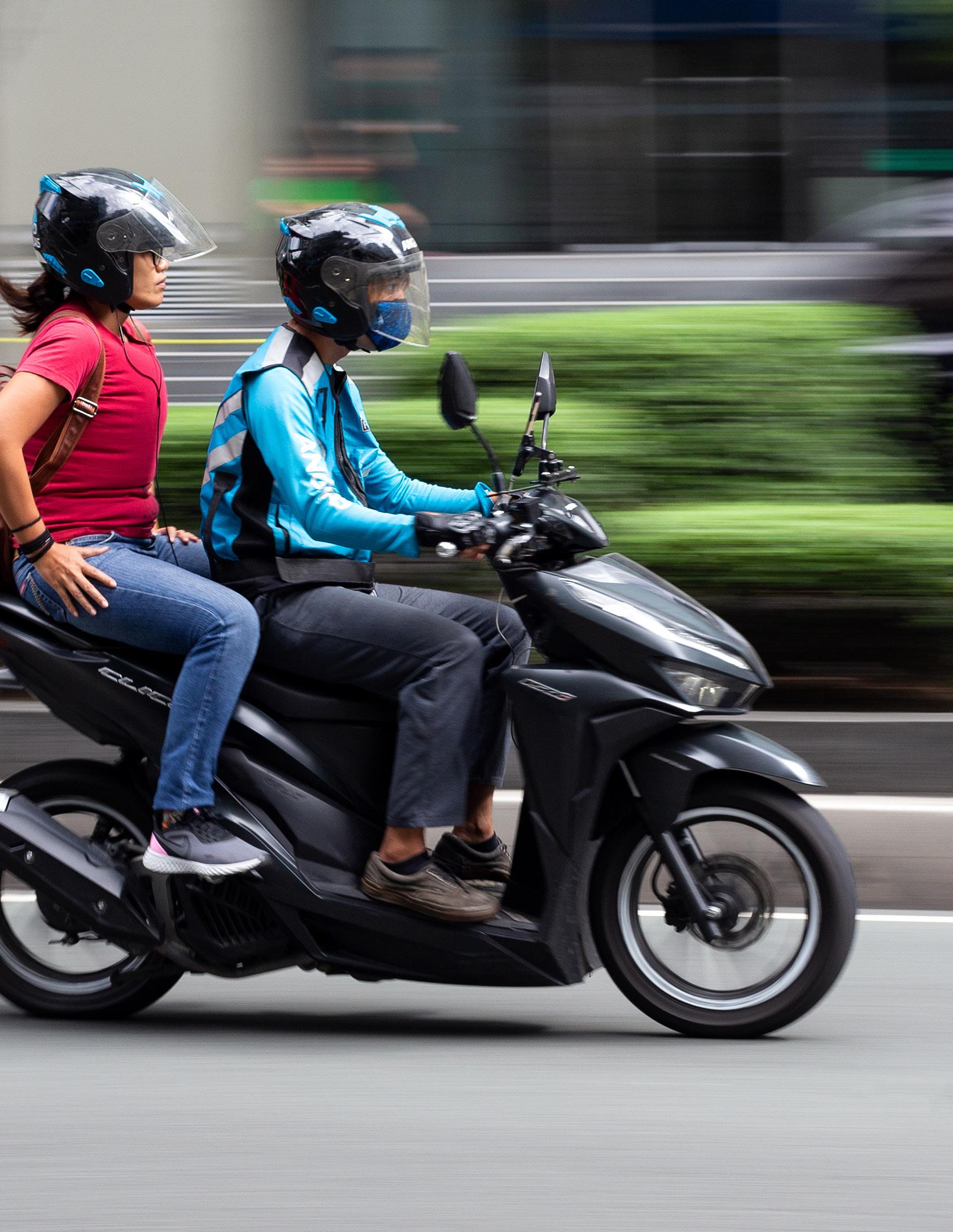
MaaS or Mobility as a Service is a concept that integrates various means of transportation into a single, seamless service. It is still a developing concept, but it has the potential to make a significant impact on the way we travel. This is especially true in countries with rising urbanization rates, which can make public transportation less accessible.
In the Philippines, we are used to waking up early to avoid traffic and standing in long lines for public transportation to reach our destination early. We even calculate the possible number of hours and other routes to find a way to avoid traffic. But as the country leans toward a more sustainable future, MaaS can help reduce the number of single-occupancy vehicles on the road, help users choose from different modes of transportation, offer discounts for multiple rides or subscriptions, all while being able to easily adjust to any itinerary.
With this, traffic on the road can be reduced, thus increasing the possibility of improving the air quality in cities. MaaS also improves the transportation system by collecting data on how people are using different transportation options. This data can be used to improve the planning and operation of the system by adding new routes or improving service frequencies. It can also help users avoid congested areas by providing real-time information. This is reflected through mobile applications and websites such as Sakay.ph, Waze, ikotMNL, moovit, Google Maps, and r/HowToGetTherePH, a subreddit in the Reddit app and website.
As people look for more sustainable and affordable ways to commute or travel, MaaS allows users to plan and book trips across multiple modes of transportation, such as public transportation, ride-hailing, and car sharing. Sharing services are increasingly popular nowadays, as they allow people to share vehicles that are only needed for a short time.


“As people look for more sustainable and affordable ways to commute or travel, MaaS allows users to plan and book trips across multiple modes of transportation, such as public transportation, ride-hailing, and car sharing.”
These services can be used through mobile applications and websites such as Grab, Joyride, Angkas, Move It, Moovr, AVIS Philippines, Hirna, MiCab, and OWTO. These platforms make it easy for people to book or rent vehicles without having to spend so much on gas and parking. They can even pay the fixed price that is generated through apps such as EasyTrip, beep, and other e-wallet platforms that are linked to the service app.
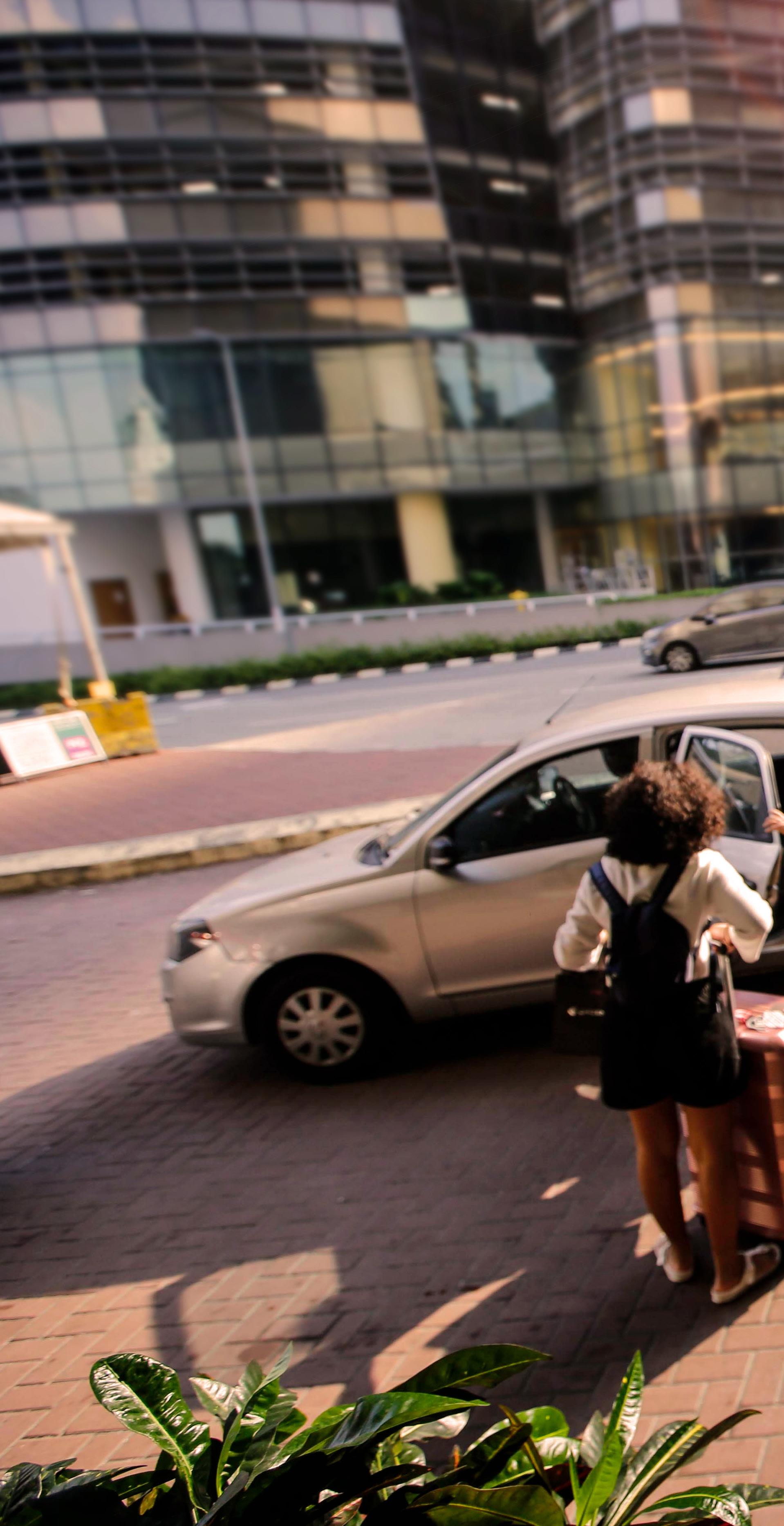
In creating a balanced response to the COVID pandemic, the use of MaaS in the Philippines is growing as more and more people are looking for ways to avoid traffic, have accessible transportation, and pay for their commutes in a cost-effective way. However, there are still some major challenges that need to be addressed before MaaS can be widely adopted in the Philippines. One of them is the lack of intermodal integration — the transport system is not well-integrated, making it difficult for people to use different modes of transportation.
Another challenge is the poor quality of public transportation. According to the 2022 Urban Mobility Readiness Index, Manila ranked 58th in the Urban Mobility Index with the worst public transit system. Many public transportation vehicles are old and unstable, and the service is often overcrowded and uncomfortable, especially during rush hours.
The high cost of transportation is another challenge in the more widespread adoption of MaaS MaaS, especially amont the lower-income groups. There are also some concerns about data privacy since most of the MaaS apps collect a lot of data about people’s travel patterns.
Despite these challenges, Mobility as a Service (MaaS) has the potential to be a major player in the future of transportation in the Philippines. By making it easier, more convenient, and more affordable to get around without a car, MaaS can help reduce traffic congestion, improve air quality, and make urban areas more liveable and sustainable.


THE VICTUS 15 BY HP is a gaming beast that will take your gaming experience to the next level. With its sleek design, powerful performance, immersive display, enhanced audio, and upgraded cooling system, it stands out among the best gaming laptops available in 2023.
At the heart of the Victus 15 lies the 12th Gen Intel Core i5 processor, a true gaming powerhouse that uses a performance hybrid architecture design to transform your gaming and computing experience by integrating two all-new core microarchitectures (Performance core and Efficiency core) into a single die to increase compute efficiency and deliver intelligent workload optimization. This intelligent coordination ensures you experience the perfect balance of clock speed, cores, and threads, delivering immersive experiences and low latency during competitive gameplay.
The Victus 15 is more than just a gaming machine; it offers users the freedom to multitask without compromising performance. With its powerful capabilities, you can seamlessly switch between tasks without missing a beat, allowing you to focus on what matters most—your gaming experience.
Graphics are a crucial component of any gaming laptop, and the Victus 15 excels in this department. Powered by the Nvidia GeForce RTX 3050Ti Laptop GPU, it delivers stunning visuals and smooth gameplay. The 15.6-inch Full HD IPS display, with a 144Hz refresh rate, ensures that every detail comes to life with breathtaking clarity. It boasts immersive audio tuned by B&O and dual speakers to enhance your gaming immersion further.
Its upgraded cooling system ensures optimal performance even during intense gaming marathons. Say goodbye to overheating and performance throttling, and enjoy uninterrupted gaming sessions with peace of mind.
Connectivity is made effortless with support for multiple 4K displays and Thunderbolt technology. Whether connecting to external displays or organizing your peripheral suite, the Victus 15 provides the flexibility and convenience to create your dream gaming setup.
Customization and optimization are key to achieving your gaming goals, and the Victus 15 offers just that through the Omen Gaming Hub. This centralized control center allows you to fine-tune your settings, monitor system performance, and connect with other gamers.
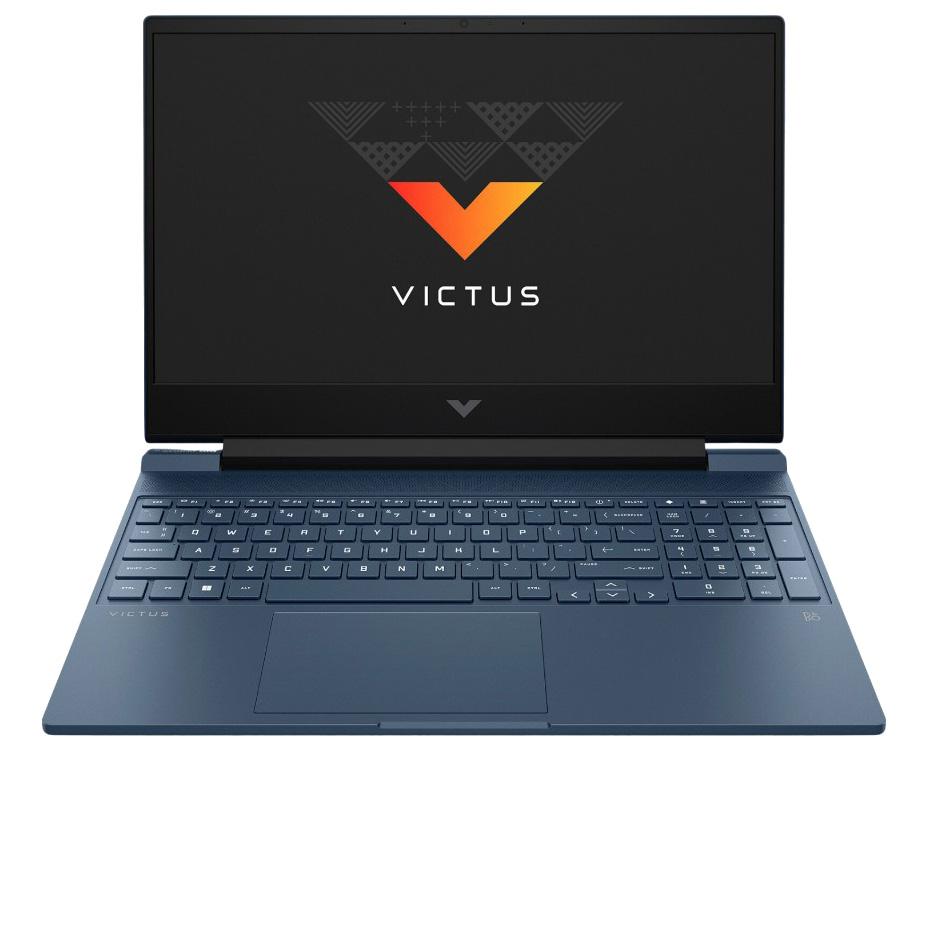
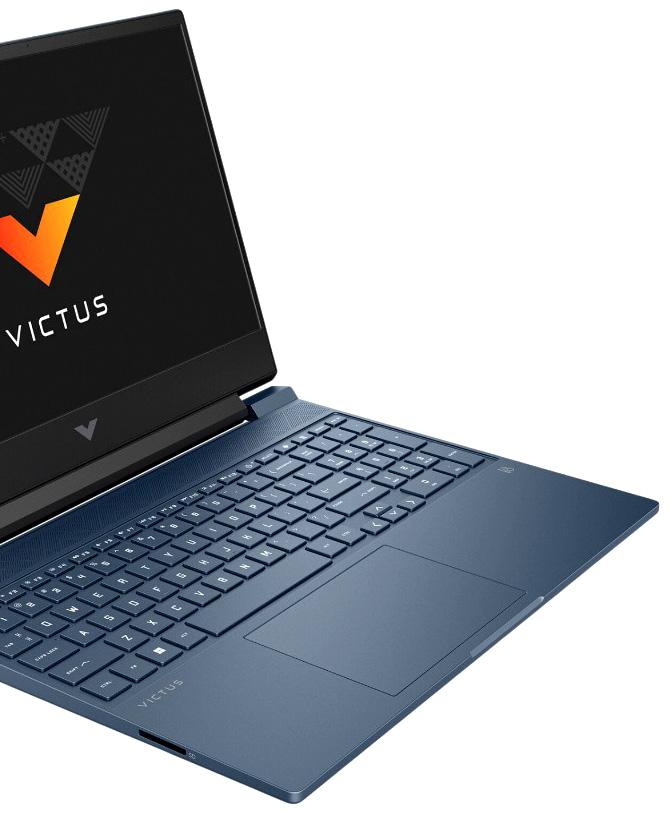

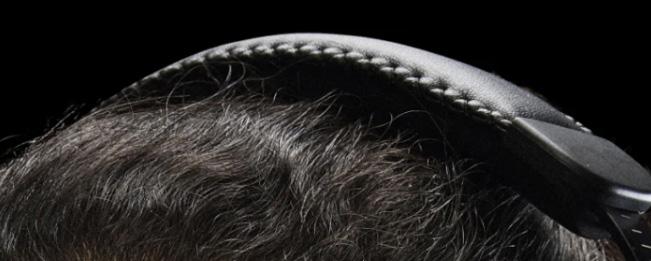
THE PRO X 2 LIGHTSPEED aims to elevate gaming audio to new heights, combining cutting-edge technology with Logitech’s commitment to delivering toptier peripherals.
At the heart of the Pro X 2’s capabilities is its advanced audio technology. It uses graphene, a revolutionary new material that delivers enhanced audio response, reduced distortion, and unrivaled sound. The headset offers unprecedented audio clarity and precision. Gamers can expect rich, immersive soundscapes that allow them to hear every footstep, gunshot, and whisper with astonishing accuracy.
One of the standout features of the Pro X 2 is its DTS Headphone:X 3D audio support. This technology creates a threedimensional soundscape that accurately simulates the direction and distance of in-game sounds, giving players a competitive edge by enhancing their situational awareness.
Designed in collaboration with the world’s top gaming pros, the Pro X 2 boasts a sleek and ergonomic design that prioritizes comfort during extended gaming sessions. The headset features plush memory foam ear cushions that conform to the user’s ears, ensuring a snug fit that effectively blocks out external noise and distractions. Its lightweight construction means that gamers can enjoy its immersive sound without sacrificing comfort.

Play comfortably at any angle, with a rotating durable hinge and soft memory foam earpads — available in leatherette or breathable velour. PRO X 2 LIGHTSPEED
achieves the perfect balance of comfort and strength with durable aluminum materials and a steel frame.
The Logitech G Pro X 2 also comes with an adjustable headband, so you can be sure it will fit any head size perfectly. Its lightweight design, meanwhile, helps reduce fatigue – thus ensuring extended gameplay.
Another notable aspect of the Pro X 2 is its wireless capability. Equipped with LIGHTSPEED wireless technology, the headset offers a lag-free and reliable connection, ensuring that every audio cue is delivered in real time.
Gamers can say goodbye to tangled wires and enjoy the freedom to move without compromising on audio quality. Get up to 50 hours of use on a single charge —
plus a robust connection range of up to 30 meters.
Aside from LIGHTSPEED, gamers can seamlessly switch between Bluetooth connectivity and a reliable 3.5mm wired connection, adapting to your gaming setup and preferences with ease. You can easily transition from intense gaming sessions to casual audio enjoyment, making the Pro X 2 not just a gaming accessory, but an audio companion tailored to your diverse needs.
The Pro X 2 also features a detachable and noise-canceling Blue VO!CE microphone, which delivers studioquality voice communication. This ensures that teammates can hear every command and strategy clearly, making collaboration in multiplayer games more effective than ever before.


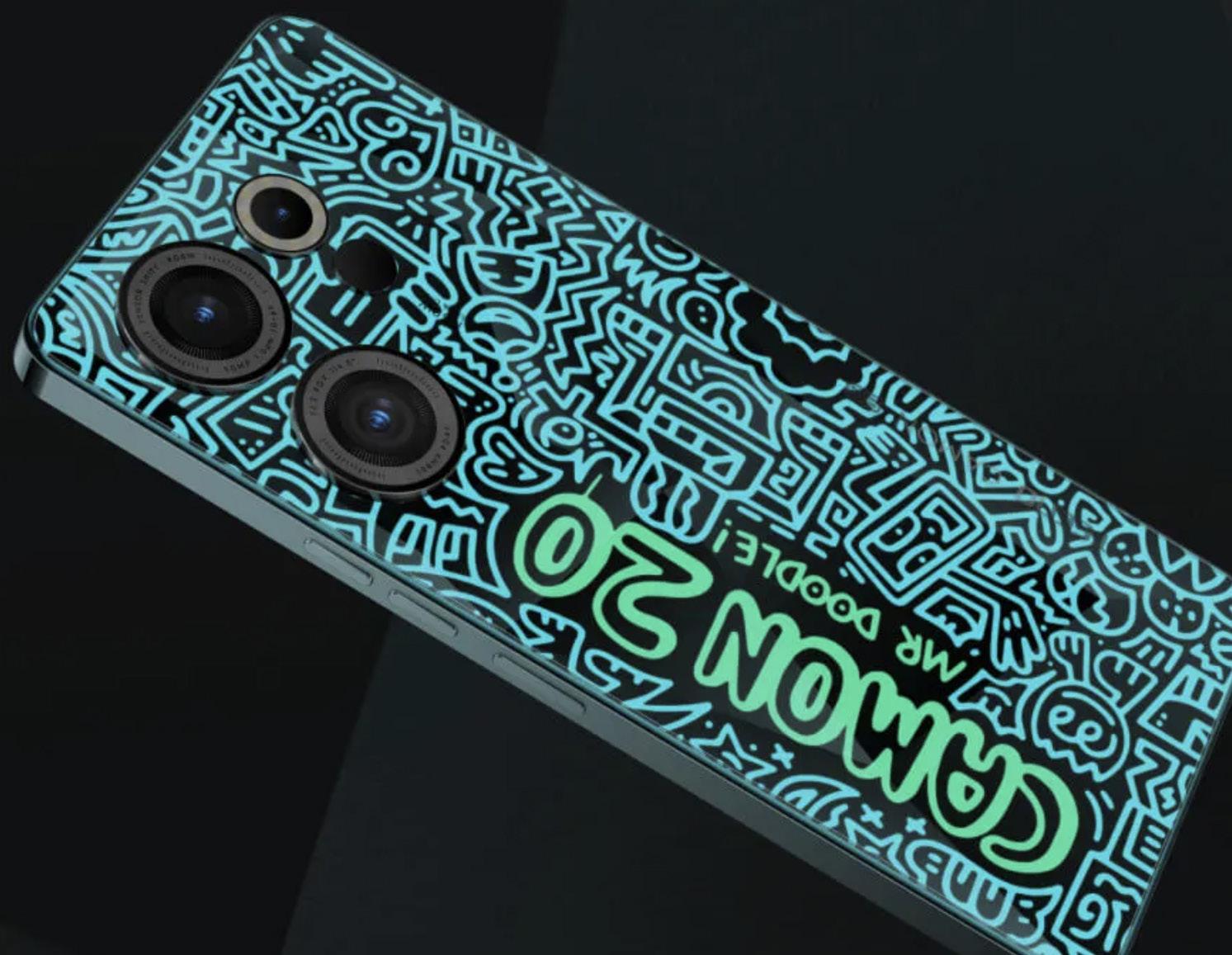

TECNO CAMON 20 PRO 5G MR DOODLE EDITION brings together Mr Doodle’s iconic “graffiti spaghetti” artwork and advanced photography capabilities to create an ultra-fashionable, professional imaging smartphone.
The phone adopts the moon phase color-changing technology, combining Mr Doodle’s graffiti paint-ings with CAMON 20 Pro’s unique 3D design. The back cover absorbs light during the day and re-leases it as fluorescence at night, allowing the phone’s back to display Mr Doodle’s graffiti works. The unique design of CAMON 20 Pro Series Mr Doodle Edition makes it a fashion icon during the day and an eye-catcher at night, making it a true master that combines fashion and art.

Mr Doodle, otherwise known as UK-based artist Sam Cox, has been interested in graffiti since he was 2 years old and started his doodle journey from his furniture to his bedroom. His signature slo-gan is to leave no corner undoodled and he won’t stop until he has filled every blank space with his markers. His large-scale doodle art installations have garnered over 36 million views online, making him an internet sensation. To him, anything can be a canvas, and he dreams of covering the moon with his doodles. Today, with millions of followers on Instagram and collaborations with world-renowned fashion brands such as Adidas and

Fendi, he releases co-branded fashion products, mak-ing him one of the hottest millennial art pioneers today.
TECNO CAMON 20 Pro Series Mr Doodle Edition reflects TECNO’s ambition to push the limits of both artistic and technological possibilities. Through continuous innovation, the series delivers not only a one-of-a-kind design, but also advanced, professional photography capabilities and exceptional user experience. Empowering users to capture special moments in stunning detail, TECNO CAMON 20 Pro Series Mr Doodle Edition boasts 4K OIS portrait video and 64 MP RGBW Sensor for crystal-clear portraits even in low light. It will help gamer stay ahead and clinch a win with MediaTek lat-est Dimensity 8050 processors and lag-free gaming experience with 16GB extended RAM + 256 ROM.
LIBERTY 4 NC is Soundcore’s strongest noise-canceling earphones. They reduce noise up to 98.5% for lesser noise and better listening.
Equipped with the leading active noise canceling system, the Adaptive ANC 2.0 actively performs in real-time to detect and create a noise canceling curve tailored to your ear canal and the environment in real-time. You can also control the ambient sound with 5 levels of noise canceling and
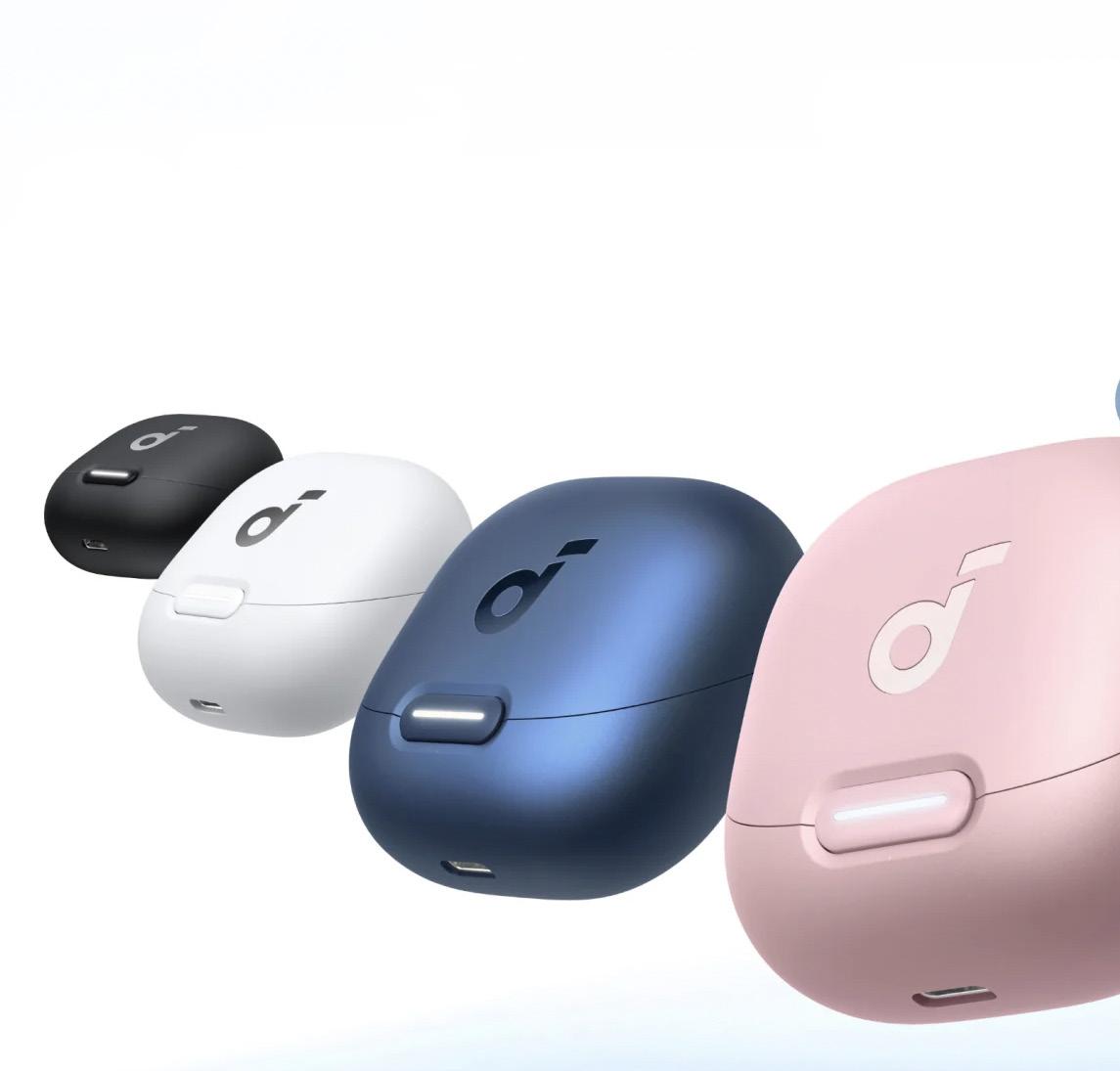
2 transparency modes. You can even select from preset modes for when you’re traveling on a plane, train, bus, or taxi.
Aside from muting the noise, the Liberty 4 NC also does an amazing job at amplifying what you actually want to hear, such as deep bass drops and crisp high notes so you can truly immerse yourself into the sound or the conversation if you’re tuned in to a podcast.
Expect nothing less than crisp and clear audio with its 11mm custom driver and the ACAA 3.0 Coaxial Acoustic System. The Liberty 4 NC also has a HiRes Wireless Certification and LDAC quality transmission.
The HearID 2.0 is all about the sweet spot, the ideal sound profile to suit your ears. Aside from mixing and adjusting the EQ to your liking, you can also choose from 22 presets to match your listening mood. And
since it is all about giving your ears a customized experience, each box comes with 5 size-varying pairs (XS to L) of comfy ear tips to suit your preference.
And should someone call you while you’re listening to your new favorite playlist, the Liberty 4 NC has 6 mics and is designed with an AI Algorithm that amplifies your voice and reduces background noise.
These true wireless earbuds can move with you and your busy lifestyle. With a 10-hour playtime and an additional 50-hours with the charging case, the Liberty 4 NC is the ideal companion for those short errand runs to longhaul flights.
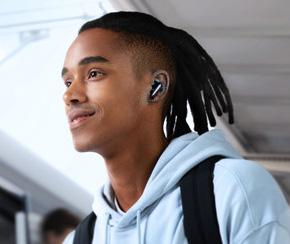
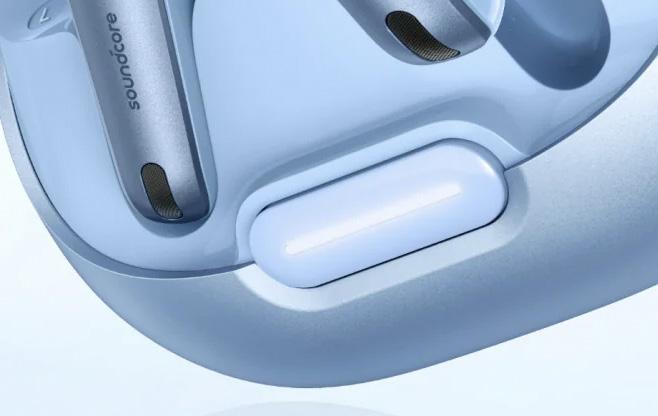

CANON RECENTLY announced the latest additions to the extensive lineup of A3 and A4 color and monochrome laser multi-function devices (MFD). Building upon Canon’s current imageRUNNER ADVANCE and imageRUNNER offerings, the new MFDs are ideal for today’s diverse work environments, providing businesses with excellent functionality from productive workflows to preventative security measures.

The iR-ADV and iR MFDs provide a range of preventative security measures that is increasingly important in the current digital
workplace. Verify System at Startup and McAfee Embedded Control verifies the integrity of the system and checks for any tampering from startup to operation, preventing attacks from malware or unauthorized modifications.
Depending on the type of abnormality detected during startup, the device can automatically reboot to recover, minimizing downtime. Notably, the iR-ADV MFDs also support Trusted Platform Module (TPM) 2.0 to safely encrypt critical data stored on the MFDs, further protecting it against malware.
Designed for optimal ease of use, the MFDs share similar features on the user interface (UI) across iR-ADV and iR devices, providing a consistent experience. The Smart Timeline feature displays the history of the last 10 settings used, helping users save time spent on repetitive operations. The MFDs also provide users with the ability to customize preferences, offering personalization of the initial display screen, display language, and frequently used functions. Users can streamline repetitive operations, significantly improving productivity.
With businesses shifting to cloud-based solutions, the new MFDs lineup works seamlessly with Canon’s proprietary uniFLOW Online, a cloudbased print management solution that helps businesses manage their print environments. uniFLOW Online provides businesses with central control by tracking print, scan, and copy usage. Administrators can review the information within the uniFLOW Online Dashboard and identify potential areas for cost reduction. The solution also helps strengthen security by preventing unauthorized access with device authentication.
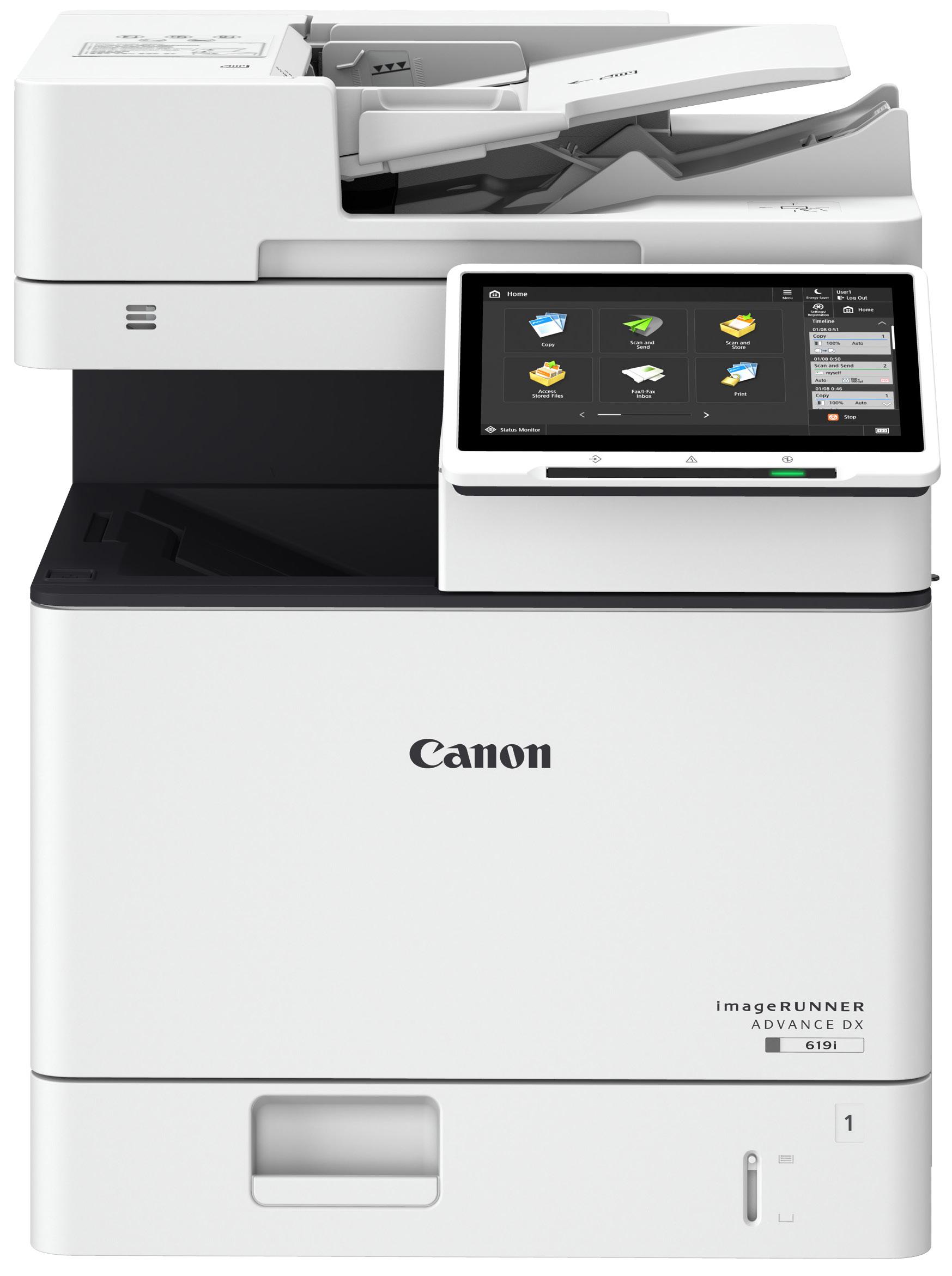

The iR-ADV & iR portfolio includes:
• iR-ADV DX C3935i/C3930i/C3926i/C3922i
• iR-ADV DX 4945i/4935i/4925i
• iR-ADV DX C359i1
• iR-ADV DX 619i1
• iR C3326i
• iR2945i/2935i/2930i/2925i

To make up for lost time and relationships that fizzled out. To see each other beyond a tiny screen and make the most of everything. This season, U Elements is here to help bridge the connection that was lost.
U Elements is an up and coming brand that has been providing the market with multi-functional and multi-purpose bags for almost a decade now. Their bags are designed locally and produced internationally with a carefully curated set of features.
U Elements’ new collections are here to help connect everyone, one bag at a time.
First up is the Equipt Campus Collection. With 4 silhouettes under its wing, this collection is made for easy, effortless catching up with family, friends, and all relationships in between. May it be for quick catchups or an out-of-town getaway, you’ll find an Equipt Campus Bag to suit your needs!


With its 21L storage capacity, this backpack is here to cater to your daily needs. Fit and organize your essentials in its spacious main compartment equipped with various organizational pockets. Made with water-resistant material and with a separate laptop compartment for a 15” even up to 17” laptop , you can surely bring your valuables easily and safely from the ever-changing weather.

Bring all your essentials with ease, even your 10” tablet! This sling bag boasts of a spacious main compartment, a dedicated tablet bay , as well as multiple organizational pockets! It also features SafelightTM, our signature road safety reflective panel!
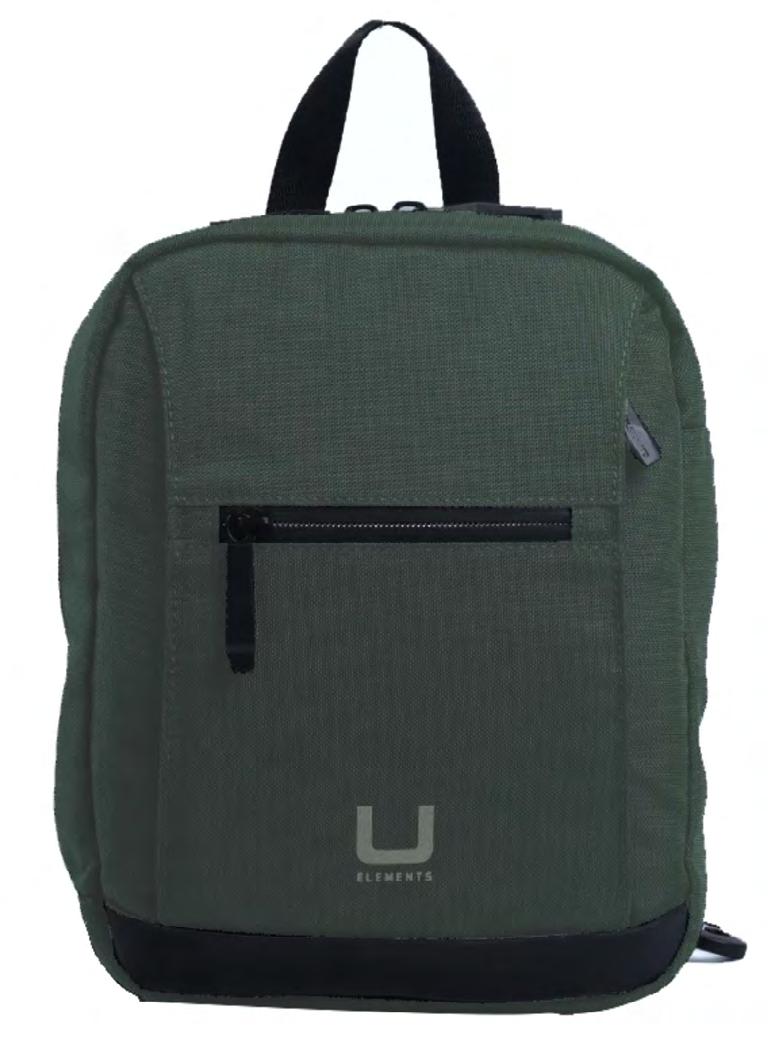
Perfect for both left and right hand wearers, this Crossbody Bag has all of our best features and more! Aside from being made with water-repellent material, it also has a number of pockets that will keep your things organized while being on-the-go!
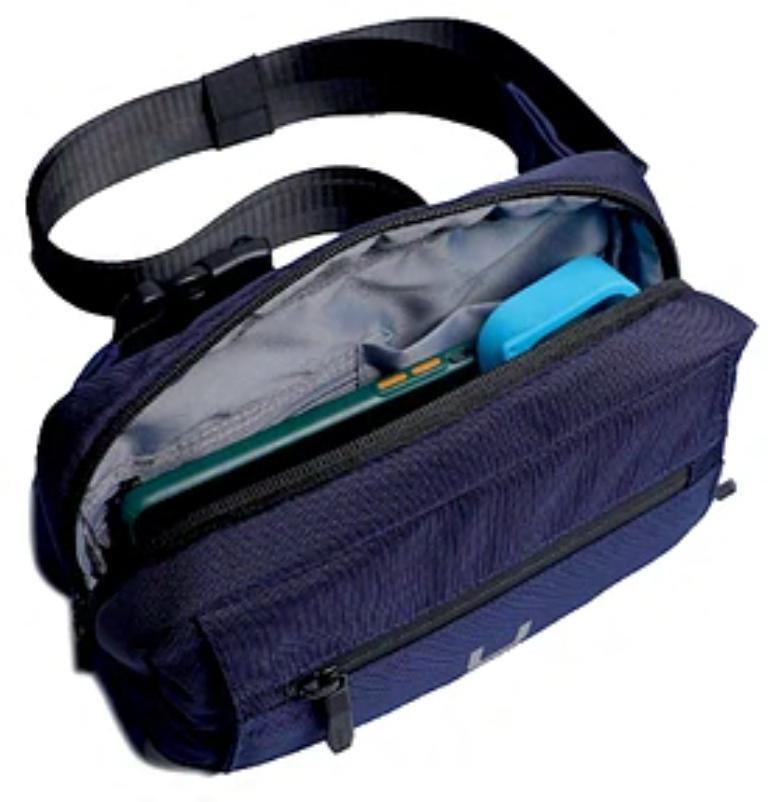

If packing light is your thing, this hip pack may just be your new best friend! With its 3L capacity, you can fit all the essentials you need for a quick getaway with your family or friends! It also has U Elements signature feature, the SafelightTM road safety reflective panel, as well as organizational pockets and garters to keep your things safe and in place!

Their next collection is for those who like to travel and connect with the great outdoors and immerse themselves in other cultures. The Urban Defender Collection is for everyone who’d like to keep their valuables safe wherever they may be!
With a whopping 26L storage size, this backpack is the perfect bag to bring when you want to go on a trip and connect with your friends, or even yourself! Its spacious main compartment can fit all your essentials and has different compartments and pockets to keep your things organized, including a separate compartment for a 15.6” laptop. But what makes this bag the perfect travel buddy is its anti-theft features such as the QuikLock self-locking/ releasing zippers and StrapGuard slash-proof straps that will keep your things safe!



With anti-theft features such as the ZipGuard zipper security latch and BuckleGuard dual-release buckle lock, this crossbody bag is the ultimate versatile bag perfect for both right and left hand wearers! Aside from its anti-theft features, it also has SafeLight, U Elements’ signature road safety reflective panel! It also has 2 zippered pockets on the front panel aside from its main compartment– providing more space for your stuff.
Don’t let its compact look fool you– this sling bag boasts of a 9L storage capacity which is more than enough for your essentials. This bag provides all-around safety as it is made with water-repellent materials and has anti-theft features like the QuikLock self-locking/releasing zippers and an RFID-blocking compartment on the back panel.
Small but mighty– that’s the mini version of the Urban Defender Sling Bag! Made with the same water-repellent materials and anti-theft features, and organizational properties, this is gonna be your newest go-to bag anytime, anywhere!
These two collections and more are available at U Elements. Visit them at Urbanize stores nationwide and SM Department Stores.
You may also purchase your U Elements fix at www. urbanize.com.ph, Lazada, Shopee, and Zalora! For more information, make sure to follow and like U Elements’ social media pages:
FB: https://www.facebook.com/urbanizeph IG: https://www.instagram.com/urbanizeph


since, not until last year when with the launch of the ASUS Zenbook S13 OLED (2022) model. I wasn’t able to test last year’s model, but when ASUS offered the new 2023 model, I knew that I couldn’t let the opportunity pass.
 REVIEWED
REVIEWED
In the looks department, I have never been this impressed with a laptop’s looks. The ASUS Zenbook S13 OLED has a plasma ceramic aluminum cover instead of a traditional aluminum cover. This new material gives the laptop a ceramic feel while maintaining its light weight.
The cover looks really good from near or far. The ASUS Zenbook S13 OLED comes in two color ways, Basalt Gray and Ponder Blue, and features a massive ASUS Zenbook Monogram logo. I think instead of having the monogram logo in silver-gray, ASUS could have opted for gold and the design would have looked 100x better – but that’s just me.


ASUS also noted that the ASUS Zenbook S13 OLED is also one of the most “green” laptops they have made. The chassis cover and bottom are made with post-industrial recycled aluminum. The speakers are made from recycled oceanbound plastics and post-consumer plastic.
Opening the laptop, you’ll be greeted with a 13.3-inch 16:10 2.8K OLED display. According to ASUS, the display boosts a massive 85% screen-to-body ratio, thanks to its four-side NanoEdge, which greatly reduces the already minimal bezels of its predecessor. The OLED display still has that gorgeous ASUS OLED quality that I have already grown to love. The display still has 100% coverage of the DCI-P3 color gamut, as well as being Pantone Validated, making it perfect for graphic sensitive works.
What makes the ASUS Zenbook S13 OLED stand out is its ultra-thin and light form. The whole laptop weighs just a kilogram and is a mere 1cm. It’s so thin and light that you wouldn’t even notice it in your bag when you carry it around.

Even though the laptop is a thin-and-light device, it’s not stingy with its ports. You have a full-size HDMI 2.1 port and two Thunderbolt 4 USB Type-C ports on the left. On the right is a USB 3.2 Type-A port as well as the 3.5mm combo audio jack.


Powering the ASUS Zenbook S13 OLED is an Intel Core i7-1355U processor with an Intel Iris Xe graphics. Our unit had 16GB of DDR5 RAM and 512GB of NVMe SSD.

The ASUS Zenbook S13 OLED was not meant to be a power machine so don’t expect it to game or handle intensive graphic work. That said, the ASUS Zenbook S13 OLED is still capable, as proven by the benchmark numbers. Geekbench 6 pegged it at 1935 for its single-core performance, and 3186 for multi-core. Cinebench R23 rated the Intel Core i7-1355U at 2013 pts for multicore, and 1046 for single-core. 3DMark NightRaid scored the Intel Iris Xe graphic 6665 and 5436 for the whole device.

For real world use, you can run some quick video editing or light photo editing, which definitely go well with that gorgeous 2.8K OLED display. I also tried some Valorant with it and all I can say is

if you want to game, the ROG Zephyrus Flow Z13 would be a better match for you.
In terms of battery, the ASUS Zenbook S13 OLED has a 63Whr batter in its tiny frame. This lasted a whole day of working around 7-8 hours, doing just MS Word, Chrome tabs (mostly for research and Youtube), and some Zoom calls from time to time.
Recharging the laptop utilizes one of the USB-C Thunderbolt 4 for the included 65W charger. Since it uses Type-C
charging I found myself utilizing the charger for both laptop and phone. You can also use a powerbank with PD to power the laptop but, unfortunately,I didn’t have one on hand during review to try it out.
What makes the ASUS Zenbook S13 OLED stand out is its ultra-thin and light form factor. Coming at a mere kilogram it’s lighter than Apple’s M2 Macbook Air series which weighs 1.24kg. It’s even
thinner coming in at just 1.09mm thin when closed.
Even though it is so tiny, I was still amazed that ASUS still found a way to fit a fan within the chassis. That said, while the fan greatly helps with the device’s thermals, it comes with the caveat of fan noise. When I subjected the laptop to benchmarks the fan ramped up, and the noise was noticeable.
Like most of the ASUS laptops I’ve recently reviewed the ASUS Zenbook S13 OLED has a great OLED display. Bingewatching movies and series on the laptop is something that I couldn’t get enough of. Speaking of movies, the speakers on the laptop were also great. Sound were full even at max volume, thanks to the sidemounted speakers that elevate when you open the laptop.
For those heavy typers, you’ll be happy to hear that the laptop has a full-size
keyboard. Typing is decent, similar to most small form factor laptops. That said the typing-feel is not something that I personally like since I want a deeper key travel distance. Another unexpected thing that I liked was the large trackpad. Most thin-and-light trackpads are often compromised to fit the size of the laptop; thankfully ASUS did not go that route.
Even though the laptop is small, the laptop is still durable. Like all of ASUS’ other lineups, the ASUS Zenbook S13 OLED has gone through military-grade testing.


Coming in at PHP79,995 for the Core i5 variant and PHP87,995 for our top of the line model, the ASUS Zenbook S13 OLED (UX5304) costs a pretty penny. But for what it offers against its competitors, I would say that the laptop is definitely worth every penny.
Display: 13.3-inch 16:10 2.8K (2880 x 1800) ASUS Lumina OLED display, Four-sided NanoEdge with 85% screen-to-body ratio, 550-nits peak brightness, 100% DCI-P3, DisplayHDR 500 True Black, Dolby
Vision
OS: Windows 11 Home
Processor: Intel Core i7-1355U
Graphics: Intel Iris Xe Graphics
RAM: 16 GB 5200 MHz LPDDR5
Storage: 512 GB PCIe 4.0 NVMe M.2
SSD
Other features: ASUS AiSense
Camera FHD 3DNR IR camera
I/O Ports: 2 x Thunderbolt 4 USB-C with full-range charging, 1 x USB 3.2
Gen 2 Type-A, 1 x standard HDMI 2.1, 1 x combo audio jack
Speakers: 2 built-in speakers / Harman Kardon-certified/Dolby Atmos sound system
Battery: 63 Wh lithium-polymer battery, 65 W Type-C power
Connectivity: Dual-band WiFi 6E (802.11ax) + Bluetooth 5.2
Dimension: 296.2 x 216.3 x 10.9
mm
Weight: 1 kg (approx.)
Great Display and speakers
Ultraportable form factor
USB-C charging
Only up to 60Hz refresh
Fan noise can get pretty loud under heavy load
A tiny but mighty laptop for those on the go.

GAMING HANDHELD
It’s not a console. Thanks for reading the review, we’ll catch you next time!
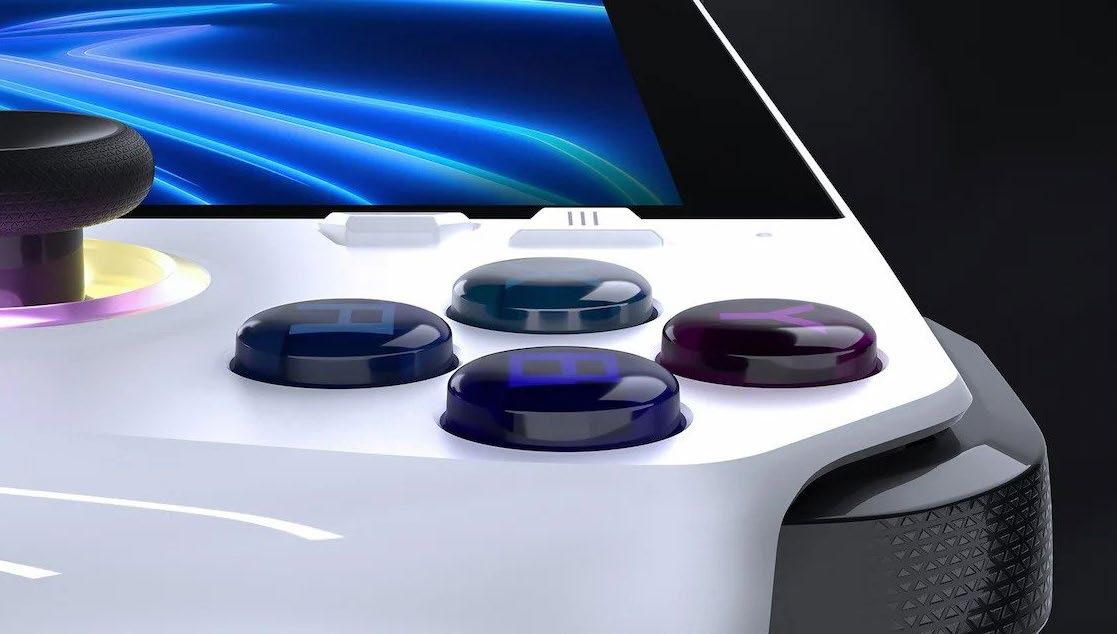
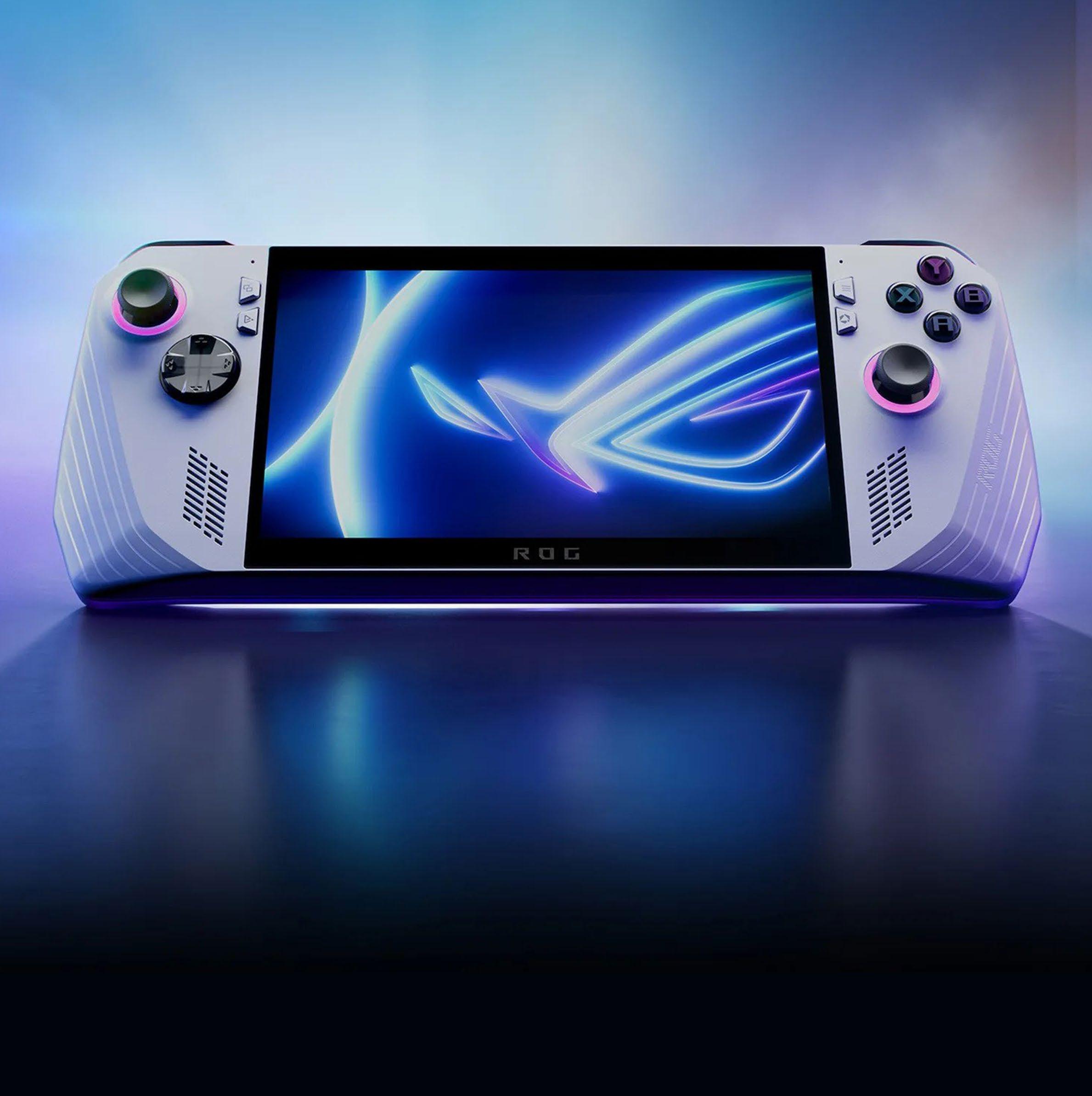
Ok, there’s more to the ROG Ally than that, but for better or worse, that opener is exactly what it is. If you’re interested in the device, keep reading, and see if it’s the next device for you.

For a device that has me all worked up about what it can do, I’m not particularly excited about how it looks. Sure there’s only so much you can do with a slab of plastic and glass, and I’m not really a fan of the “gaming” treatment on gaming hardware, but this strikes me as a little half-baked.
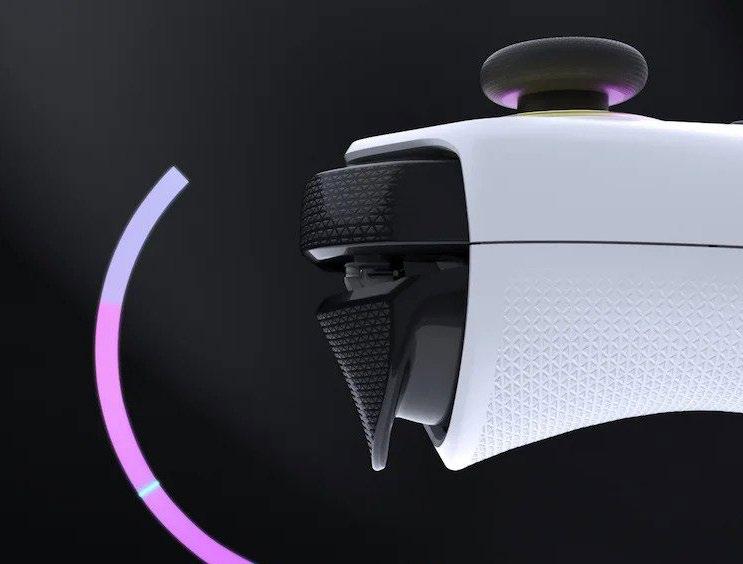

It’s done in plain white, with sticks and buttons on either side of the gloriously large screen, and I do appreciate the use of the cooling vents to show off the ROG design language, but it’s too busy to call understated, and too plain to call edgy.
There’s also the matter of the ports and buttons at the top, which I’ll get to more in the next section, but considering what it’s made to do, I feel like a little more thought could have been put into designing what is essentially a genre-defining device. A sub700-gram PC gaming device? Yes, please!
If you hadn’t been compelled to at least acknowledge what AMD has been doing for the computing market in recent years, it’s time to start. The Ally packs the Ryzen R1 Extreme processor. There’s no need to go into the details of the Z1E, but it’s a firecracker of a processor, and is a great choice for the platform. This is accompanied with 16GB of RAM, 512GB of solid state storage, and an absolutely gorgeous 7-inch, 120Hz, FreeSync display and variable refresh rate to make the most of the screen.
Audio is handled by two front-firing speakers, underneath the generously sized controls, and the power button even has a fingerprint scanner, for one-touch login. It even comes with a 3.5mm audio jack. Nice.

The device has a 40WH battery, which is large, but battery size is relative, and in this case, I’d hesitate to call it anything more than “adequate.” Upgrading the 512GB SSD is quite simple, and Asus themselves gives you a guide, which is quite a refreshing change.

Before grabbing for the pitchforks and torches saying I’m some sort of ROG shill, let me say that as a gaming device, it’s a few blocks away from the neighborhood of perfection. HOWEVER, if you view this as more than just a dedicated portable gaming device, then you can really see the appeal.

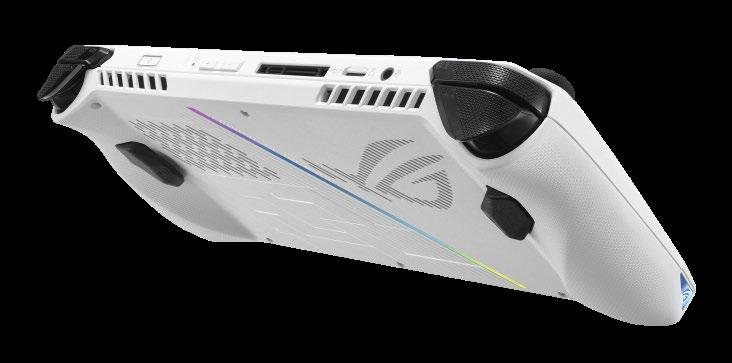
But before that, let’s go over some of the basic stuff. First: It’s a full Windows 11 device that does Windows 11 device things. There’s a desktop, a start button, and a taskbar, just like your laptop or desktop. Second: It’s not a console. It runs Windows, and has all the good and bad of the OS. Third: it has a hefty serving of what some might call bloatware, but since it’s such a niche, cutting-edge device, it’s probably better to leave all the extra software on there for now.
Before I start singing its praises — and trust me, I will — let me go over some of the points that give me a bit of an itch.
The placement of the USB-C port is annoying. Yes, it’s great that it’s at the top, and I understand the reason for it being beside the proprietary XG port, but because of how it’s laid out, it’s frustratingly difficult to plug the charger in without looking, and given that a lot of the time, I play in bed with the lights out, plugging in to charge while I sleep is more difficult than it should be.
The inclusion of a fingerprint scanner within the power button is great so users don’t have to change their grip and tap
at the screen to enter a password, but it’s almost perfectly flush with the top of the device, so it can be hard to feel for when trying to power the device on. Again, this is especially true in the dark. It feels like they spent a lot of time working on all the other parts of the device, that these little details got missed.
All of this is more than made up for by what the Ally can do. I’m subscribed to Xbox Gamepass so I can, at my leisure,
look through the library at all the games I don’t have time to play. Among those titles is Starfield. I have tweaked the settings enough to get impressive graphics while maintaining upwards of 30FPS on the most congested parts. Even when the framerate dips, there’s no tearing thanks to VRR, so the dips aren’t even really noticeable. I mostly game on the 15W setting, at 720P, and I honestly enjoy every second of it.
Which is good, because you can’t really get very many of those seconds. I can manage a little over an hour of gameplay before the battery gives up. There’s really only so much power you can cram into a device this size, so I’m not really complaining, but if you’re looking for Switch-level play time, you’re going to be disappointed. Still, it’s an amazing experience while it lasts, thanks to responsive controls, that gorgeous screen, and the wow factor of being able to play these titles on such a small device, along with speakers that punch several divisions above their weight class.
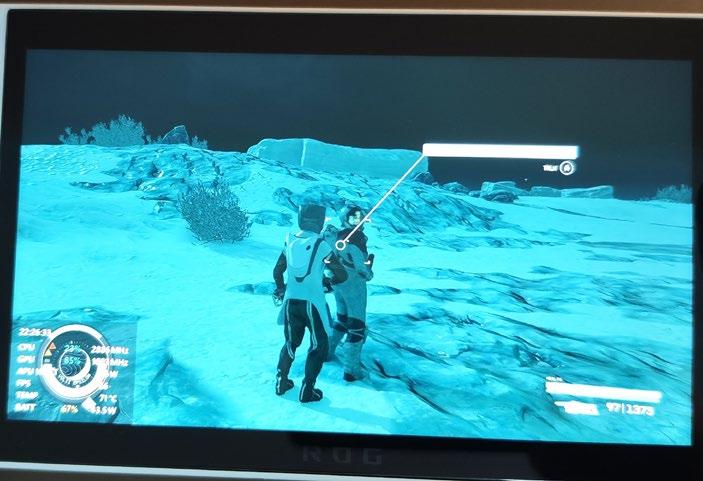
There’s more to the Ally than gaming though. One of the things that really makes this device shine is the fact that it runs Windows 11. This gives you access to all the functionality of any other Windows 11 device. I have been writing this review at various tables, using an iPad as a display thanks to third-party apps, and a wireless mouse and keyboard. That in itself isn’t that big a feat, but once you realize it’s still a powerful gaming device on its own, and it’s replacing a heavy gaming laptop, then
it starts to make sense. Keep a monitor, mouse, and keyboard at your desk, and the small footprint pops right into a small bag, ready to be pulled out for gaming whenever you can spare a moment. With an external display, you’ll get well over 4 hours of work between charges at lower wattages.
At almost PHP45,000, the Ally is several blocks removed from being called “cheap,” but considering what it can do in terms of gaming and productivity, it’s actually a pretty good deal. To be fair, it’s not for everyone. If you’re looking for a consolelike fire-up-and-play experience that works without much work, this might not be for you. This is a device that will best
serve enthusiasts, particularly given some of the quirks a first-generation device will necessarily have. If you’re willing to work for your portable gaming experience, this is your sign to jump in.
Processor:
CPU: AMD Ryzen Z1 Extreme Processor (“Zen4” architecture with 4nm process, 8-core /16-threads, 24MB total cache, up to 5.10 Ghz boost)
GPU: AMD Radeon Graphics TDP: 9-30W
Display: 7-inch, FHD (1920 x 1080) 16:9, Touch Screen,

Refresh Rate: 120Hz
Response Time: 7ms
Brightness: 500 nits
Memory: 16GB LPDDR5
Storage: 512GB
Can legitimately work AND play with the right extras
AAA titles natively, on the go VRR really lets you enjoy the display
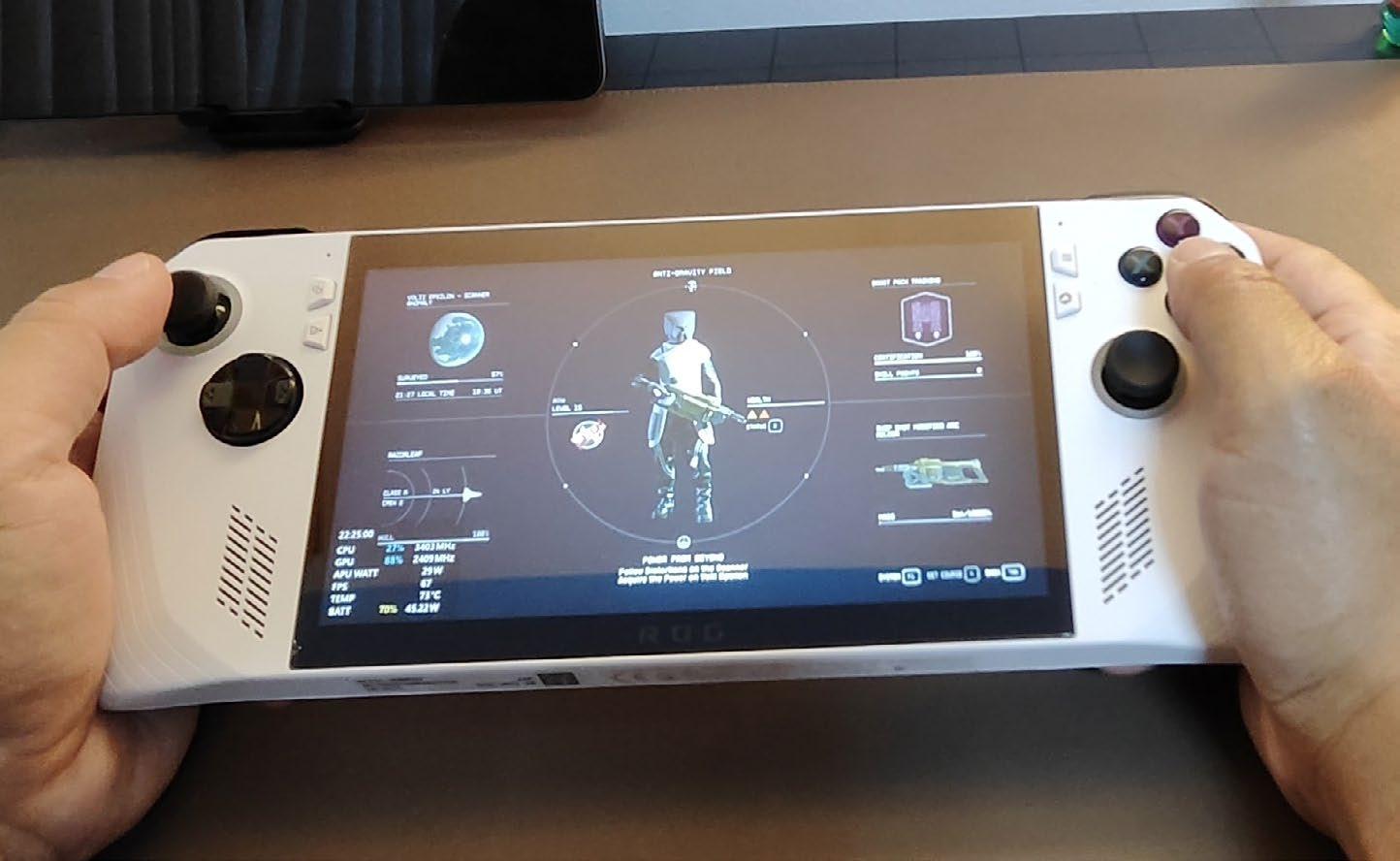
Rewards people who really want to push it to do more Battery life is short Not as easy to use as a gaming console.
If you’re willing to put in some work, it’ll serve you really really well.

It’s been a while since I’ve used a phone below PHP10,000, so my expectations for the vivo Y27 were modest. Still, over the course of my time with it, the phone surprisingly grew on me. It’s not perfect by any means, but it does well in most of the things that count toward being a good daily driver, such as gaming, battery life, and multitasking. Read on for my detailed thoughts on this new budget mid-range device from vivo.
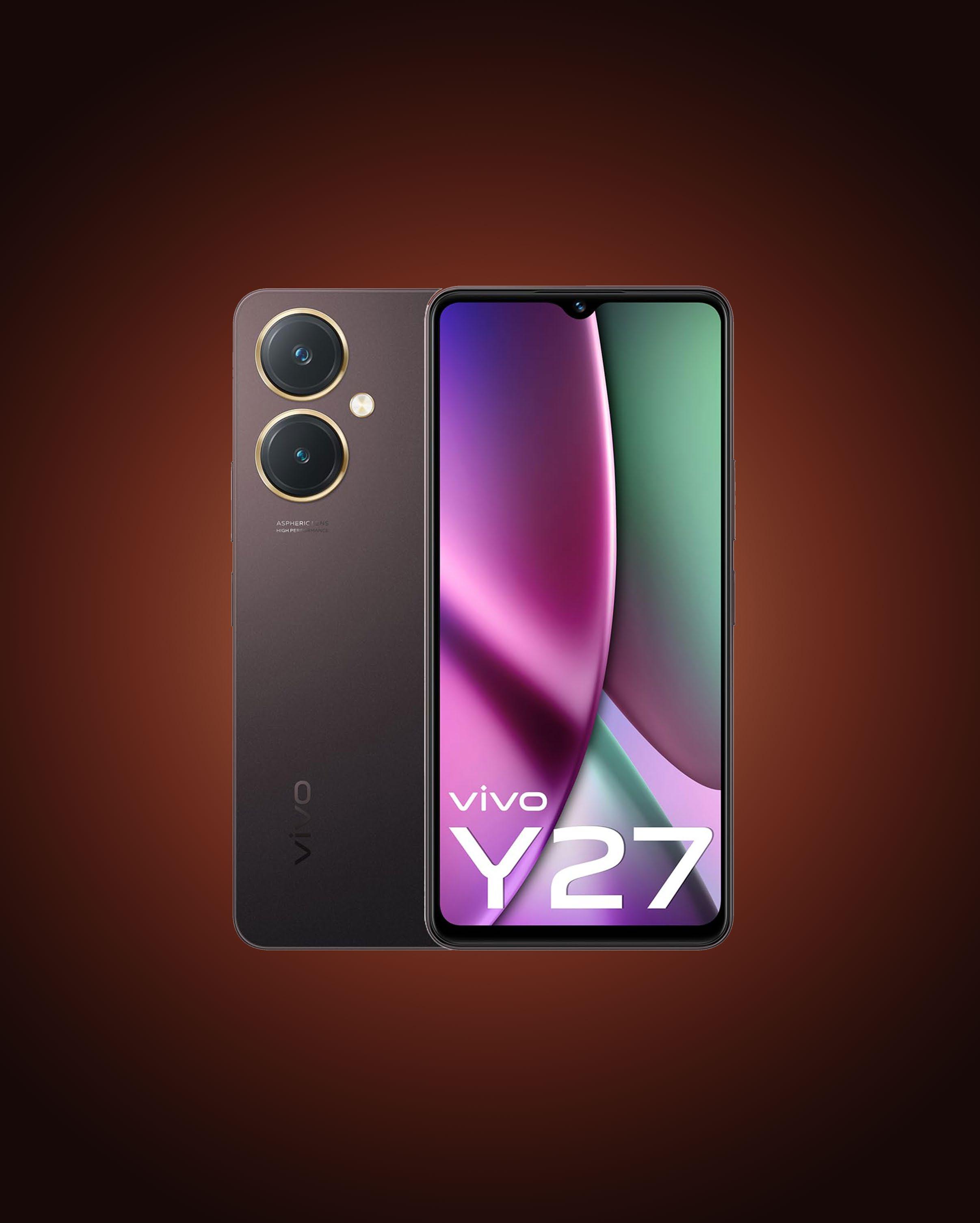 REVIEWED
REVIEWED
Our vivo Y27 review unit came in Burgundy Black which looks dark and muted at first, but shimmers in a pretty burgundy when hit by light. It comes in a scratch-resistant matte finish.

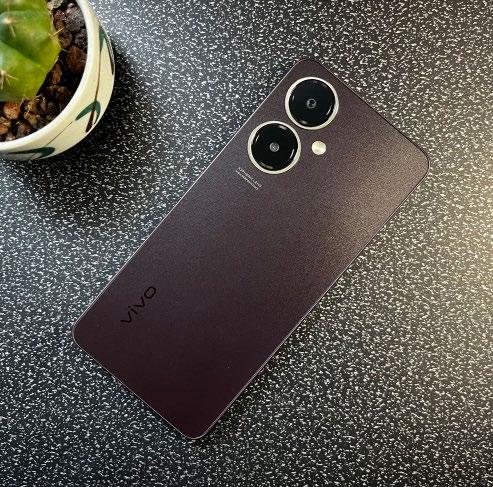
Taking a tour of the vivo Y27, the back is populated with an etched vivo logo on the bottom left with the camera module sitting on the upper left. Specifically, the phone has two huge camera assemblies— the 50MP main camera being the topmost and the 2MP depth camera sitting below it—flanked by a lone flash module on the right. Around the edges, you’ll find the left side bare, while the right houses the volume rocker and fingerprint-enabled power button. At the top edge is an ejectable tray that takes up to two nano SIM cards plus a dedicated microSD slot. Lastly, the bottom contains a 3.5mm headphone jack, microphone pinhole, USB Type-C port, and speaker grille.
The phone’s face has a 6.64-inch display occupying 85.4% of the screen with a teardrop notch for the 8MP front camera. If you look really closely, you can just barely make out the call ear speaker grille along the top side.
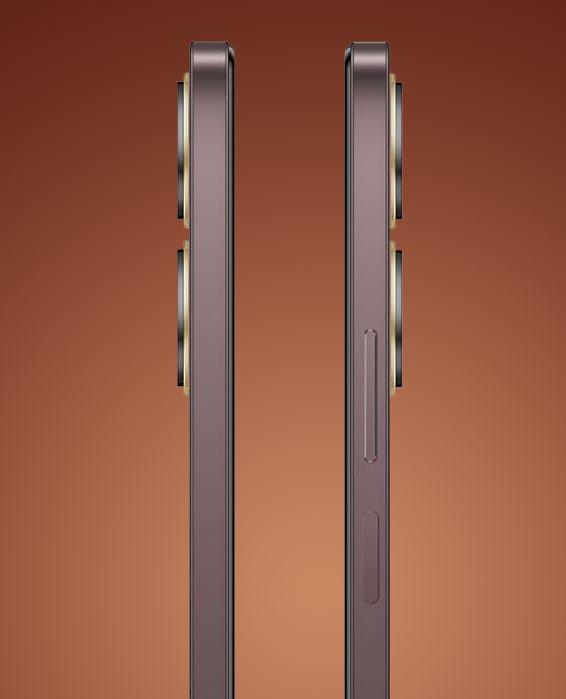
The vivo Y27 comes equipped with an octa-core MediaTek MT6769 Helio G85 clocked at 2.0GHz on the two faster cores and 1.8GHz on the rest, with a Mali-G52 MC2 GPU dedicated to running graphics. While the three-year-old SoC is definitely nearing the end of its welcome, it should still perform decently in most everyday tasks. It is backed by 6GB of dedicated RAM and 6GB of extended RAM which uses part of the phone’s 128GB internal storage to serve as an additional buffer for running more apps. Should you need all the storage you want, you’ll be glad to know that the phone is microSD expandable up to 1TB.
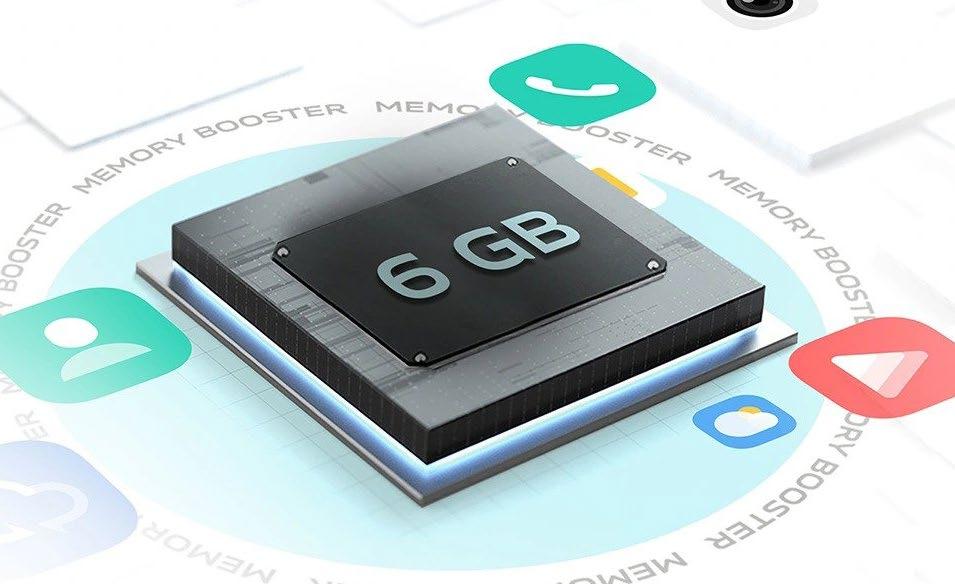
The display is a 6.64-inch 2388 x 1080px IPS Full HD panel with up to 600nits of brightness. The cameras at the rear are spec’d at 50MP f/1.8 for the main and 2MP f/2.4 for the depth, along with
an 8MP f/2.0 selfie shooter at the front. Powering the phone is a 5000mAh battery pack chargeable by the included 44W fast charger. To help with costs, the vivo Y27’s body is made out of 2.5D plastic. Still, it feels solid in hand with no flexing anywhere and is even rated IP54 dust and water-resistant.
Overall, it’s pretty standardly kitted for this segment, but the 44W fast charging capability and IP54 rating makes the vivo Y27 stand out.
Given the vivo Y27’s price point and spec sheet, I did not expect the phone to blow me away with its performance. Given this, I was pleasantly surprised with how it fared in everyday use, gaming, and battery life.
As a daily driver, the vivo Y27 was able to do all I needed it to do. App load times were decent. Switching between apps was quite smooth as well, and there was virtually no app reloading when switching between popular social media apps. Viewing multimedia on the vivo Y27 was also enjoyable thanks to its large screen and decently loud speakers.
For performance benchmarks, the phone scored 6,742 in the PCMark Work 3.0 Performance test; 727 in the 3DMark
Wild Life test with an average frame rate of 4.35; and 403 and 1,186 single and multi-core scores, respectively, for the Geekbench 6 CPU Benchmark. These scores translate to a decent gaming experience.
Asphalt 9 ran smoothly on the highest graphic settings even with tons of particle effects happening on screen. For MOBAs, both Mobile Legends and Pokémon Unite ran smoothly even on high graphic preset settings. Call of Duty Mobile was limited to medium graphics and High frame rate settings as the maximum selectable, but gameplay was generally smooth across both Multiplayer and Battle Royale modes. However, if you’re the type who desires the finest precision control over your reticle, then be warned that hiccups here and there are inevitable. Dropping to lower graphic settings resulted in a smoother experience, though. Diablo Immortal is playable at Very High graphics quality preset with image sharpening turned on, even with mobs of monsters around. However, the vivo Y27 only supports image accuracy up to Medium and frame rate up to 30—higher settings are inaccessible. Lowering graphics settings and reducing eye candy led to a more consistently smooth performance in the world of Sanctuary.
The vivo Y27 features the Ultra Game Mode and Multi-Turbo 5.5

sidebar which boosts performance by minimizing non-gaming related loads and dedicating resources to the game on screen. Select games are also supported by the phone’s Frame-rate Priority setting which renders images at a lower resolution to improve performance. Using this for Call of Duty Mobile and Diablo Immortal, I found the gameplay to be much smoother although graphics were not as crisp versus this setting off.
In terms of battery life, the vivo Y27 lasted well over 13 hours in the PCMark Work 3.0 Battery Life test where the phone went from 100% to 20% battery with airplane mode on, screen at 50% brightness, and volume at full blast. In real-world use, I was consistently able to go a full day with data and Wi-Fi hotspot always on, and intermittent social media use, gaming, browsing, and taking photos. When I did need to charge it, the vivo Y27 took around just one hour to go from 0 to 100% using the bundled 44W Fast Charge power brick and Type-C cable.
Given its price point, the vivo Y27’s imaging capabilities are to be expected. When in brightly lit environments,
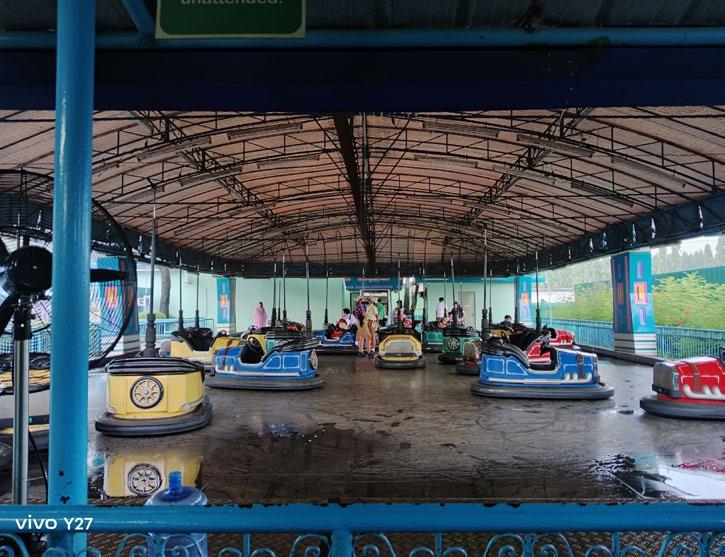


photos are good enough for social media use. However, like most of its peers, it is challenged by less than ideal scenarios, such as dim lighting, high contrast, or wide dynamic range situations. Good thing that the vivo Y27 comes with a Super Night Mode shooting option which allows it to pull in more light for betterlooking images, as long as you can hold the phone still for a few seconds. The video outputs are also quite okay, though the resolution only goes up to 1080p at 30fps for both front and rear shooters.
Overall, the vivo Y27 is a good phone with a competitive price tag of PHP 8,999. It performs well for everyday use and even has some gaming chops to spare. The screen is huge and bright making it great for consuming multimedia. The 44W fast charging capability is one of the fastest in this segment and it’s even rated IP54 dust and water resistant. It only really underwhelms with its shooters, but for everything else, it’s properly decent. If your budget maxes out at PHP 9,000 and you want to squeeze every last bit of value out of it, then definitely consider the vivo Y27.
Display: 6.64-inch 2388 x 1080 px Full HD IPS display
Processor: MediaTek MT6769 Helio
G85 with Mali-G52 MC2 GPU
OS: Funtouch 13 (Android 13)
RAM: 6GB + 6GB Extended RAM
Storage: 128GB, microSD
expandable up to 1TB
Camera: 50 MP, f/1.8 (main rear); 2MP f/2.4 (depth rear); 8MP f/2.0 (front); rear flash
Connectivity: 4G LTE; Wi-Fi 5; Bluetooth 5.0; GPS; USB Type-C; dual nano-SIM, dual standby
Battery: 5000mAh, 44W vivo Fast Charge
Others: Side-mounted Fingerprint Scanner; 2.5D Plastic Material; IP54 dust and water-resistance
Dimensions: 164.1 x 76.2 x 8.1 mm
Weight: 190g
Colors: Burgundy Black and Sea Blue
Huge battery with one of the fastest charging standards at this price point
Screen is nice and bright
Handles demanding games surprisingly well
Solid plastic build
Processor is really showing its age
Entry-level cameras
get the job done.
It’s not perfect, but the vivo Y27 will
hen we tested the vivo Y36 earlier this month, one of the things that stood out was its imaging capability. It served as a very viable shooter to use for moments when whipping out a big, bulky camera was too cumbersome. Whether you are a blogger or a vlogger, here are the reasons why the vivo Y36 is a worthy component in a content creator’s arsenal.

It has a 50MP main shooter with Super Night Algorithm technology and software-based video stabilization


The highlight of the vivo Y36’s shooting prowess is its 50MP f/1.8 main camera. In our testing, it performed quite nicely across most scenarios, from sunny outdoor environments to well-lit indoor locations. With HDR on, images can come out looking great and will not be out of place in a curated social media feed. Photos were sharp, with pleasingly saturated colors, and with reasonable dynamic range for the highlights and shadows. This equates to drool-inducing food shots, awe-inspiring landscape photos, and like-worthy fashion shoots. For less-than-ideal lighting situations, the vivo Y36 also comes with Super Night Algorithm technology where it is able to let in more light than normal— as long as you are able to hold your phone steady for a few seconds.
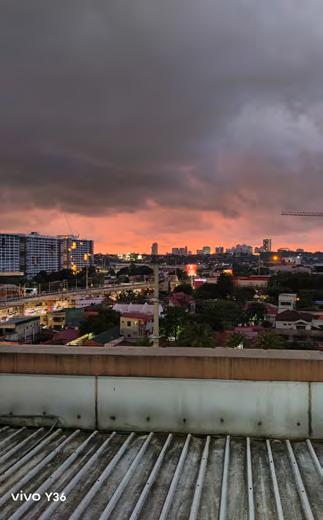





If you are more inclined towards videos rather than photos, you will be glad to know that the vivo Y36’s main shooter comes with electronic image stabilization (EIS) for footage up to 1080p at 30fps or 720p at 60fps. While it is not the highest recording resolution out there, it does work well enough for popular short-form video platforms and video-sharing services. The EIS also works decently without too much artifacting and jittering even when walking haphazardly. Audio quality is great as well, making the vivo Y36 quite ideal for handheld vlogging.


Better still, there is a 2MP depth camera at the back to give you cinematic looking shots with shallow depth of field, i.e. smoothly blurred foregrounds and backgrounds.
 vivo Y36 video with EIS on
vivo Y36 video with EIS on
The vivo Y36’s front shooter is a 16MP f.2.5 camera which takes decent shots under most lighting conditions. The camera software also comes with a whole suite of features which will make your selfies even more eye-catching, including various creative filters, beauty mode, and even Portrait mode for smooth-looking background blur. The beauty mode is on by default, so make sure to either turn it down or turn it off completely if you want the most natural-looking shots. For low-light and even lightless scenarios, the vivo Y36 has the Aura Screen Light feature to ensure well-lit and clear selfies in the dark.


Like the rear camera, the selfie videos of the vivo Y36 max out at 1080p at 30fps which should be plenty for vlogging purposes.

What use is a great camera phone if it runs out of juice halfway through your shoot? Not only does the vivo Y36 come with a very power-efficient Snapdragon 680 taking care of the processing of your photos and videos, it is also kitted with a 5000mAh battery. In our testing, it was easily able to last around two days of intermittent photo and video taking, a runtime which is more than plenty for day in the life types of content. Trust us when we say you will run out of ideas on what you want to shoot before the vivo Y36 runs out of battery. It does not get too hot either even when you record really long videos, which is a plus for user comfort as well as overall battery health in the long run.

The vivo Y36 also ships with an included 44W fast charging power brick and USB Type C cable to make sure your downtimes are as short as possible. Branded with “Flash Charge” technology, the vivo Y36 took a mere 30 minutes to go up to 50% battery and just around an hour to top up all the way to 100%.
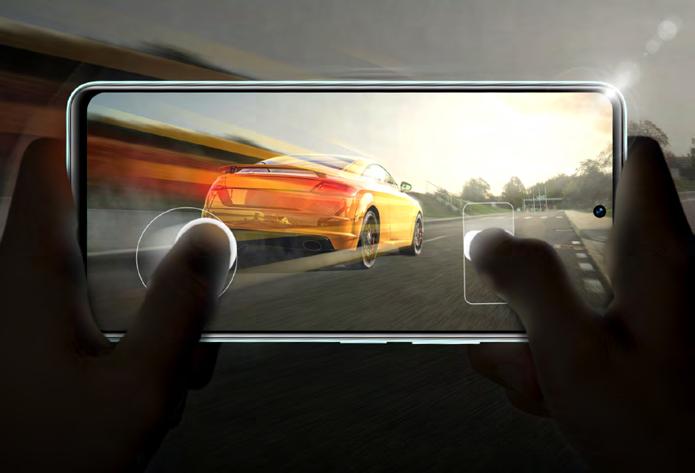
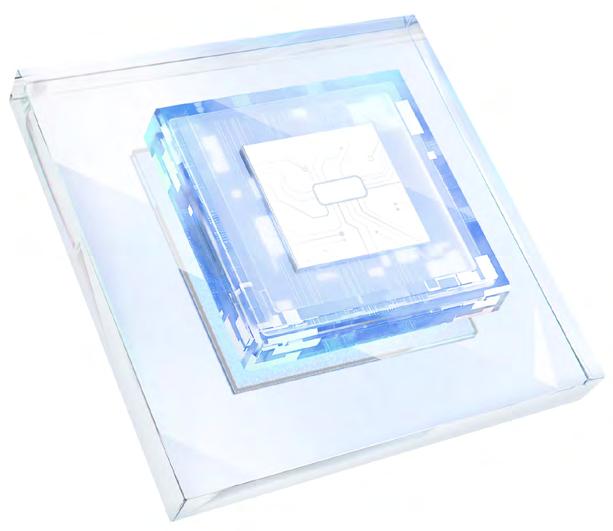
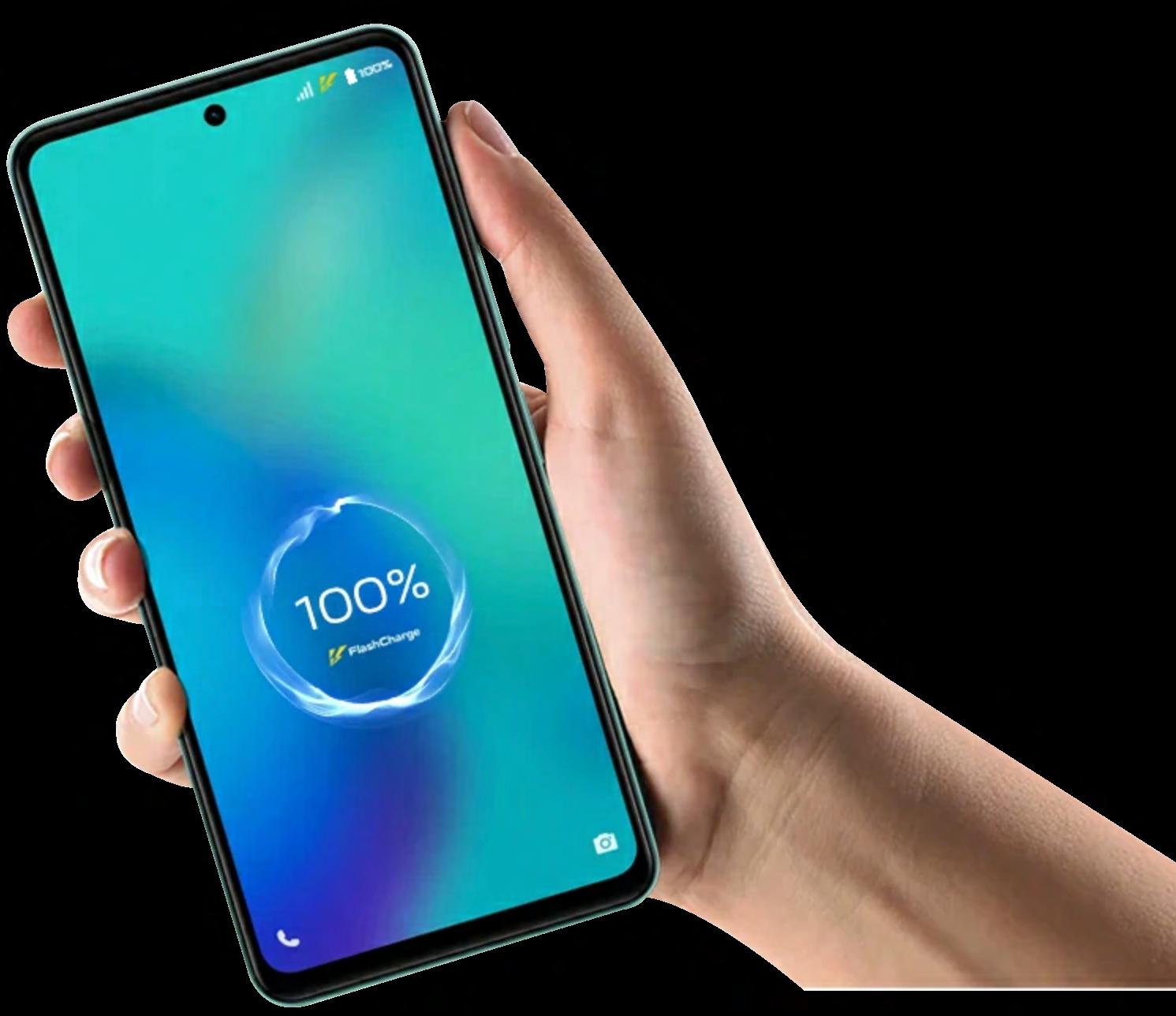
Highly efficient processor, huge battery, and fast charger means you can shoot on and on (and on and on)

Finally, the vivo Y36 is one good-looking piece of hardware that is guaranteed to turn heads whenever it is whipped out. Available in Glitter Aqua and Meteor Black colorways, it features a svelte form factor with an easy-to-handle 2.5D curved design and fluorite anti-glare glass that gives it a truly unique look. The review unit we had came in the former and was particularly great to look at with its sandblasted back panel which sparkles when it catches the light.
Given the above features plus an affordable price tag of just PHP 12,999, the vivo Y36 is a great device for both bloggers and vloggers, and both aspiring and seasoned content creators. It is available for purchase through vivo Concept stores and kiosks, phone retailers, and the official vivo website, Shopee, Lazada, and Tiktok online platforms.

THE ALL-NEW CR-V COMES WITH NEW HONDA TECHNOLOGIES – E:HEV FULL HYBRID POWER TRAIN, VTEC TURBO, AND ”CONNECT”

In a recent launch event, Honda Cars Philippines officials led by its president Rie Miyake presented the full details of the all-new 6th generation CR-V. Apart from the familiar Honda SENSING, the CR-V lineup comes with new technologies for the Philippine market.

First, the top-of-the-line variant is powered by what Honda proudly calls e:HEV full-hybrid system that combines the benefits of a gasoline engine (148ps, 183Nm) and electric motor (184ps, 335Nm). While the electric motor operates throughout the low- to highspeed range, e:HEV relies on the gasoline engine alone for high-speed cruising.
The e:HEV full hybrid system operates in three modes: EV Drive mode runs solely on battery power, Hybrid Drive
mode shifts between the electric motor and the engine, and Engine Drive Mode. The ability to run on individual power modes separates this full hybrid electric system from the other hybrids in the market.
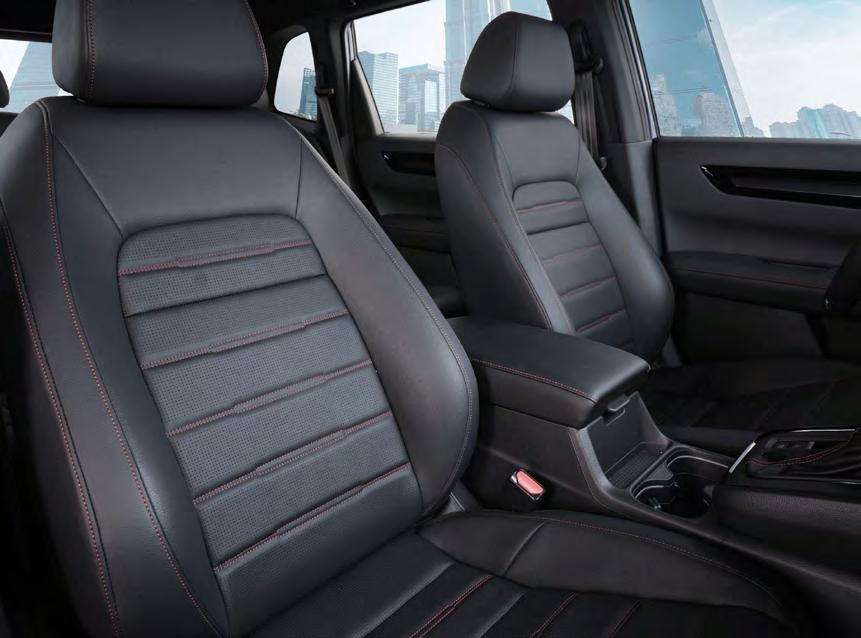
The e:HEV is also a self-charging system. Through a regenerative braking system and traction motor, the system can harvest energy from braking and deceleration and recover friction losses that would otherwise be unused.

This helps extend the car’s electric power range and further optimizes fuel economy. The battery can also be recharged with the engine serving as a generator to keep the electric drive system primed and ready at a moment’s notice.
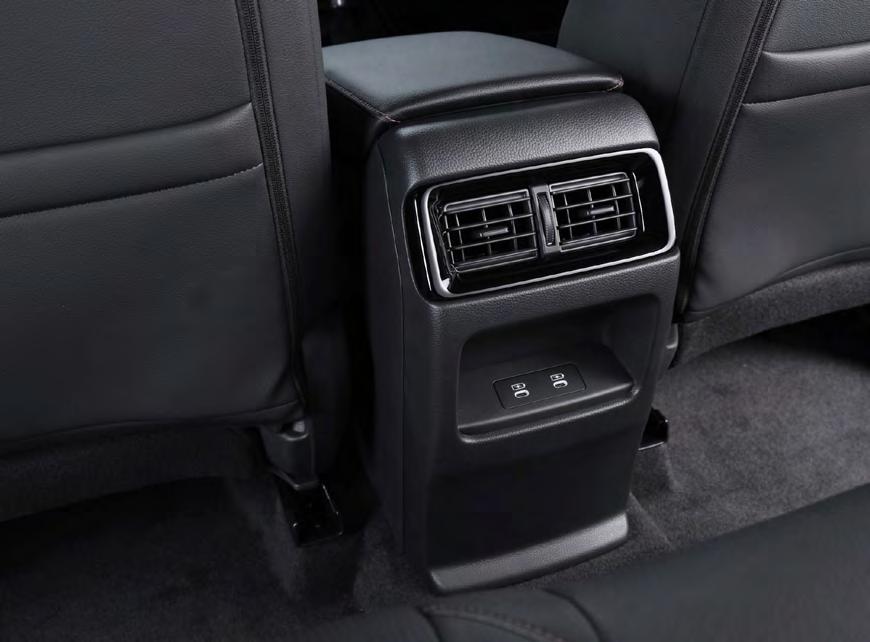

The result is high fuel efficiency for the e:HEV variant, which Honda claims to reach 29.4KM/L in urban driving, as reflected in test results based on the United Nations Regulation 101 uniform provisions concerning the measurement of fuel consumption of vehicles.



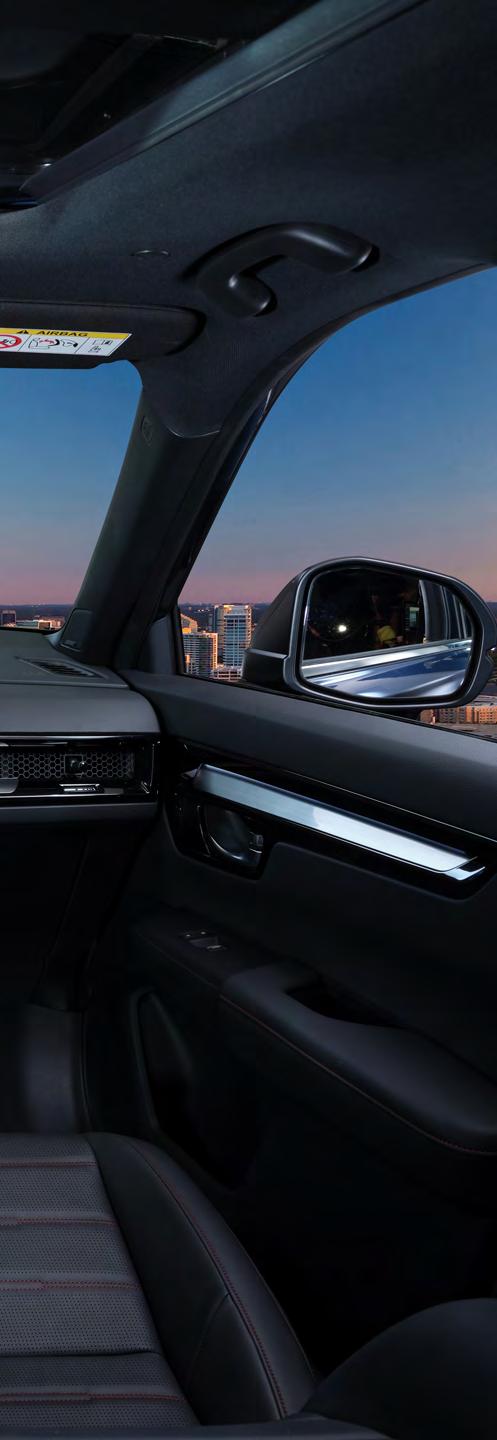
Another first for the Philippine market is a turbocharged gasoline engine that powers the 1.5 V Turbo CVT and 1.5 VX Turbo CVT AWD. It uses the 1.5-liter Direct Injection DOHC VTEC engine that blends power and economy. It features a new high-efficiency, highresponse turbocharger and enhanced exhaust system that helps the engine maintain peak power over a wider power band. The result is 190PS of power and 240Nm of torque, making
it the most powerful gasoline-powered CR-V to date.
Also new is Honda CONNECT. Using smart telematics technology, it allows a seamless connection between users and their cars via a smartphone application. CONNECT enables customers to communicate with their vehicle, check its status, and even be notified of alerts with a smartphone. By introducing this technological advancement, Honda strives to enhance user quality of life as it promotes greater safety and security, as well as comfort and convenience — all free-of-charge for three years.
Enhancing the All-New CR-V’s safety features are Automatic Collision Detection, Security Alarm Detection, and Speed Alert. Automatic Collision Detection automatically detects collisions and calls for help to ensure timely assistance whenever required. Security Alarm Detection sends an alert when the alarm is triggered by trespassers, while Speed Alert allows the owner to keep an eye on how their vehicle is being driven through a series of notifications if the speed limit is exceeded.
CONNECT’s security features include Find My Car, Geofencing Alert, and Emergency Call. Find My Car helps avoid situations wherein the owner has difficulty locating their vehicle by sending a pin location to their mobile device. Geofencing Alert notifies the owner if their car was taken beyond a set area limit, while Emergency Calls makes it easier to access emergency contacts through the app.
As for CONNECT’s convenience features, it includes Car Status, Remote Vehicle Control, and Service reminder. Car Status alerts the owner about anything that requires attention and doubles as the vehicle’s diagnostic support system. This feature can also remotely check the fuel level, battery, lock, and airbag status.

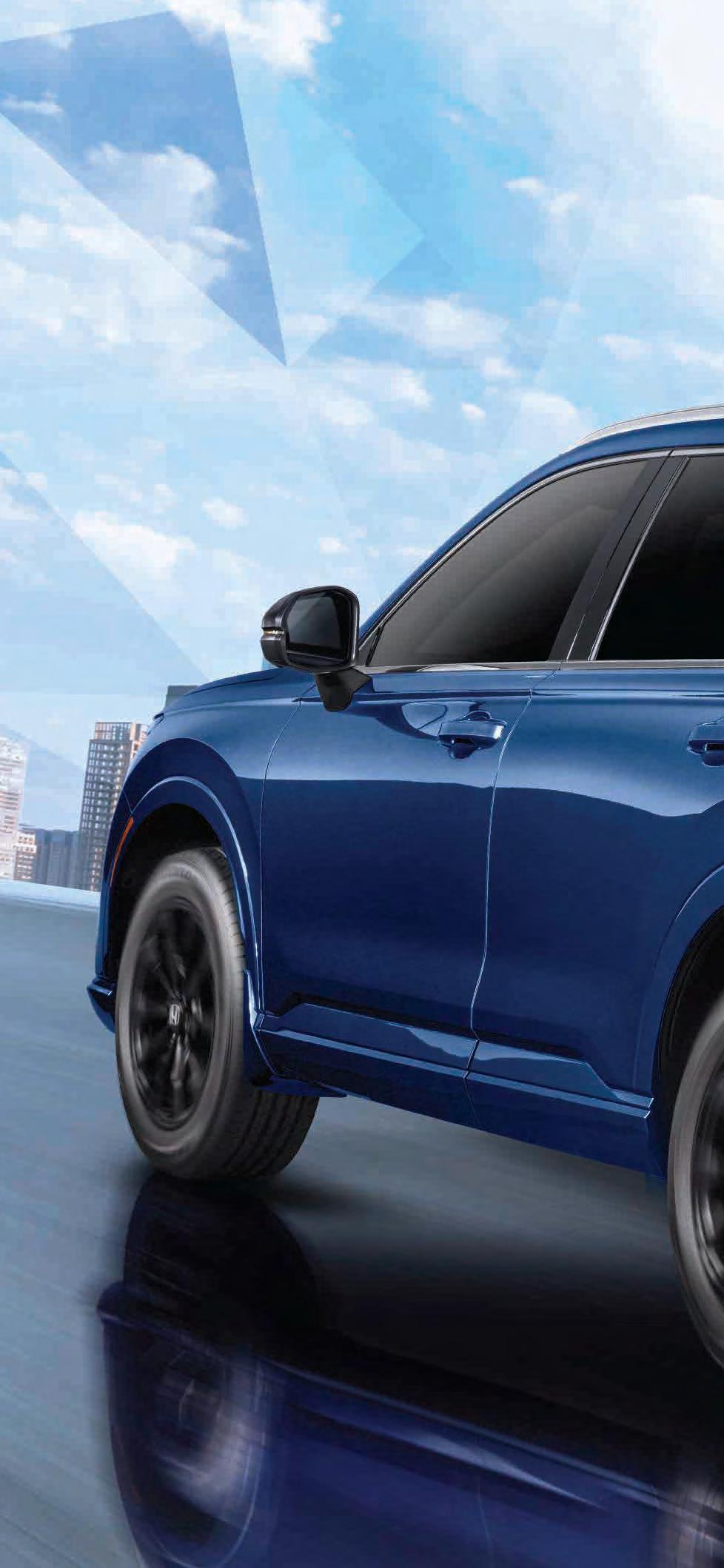
Retail prices for the All-New CR-V lineup are:
• 2.0 RS e:HEV E-CVT – PHP 2,590,000
• 1.5 VX Turbo CVT AWD – PHP 2,280,000
• 1.5 V Turbo CVT – PHP 2,100,000


NLEX Corporation has partnered with Chevrolet Philippines to promote the sights, sounds, and flavors of Pampanga, as well as, the active and adventurous travel offerings of Zambales through its Lakbay Norte program.
Now in its 12th year, Lakbay Norte is a media familiarization tour that aims to spark travel interest to the north by creating a sensory experience of wander and excitement.



“With this partnership, more discoveries are expected to boost tourism in the north and help local businesses in the area, all of which will contribute to the country’s economy as well.”
In the recent Lakbay Norte attended by 18 members of the media and content creators, participants enjoyed Pampanga’s breathtaking landscapes and top gastronomic finds with Chevrolet’s crossover SUVs, the Trailblazer and Tracker. Known as one of the most popular destinations in Central Luzon, the province provides the best destinations and awe-inspiring activities for those who want to unwind and discover fun adventures that will surely liven up their senses. It also offers delectable and mouthwatering Kapampangan dishes for those who want to fill their tummies.

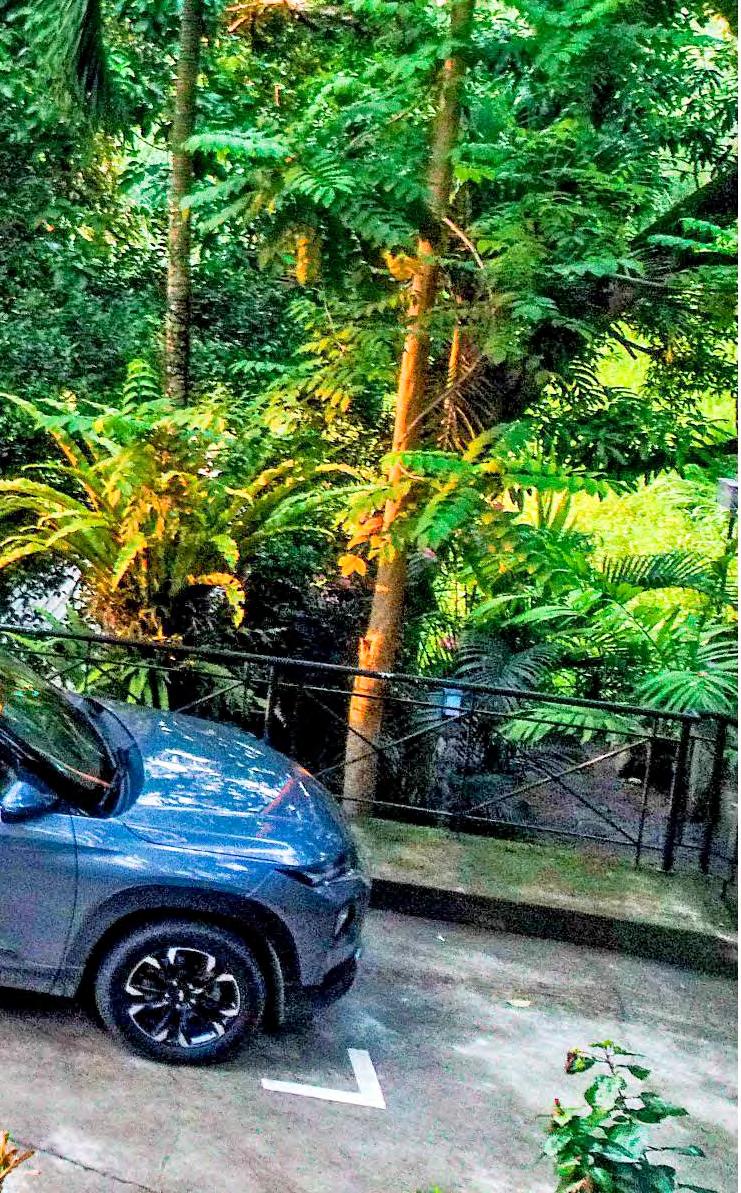
For the Zambales leg of NLEX Lakbay Norte, the featured crossover SUVs from Chevrolet took them to coastal and mountain range destinations with such ease and comfort. The group traveled to majestic mountainscapes, experienced thrilling nature activities, and enjoyed the captivating beach coves of the province. And there was no better way to cap off their fun-filled visit than to relax and chill at the Subic Bay Freeport Zone where restaurants and cafés offer the most delectable comfort food and refreshing coolers!
“We are happy and grateful for this partnership with Chevrolet Philippines - TCCCI as we share the same thrust of bringing the best and most meaningful journey experience for the motorists,” said NLEX president J. Luigi Bautista.
“Chevrolet Philippines is glad to be the official mobility partner of NLEX for this travel and tourism program.” Chevrolet Philippines –TCCCI EVP & Director Lyn Buena said. “We’re excited to explore more local destinations, discover unique experiences and find new roads that are worth traveling in the Lakbay Norte series.”
With this partnership, more discoveries are expected to boost tourism in the north and help local businesses in the area, all of which will contribute to the country’s economy as well.
Chevrolet Philippines has over 19 dealerships nationwide and has a variety of vehicle models to choose from, depending on your lifestyle and needs.
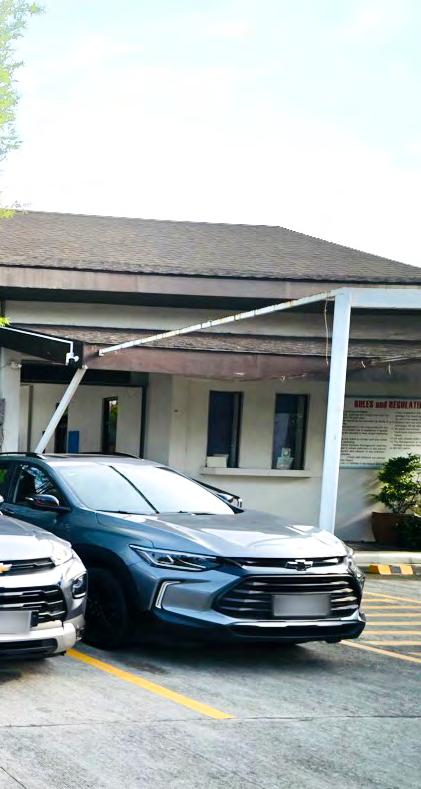
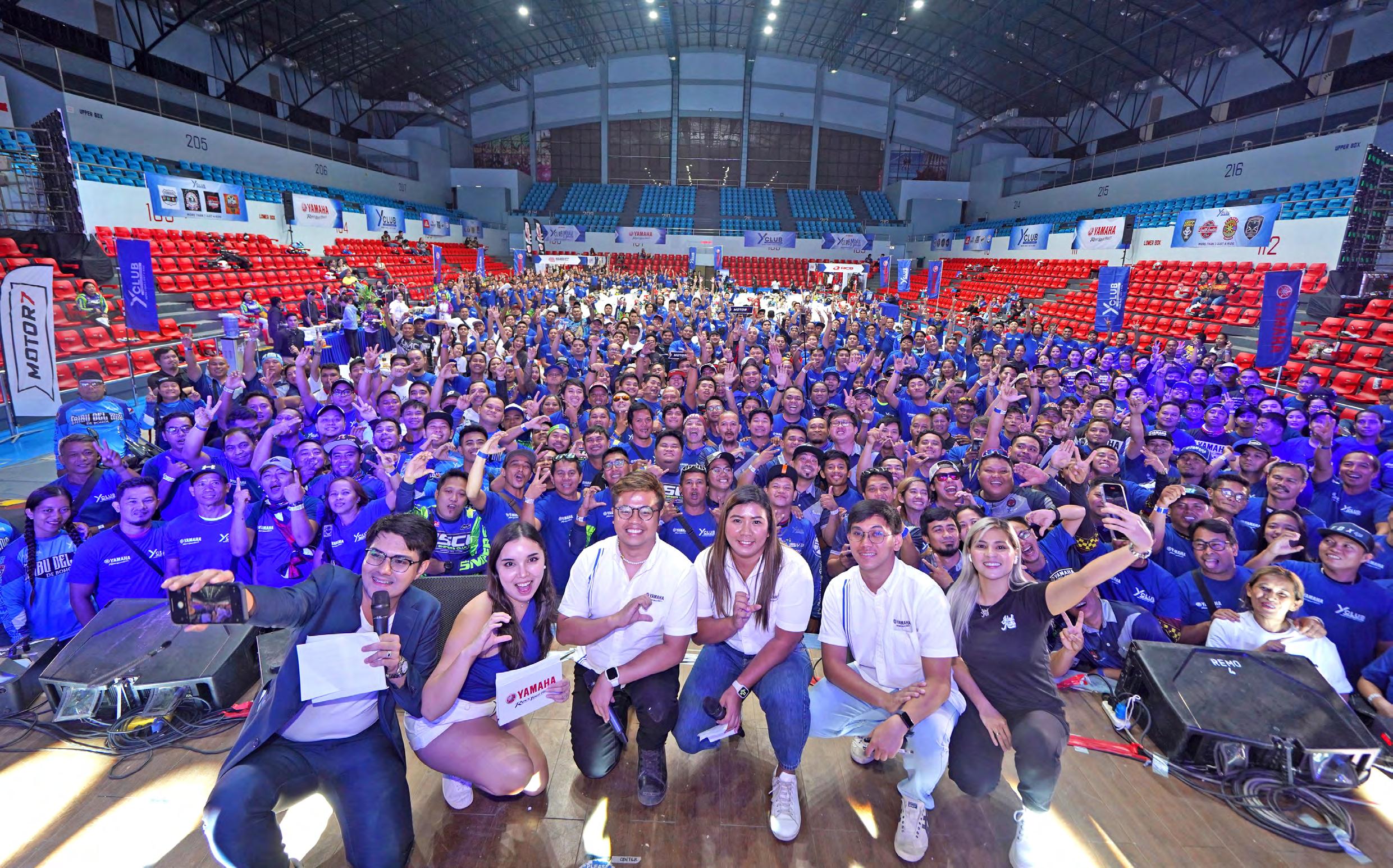
Yamaha Motor Philippines, Inc. (YMPH) is dedicated to bringing out the passion of every motorcycle enthusiast through the Yamaha Club. Founded in 2010, Yamaha Club has evolved over the years to cater to the interests of riders of all ages and backgrounds. It’s an initiative of YMPH to empower the riding community of the Philippines by giving more experiences to all Filipino riders.
To achieve this goal, Yamaha Club Mania was created to gather riders from different regions of the country. The first leg of the event was held in Alabang for Luzon riders in May 2023. Now, it’s time for Visayas riders to have an exclusive mania experience in Cebu!
Yamaha Club Mania offers various activities, including the chance for YClub members to win raffle prizes,

test ride Yamaha motorcycles, enjoy freebies, and participate in contests throughout the day. The event started with a “lunch ride” in the morning, where YMPH Motorsports team and Marketing Customer Relations, along with YClub group officers and motovloggers Idol Moto and Motour, rode on the newest state-of-the-art Cebu-Cordova Link Expressway (CCLEX). The short ride ended at the Hoops Dome, Lapu-Lapu City, where the rest of the program was held.

The program covered various topics, including motorbike tourism, traffic safety education, and motovlogging.


Speakers from the Department of Tourism and City Traffic Management System of Lapu-Lapu City shared their knowledge to educate YClub riders on responsible road sharing. Besides these safety tips, YClub members also had the opportunity to meet Idol Moto and Motour to learn about fun and exciting motorcycle vlogging tips.
Booths were set up by event sponsors —Racing Boy, SEC Motosupply, and Imprint Customs — offering discounted offers for their products. Yamaha Riding Academy also set up a test ride course where everyone can enjoy riding other Yamaha motorcycles.

Overall, the new YClub slogan, “More than just a ride” highlights what Yamaha is willing to go for in creating memories that last. It goes beyond riding a motorcycle. It’s about building a safe and excitement-filled lifestyle for all Yamaha motorcycle owners.

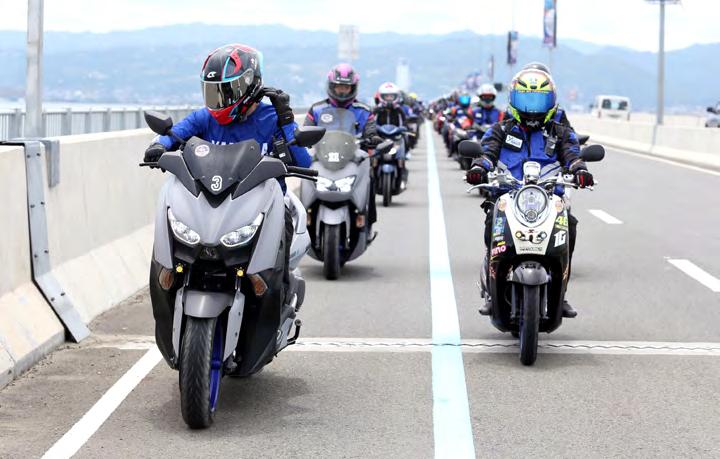
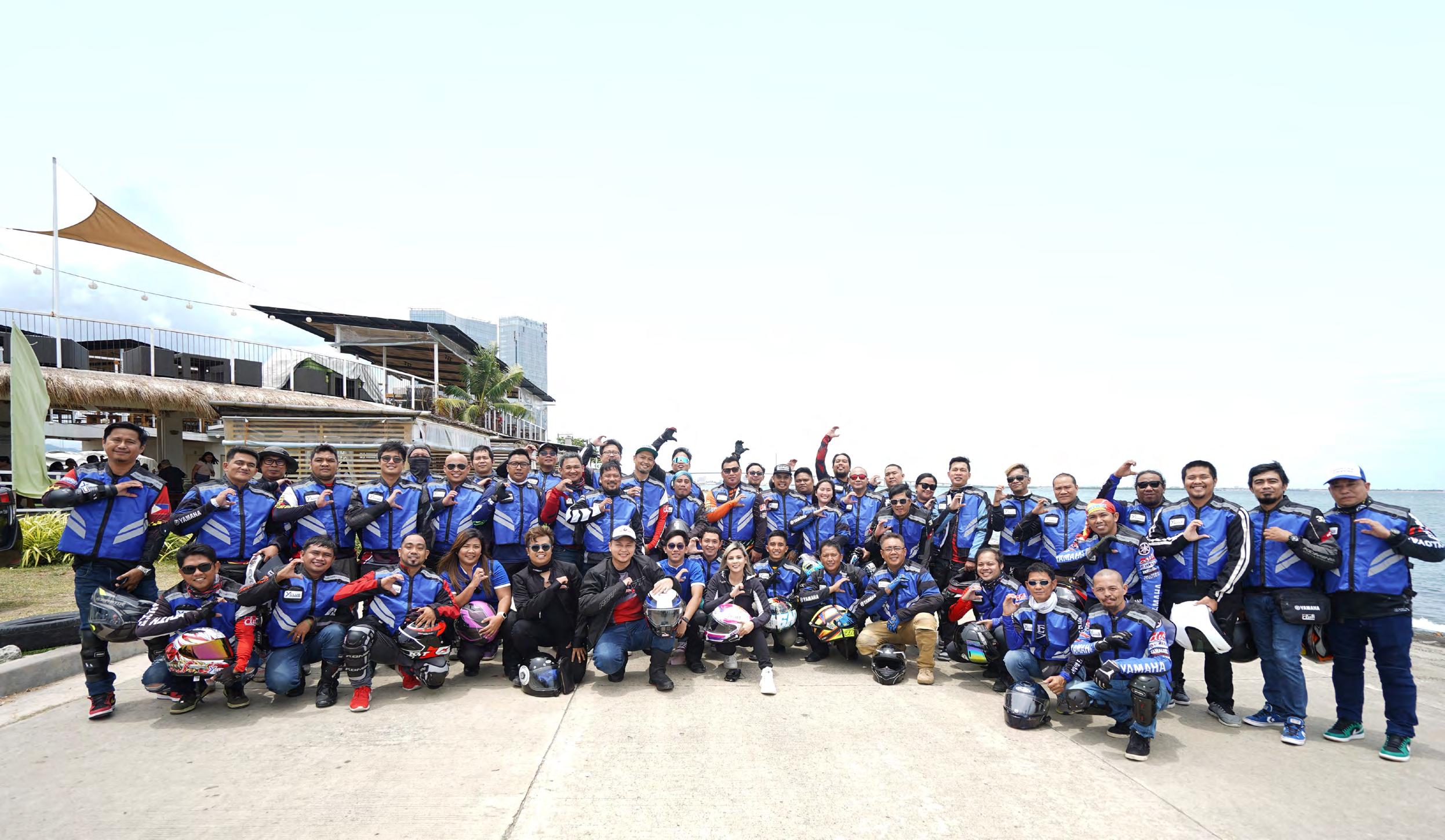


Launched by Yamaha Motor Philippines this 2023, the Mio Gear has been dubbed as the toughest MIO out there. The campaign concept revolved around ‘Play your Tough,’ an encouraging push to ride through every challenge, master the hustle, and forge your way to an unbreakable lifestyle. It’s all about embodying a gritty and unshakeable lifestyle. Facing every obstacle and overcoming it by relentlessly pushing through it.

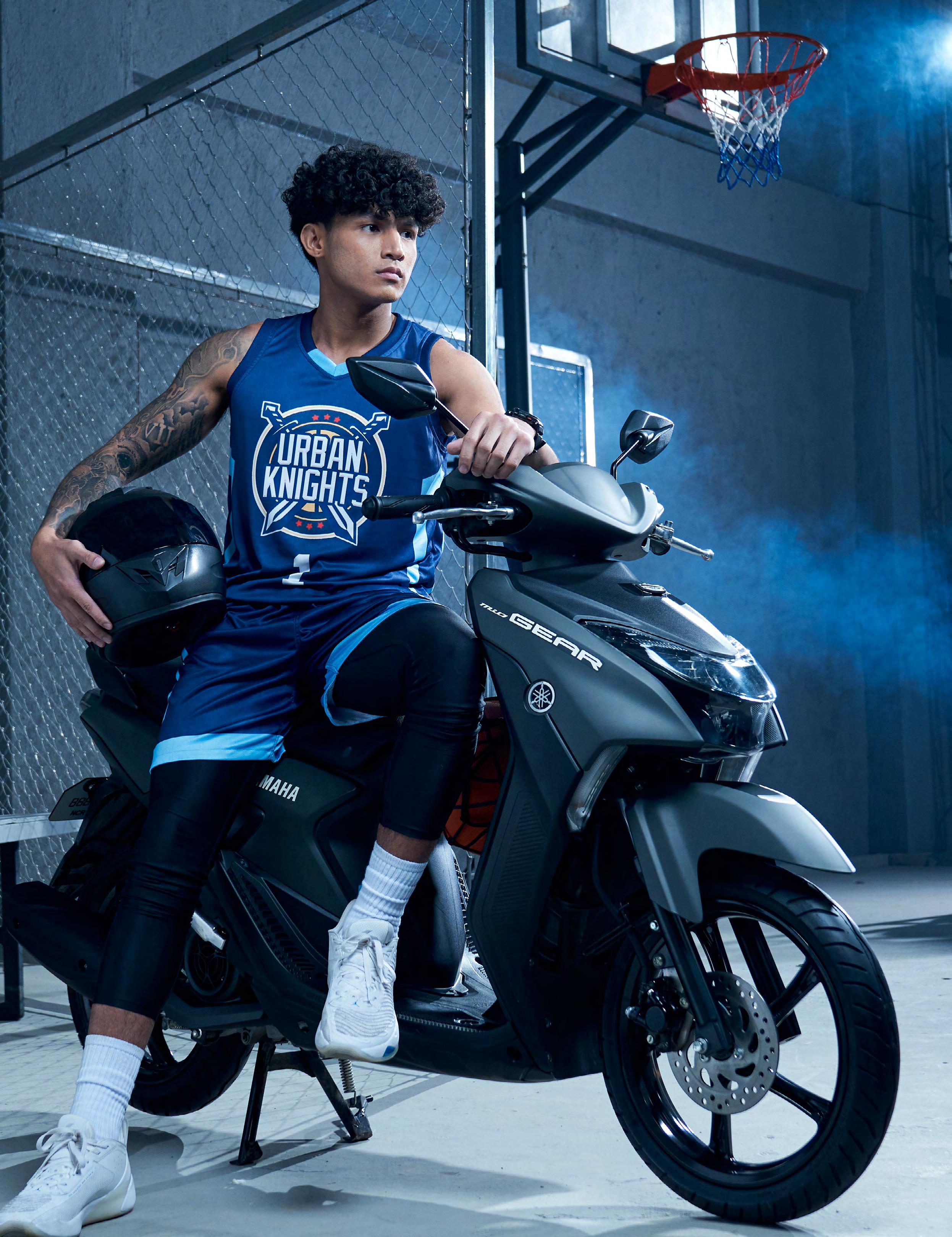
Its practical use was crafted for the challenge of the urban landscape. We all know how hard it is to ride day in and day out in the city; that’s why Yamaha created this motorcycle. It’s all about toughness. It’s for those who traverse the metropolis nonstop and need a multipurpose compact motorcycle for a wide range of uses. One that prioritizes function but doesn’t cut corners with the design.
A variety of functions that ease your daily grind in the city. It starts off with a light and slim design for more agile driving, as well as easy parking. It is equipped with scratch protection and fewer painted parts built to endure multipurpose use. It also has easy-access footrests for passengers. With the Slip Resistant Footboard, you can fit larger than usual items on it without the hassle, and when riding, you don’t have to think about any accidental slippages. Sometimes you have a lot more items than you can carry,
and that’s made easy with the double item hanger (carabiner & hook) of the MIO Gear. You also have a power outlet to easily charge your devices when on the go. LED lights are brighter and more durable than ever. You have access to Hazard lights to signal other motorists for emergencies and other distinct situations. The tubeless tires provide a comfortable driving experience when maneuvering. Tire sizes are 80/80 – 14” for the front and 100/70 – 14” for the rear.

The 125cc blue core engine with SMG technology ensures engine sounds are smoother when turned on and provides an economical, powerful and reliable driving experience. It is also equipped with an eco-indicator.

The Stop & Start System, when activated, automatically stops the engine during idling to further reduce fuel consumption

while also reducing noise and emissions. The engine quickly restarts with a twist of the throttle grip.
The Answer-back system conveniently locates the motorcycle with a single press of the remote key button. The vehicle sounds a buzzer and flashes its signal lamps.
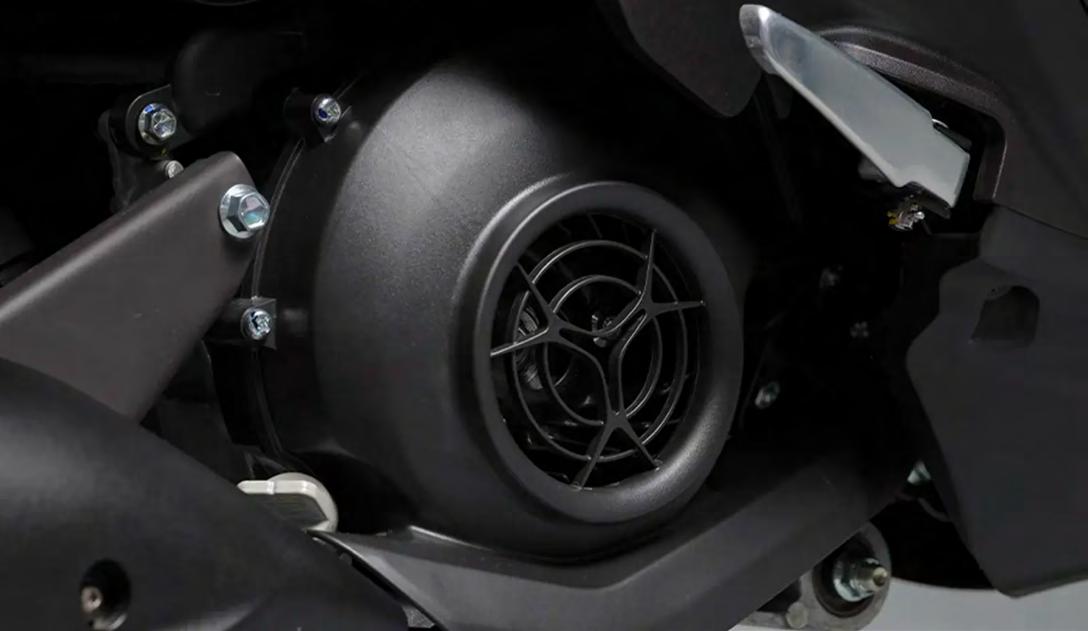
The toughness of the Mio Gear in multiple aspects is something we need these days and even more so moving forward. It also represents value for your money with all its special features that elevate your ride, and its functionality is unlike any other, which will get you through the day no matter the city.
Yamaha is now the official lifestyle motorcycle of Gilas Pilipinas. The Mio Gear would be its featured model throughout the World Cup campaign, reflecting that much-

needed toughness that can stand against the best of the basketball world.
The Mio Gear is available in the YZONE Yamaha flagship shop, and nationwide in all Yamaha Rev Zones and 3S Shops. The standard edition is available in Matte Dark Gray and Matte Gray with an SRP of PHP79,400. The Mio Gear S is available in Matte Black and Matte Brown with an SRP of PHP84,400.
Stay updated by following Yamaha on socials:
https://www.yamaha-motor.com.ph/index.html
https://www.facebook.com/ph.yamaha
https://www.youtube.com/user/yamahamotorphils
https://www.instagram.com/yamahaphilippines
https://www.tiktok.com/@yamahamotorph
https://twitter.com/YamahaMotorPH



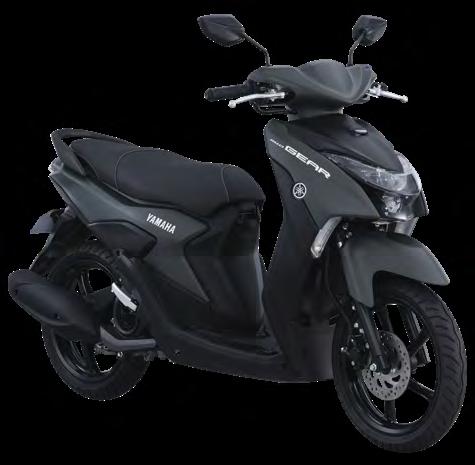

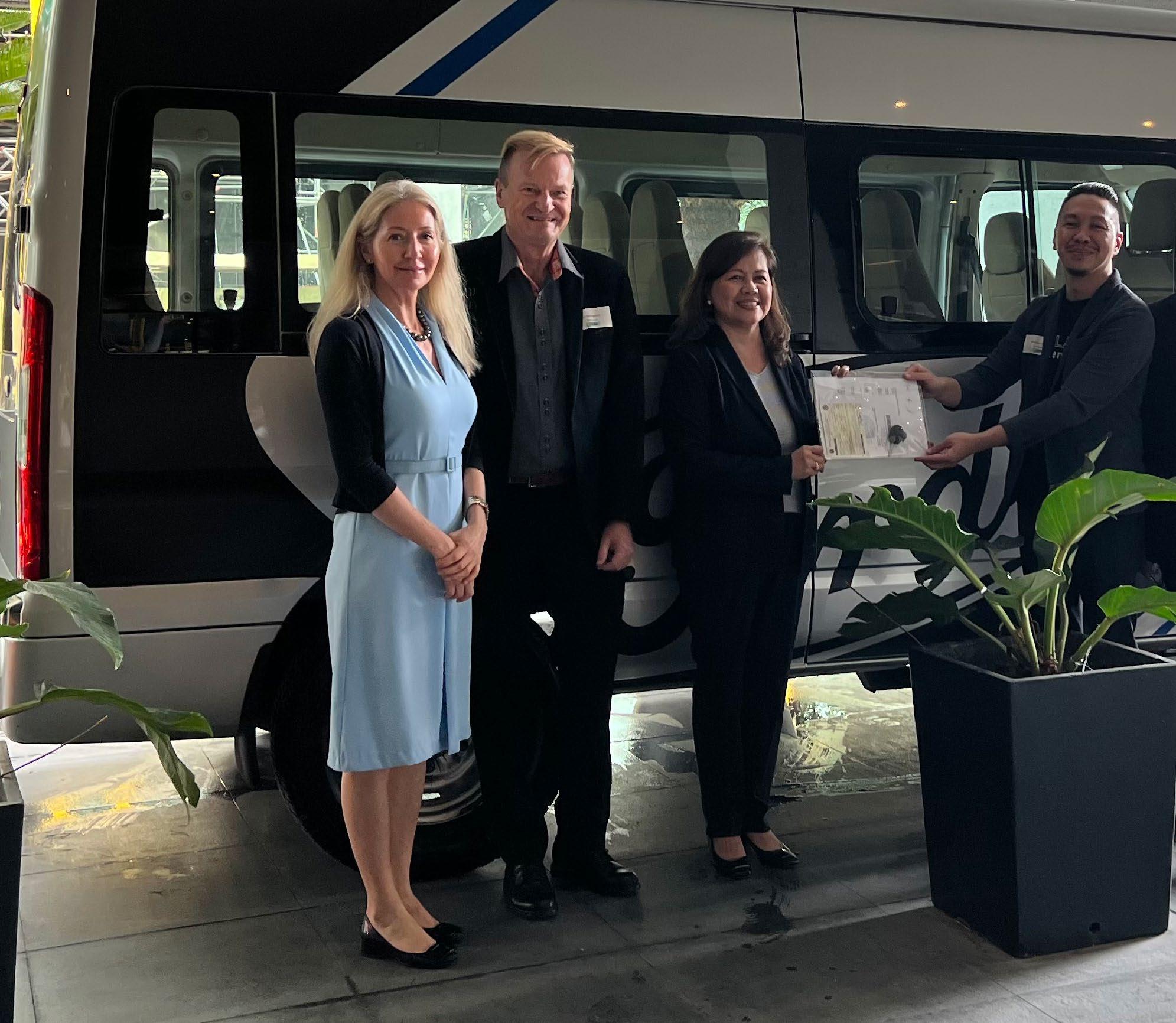


Ford Philippines entered into a partnership with Scholars for Sustenance (SOS), a global food rescue foundation, to support its food rescue operations with a donation of a Ford Transit van and a grant of USD30,000 through Ford Fund.
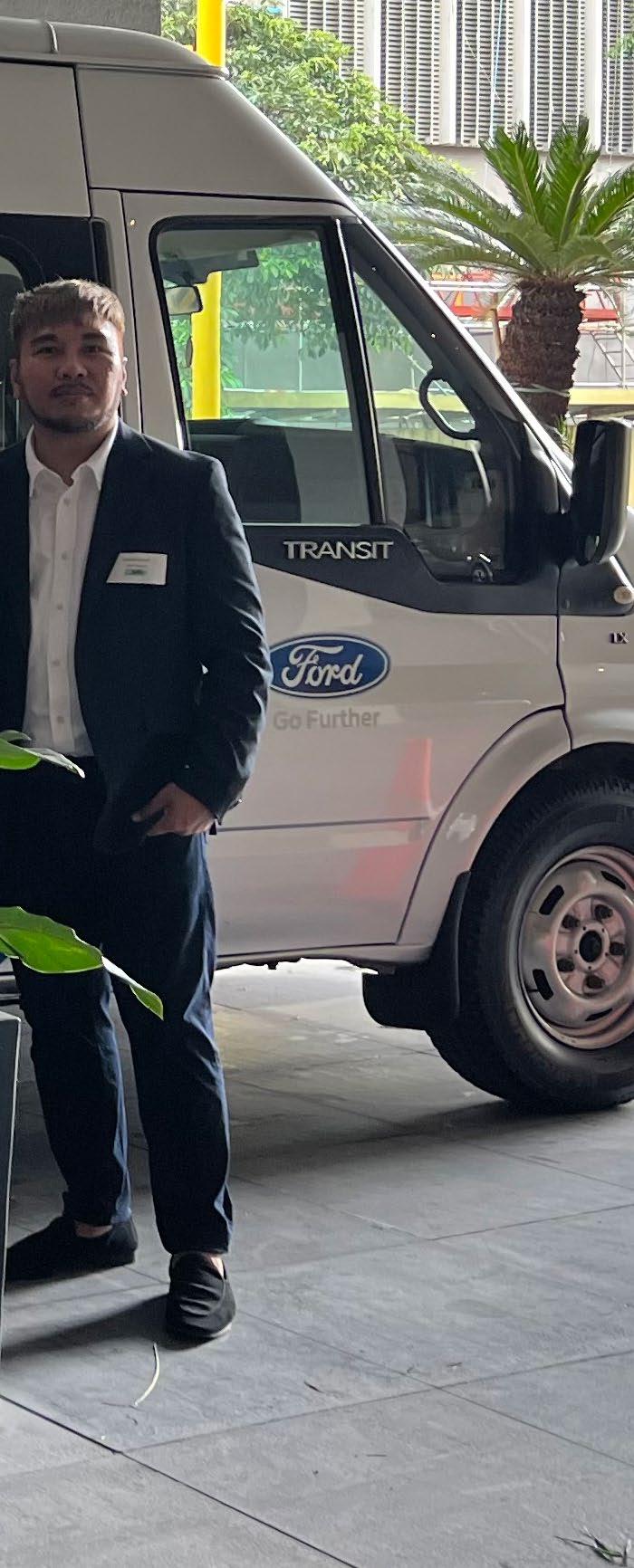
Ford Philippines turned over the Ford Transit during SOS’ Zero Summit Philippines 2023 held last August 8, 2023. With the theme Zero to Hero, the summit aimed at fostering collaboration among various stakeholders, including the academe, business organizations, civil societies, and government agencies, to achieve the goal of zero food waste and zero hunger by 2030.
The food rescue program of SOS Philippines aims to reduce food wastage through collaboration with its donors in the collection of surplus food, ensuring food safety in handling and delivery of the goods to partner communities. With the Ford Transit, SOS Philippines can proactively recover and transport non-perishable food items and subsequently transform the collected items into more nourishing meals to effectively address hunger within underserved communities while reducing food wastage.
“We are fully committed to supporting SOS Philippines and its advocacy of serving undernourished communities and curbing food wastage in the country. We trust that the Ford Transit will boost their mobility needs from various establishments to the communities who will benefit from this worthwhile endeavor,” shared Josie Gonzalez, director of government and corporate affairs, Ford Philippines.
This initiative is crucial to meeting SOS Philippines’ goal of curbing food wastage, considering that in the Philippines alone, one in every ten households experiences issues of food insecurity and hunger while a substantial amount of food goes to waste from establishments.
“There is an abundance of food available, and our mission at SOS is to ensure it reaches those in need. Reducing food waste and alleviating hunger requires a multifaceted restructuring of the entire food system, from production and distribution to consumption,” shares James Leyson, SOS managing director for the Philippines and Thailand.
SOS is a global food rescue foundation that aims to address the long-standing food security problem in the most undernourished communities across Thailand, Indonesia, and the Philippines through various programs, including the Rescue Kitchen Program, where unused food ingredients are collected from various establishments, and the Food Rescue Program, where quality surplus food from establishments are collected and transformed into nourishing meals.
In celebration of its 26th inaugural anniversary, Isuzu Philippines Corporation (IPC) signed a partnership with the Philippine Children’s Medical Center (PCMC) for its new Bahay Alalay Temporary Accommodation Program.


The Bahay Alalay will serve as a decent shelter for watchers and recurring outpatient children needing periodic pediatric services. To be constructed within PCMC’s compound, the facility will have areas for reception, cafeteria, playroom, and separate sleeping quarters for male and female occupants. Once
 (From left) PCMC Deputy Executive Director Dr. Cecilia Gan, MD; PCMC Executive Director Dr. Sonia Gonzales, MD; IPC President Tetsuya Fujita; IPC Asst. VP for Administration Imelda Bernas
(From left) PCMC Deputy Executive Director Dr. Cecilia Gan, MD; PCMC Executive Director Dr. Sonia Gonzales, MD; IPC President Tetsuya Fujita; IPC Asst. VP for Administration Imelda Bernas
completed, IPC will provide PHP1-million worth of equipment and furniture to the 3-floor facility, making it more comfortable and safe for its occupants. In addition, IPC will adopt Bahay Alalay’s playroom to ensure that the children will have an area for fun and games during their stay.

“Every day, PCMC receives hundreds of children from all over the country, and providing a proper shelter for recurring patients and their watchers is a much-needed facility in the hospital. Isuzu being the ‘Responsible Partner’ cares about the overall well-being and welfare of these children, especially those coming from the provinces not having enough money to find a place here in the city,” said IPC president Tetsuya Fujita.
Leading the groundbreaking ceremony were PCMC executive director Dr. Sonia Gonzales and IPC president Tetsuya Fujita, as well as other PCMC deputy directors to commemorate the start of the construction. Afterwards, both parties signified

their partnership through a formal Deed of Donation signing ceremony, where Dr. Gonzales and Fujita were joined by PCMC deputy executive director for hospital support services Dr. Cecilia Gan and IPC asst. vice president for administration Imelda Bernas.
“We are very thankful to Isuzu Philippines for partnering with us in this project. The support will definitely have a big impact in providing a more decent facility for the parents and watchers of our patients,” said Dr. Gonzales.
According to IPC, this recent partnership is just one of the many CSR projects they have lined-up until the end of the year. As the company moves towards its SDG commitment, IPC is looking at collaborating with different government institutions as well as non-government organizations to support their “Road to Progress” direction by improving company governance, all while helping society and caring for the environment.
IPC and PCMC Executives during the groundbreaking ceremony

In a recently concluded project, MMPC successfully completed its three-phased forestation project, planting various species of trees on 100 hectares in different Luzon provinces. As part of its commitment to make Filipinos’ lives better, MMPC embarked on a large-scale forestation project that aligns with its vision for a greener and more sustainable future.
Recognizing the pressing need to address the environmental issues that Filipinos are facing, MMPC initiated its 100-hectare forestation agreement with the Department of Environment and Natural Resources (DENR), adopting 3 different locations in the country – Bangui, Ilocos Norte; Siniloan, Laguna; and its last site, Infanta, Quezon Province.
The latest tree planting activity took place in Barangay Pinaglapatan, Infanta, Quezon Province, where a beach forest was established by planting bamboo, mangrove, and other beach forest species along Agos River. This effort, initiated by the Samahan ng Magsasaka at Mangingisda ng Pinaglapatan (SMMP), through the support of MMPC and DENR, aims to rehabilitate the riverbanks, preventing soil erosion in the area.
With the combined efforts of dedicated MMPC employees, local communities and government, a total of 78,700 tree seedlings were planted on the 38-hectare land along Agos River. This will be continuously monitored by MMPC with the help of DENR. Along with the trees planted, MMPC also donated a lighthouse to help assist fishermen and farmers.
“For 60 years, it’s been MMPC’s commitment to make life better for Filipinos not just through our vehicles, but also through our services and CSR efforts. And today, we are about to nurture this community’s future, one seed at a time. I hope that the seeds we plant today will flourish for generations to come,” said MMPC chairman Noriaki Hirakata during the tree planting activity.
In another significant move, MMPC partnered with Philippine Business for Social Progress (PBSP) to formalize its Balik-Baterya Scholarship Program. The program, which began in 2019 in collaboration with Oriental Motolite Marketing Corporation (OMMC), involves the proper recycling and disposal of used hazardous lead-acid batteries generated at the MMPC Plant. Proceeds from recycling are allocated to MMPC’s CSR fund, part of which is now being directed towards scholarships for senior high school students of Don Jose Integrated High School and Biñan City Senior High School–Timbao Campus.

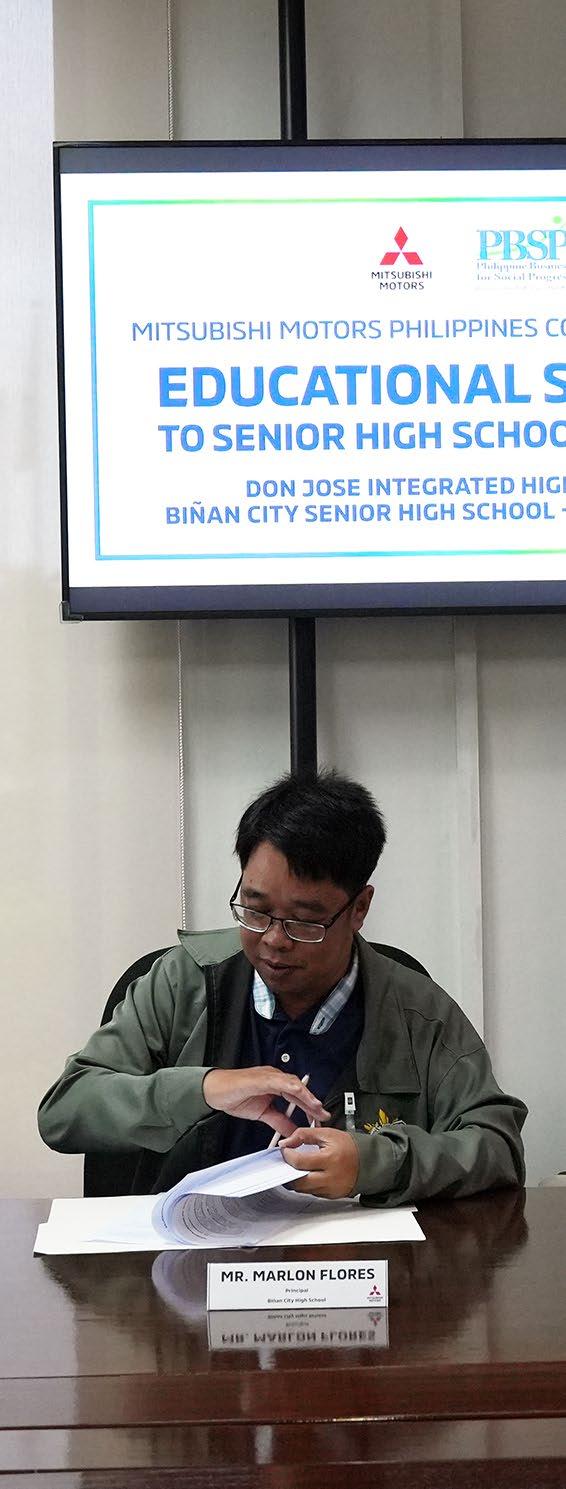
This initiative aligns with MMPC’s commitment to continue making a positive impact on society, both in environmental conservation and education. Through this collaboration with PBSP which was formalized through a Memorandum of Agreement (MOA) signing last July 13, 2023, scholarships have been provided to total of 20 senior high school students from the beneficiary schools under the Technical Vocational Livelihood (TVL) Track. The chosen scholars are those taking Electrical Installation and Maintenance and Shielded Metal Arc Welding which will allow them to gain skills and qualifications in the automotive industry.
As Takehisa Usami stated in his speech, “I am grateful that this collaboration has led us to contribute not just to the preservation of our environment, but also to giving back to the community by raising funds to support scholarships for students. By investing in the education of the youth, we provide opportunities for the younger generation to realize their full potential and to create a difference in the world.”
These two initiatives exemplify MMPC’s dedication to driving positive change, fostering a sustainable future for both the environment and the Filipino youth.
DEVELOPER PUBLISHER PLATFORM Larian Studios Larian Studios
PC, PlayStation 5, Xbox Series X/S, macOS
As we enter the fourth quarter of 2023, many developers have already staked claims to Game of the Year awards. We’ve also reviewed several of them here at Gadgets. Contenders can come from any developer or publisher; AAA games such as Final Fantasy XVI and Diablo IV are under consideration at the time of this writing. But Belgium-based Larian Studios, who also developed the Divinity series, has a strong case with Baldur’s Gate 3. Will it make its own case for the various gaming awards out there?

For those who already play tabletop games, Baldur’s Gate 3 is turn-based, and combat is based on Dungeons & Dragons 5th Edition rules. You begin in the year 1492 DR, 120 years after the events of Baldur’s Gate II. Mind flayers have launched an invasion of Faerun and implanted the protagonist with a lilithid tadpole, which is a parasite that turns its victims into mind flayers themselves. The protagonist then returns to Faerun, searching for a way to remote the parasites.


While I have limited experience with these types of games, I immediately immersed myself into learning the nuances of the battle system. You can choose from a selection of D&D classes and races, or even make your own origin character and give it a background, much like in D&D itself. You can venture alone into the Forgotten Realms, or get your friends in on the action. I chose to join some friends already playing the game so that the learning curve wouldn’t be as steep, and I would recommend doing so if you’re unfamiliar with D&D or the Baldur’s Gate series.

Just like the tabletop version of D&D, attacks, shoves, hidden secrets, and lockpicking are examples of die rolls. These rolls determine success or failure. This can be modified by one’s Ability Score Modifier and Proficiency Bonuses (unless explicitly stated, Proficiency Bonuses aren’t added to damage rolls). While some math is required, rolling a 1 on a D20 is considered a natural 1, and rolling a 20 is a natural 20. There are attack rolls, damage rolls, saving throws, and ability checks that can be affected by modifiers (unless stated otherwise).


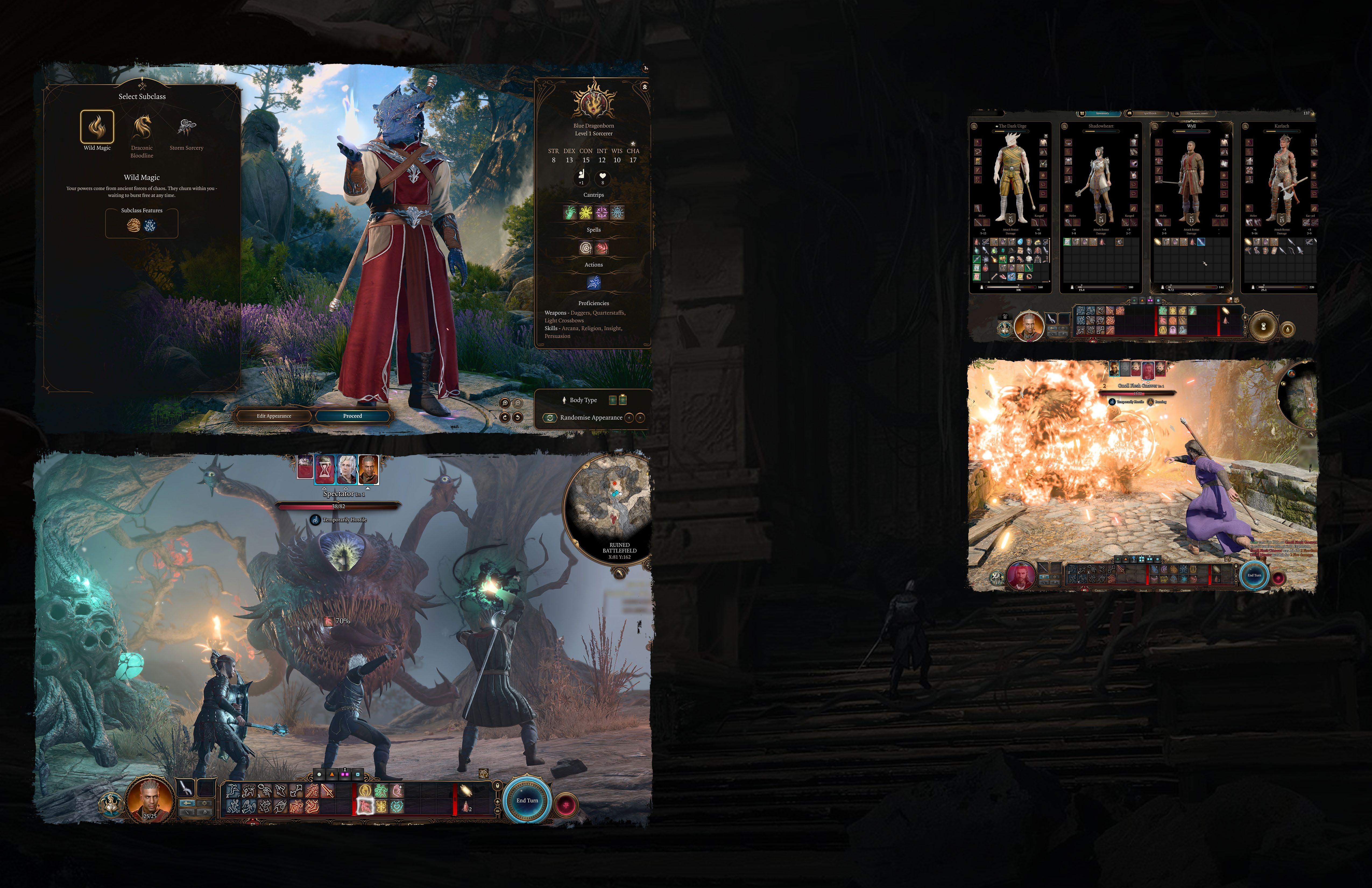
There are numerous creature types in the game: aberrations, beasts, celestials, constructs, dragons, elementals, feys, fiends, giants, humanoids, monstrosities, oozes, plants, and undead. Some pieces of equipment can grant advantages against certain types of enemies, namely aberrations, beasts, and monstrosities. You may have to mix and match to counter each enemy and keep a lot of gear on you that will help you fight these enemies. Your stats, Strength, Dexterity, Constitution, Intellect, Wisdom, and Charisma, are important as they can determine victory or defeat, along with roll of the dice.




There are several types of weapons: martial or simple, melee or ranged, one-handed, two-handed, or versatile. There are several types of physical damage: bludgeoning, piercing, or slashing. If weapons have the Light property, they can be dual-wielded for more damage; if you choose the Dual Wielder Feat, you can dual-wield Versatile weapons for even more damage. Weapons have special properties that can

My (lack of) experience with D&D clearly made the game harder than it was, yet it was enjoyable playing with D&D rules. You can even form relationships with various NPCs in game, and can have special events if you bring certain companions with you to certain locations in the game. Despite my limited knowledge of D&D, I believe Baldur’s Gate 3 has the potential to challenge for gaming awards based on its rich storyline and immersive gameplay.



Palo Alto Networks Unit 42 researchers have unveiled a new phishing campaign named NodeStealer 2.0, aimed at Facebook business accounts. The campaign entices victims with free business tools, like spreadsheet templates, to completely take over the accounts. This strategy indicates a concerning trend among threat actors, who have been increasingly targeting Facebook business accounts which emerged around July 2022.
In May 2023, Meta released a report on NodeStealer, a new information-stealing malware initially compiled in July 2022. The report highlighted malicious activities involving NodeStealer that were identified in January 2023. In December 2022, a campaign featuring a new version of Nodestealer emerged. This new campaign involved two Python-written variants with enhanced capabilities, including cryptocurrency theft, downloading abilities, and a complete takeover of Facebook business accounts.

The main infection vector was a phishing campaign focusing on advertising materials for businesses, allowing threat actors to steal browser cookies to hijack accounts on the platform, specifically aiming toward business accounts. The threat actor used multiple Facebook pages and users to post information, luring victims to download links from known cloud file storage providers. After clicking on it, a ZIP file was downloaded to the machine containing the malicious info stealer executable.
“In early 2023, Meta reported it has reached 80.30 million Facebook users in the Philippines, equivalent to 69.0 percent of the total population at the start of the year. This extensive presence potentially exposes the country to considerable risks from NodeStealer, which greatly threatens individuals and organizations. Besides

the direct impact on Facebook business accounts, which is mainly financial, the malware also steals credentials from browsers, which can be used for further attacks. We encourage all organizations to review their protection policies and use the indicators of compromise (IoCs) provided in this report to address this threat.” said Vicky Ray, Director at Unit 42 Cyber Consulting & Threat Intelligence, Asia Pacific & Japan at Palo Alto Networks.
Facebook business account owners are encouraged to use strong, complex, hardto-guess passwords and enable multifactor authentication. Take the time to educate your organization on phishing tactics, especially modern, targeted approaches that address current events, business needs, and other appealing topics.
Sophos, a global leader in innovating and delivering cybersecurity as a service, recently released new findings on CryptoRom scams—a subset of pig butchering (shā zhū pán) schemes designed to trick users of dating apps into making fake cryptocurrency investments—in its latest report, “Sha Zhu Pan Scam Uses AI Chat Tool to Target iPhone and Android Users.” Since May, Sophos X-Ops has observed CryptoRom fraudsters refining their techniques, including adding an AI chat tool, like ChatGPT, to their toolset. Scammers also expanded their coercion tactics by telling victims their crypto accounts were hacked and more upfront money is needed.

Sophos X-Ops additionally discovered that scammers were able to sneak seven new fake cryptocurrency investment apps into the official Apple App and Google Play stores, upping the potential for victims.

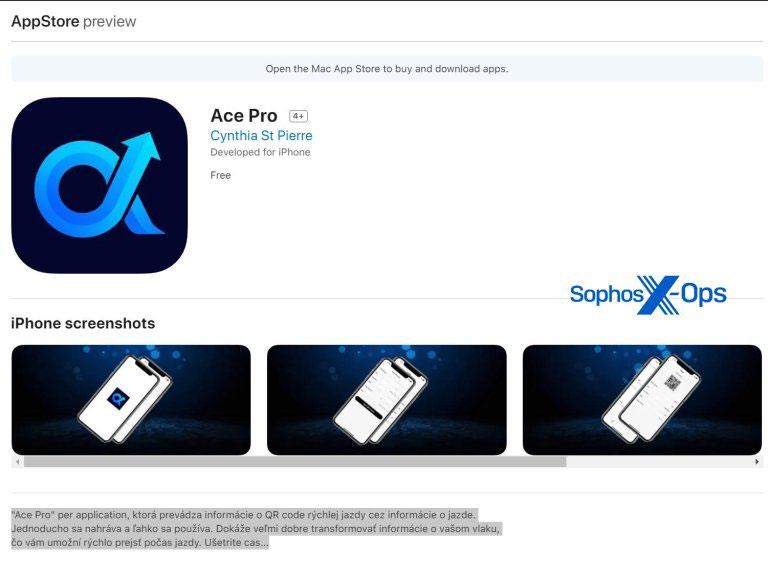

In 2022, investment fraud caused the highest losses of any scam reported by the public to the US’ FBI’s Internet Crimes Complaint Center (IC3), totaling USD3.31 billion in the US alone. Frauds involving cryptocurrency, including pig butchering, represented most of these scams, increasing 183% from 2021 to USD2.57 billion in reported losses last year.
The app store download page of fake apps, Ace Pro and MPM_BitScan, since removed
Sophos X-Ops first learned of CryptoRom scammers using the AI chat tool—most likely ChatGPT— when a conned victim reached out to the team. After contacting the victim on Tandem, a language-sharing app that has also been used as a dating app, the scammer convinced the victim to move their conversation to WhatsApp. The victim became suspicious after he received a lengthy message that was clearly partly written by an AI chat tool using a large language model (LLM).

“Since OpenAI announced the release of ChatGPT, there has been broad speculation that cybercriminals may use the program for their own malicious activities. We can now say that, at least in the case of pig butchering scams, this is, in fact, happening. One of the main challenges for fraudsters with CryptoRom scams is carrying out convincing, sustained conversations of a romantic nature with targets; these conversations are mostly written by ‘keyboarders,’ who are primarily based out of Asia and have a language barrier. Using something like ChatGPT can be a more efficient and effective way to keep these conversations going, making the scams less labor intensive and more authentic. It also enables keyboarders to simultaneously engage with multiple victims at one time,” said Sean Gallagher, principal threat researcher, Sophos.
Sophos X-Ops also uncovered a new scammer tactic designed to extort additional money. Traditionally, when victims of CryptoRom scams attempt to cash in on their “profits,” fraudsters will tell them they need to pay a 20% tax on their funds before completing any withdrawals. However, a recent victim revealed that after paying the “tax” to withdraw money, the fraudsters said the funds had been “hacked” and they would need another 20% deposit before receiving the funds.

Upon further investigation, Sophos X-Ops found seven fake cryptocurrency investment apps in the official Google Play and Apple App stores. These apps have seemingly benign descriptions in the app stores (BerryX, for example, claims to be reading-related). However, as soon as users open the app, they are met with a fake crypto-trading interface.
To get past the Apple App Store review process, the app developers use the same technique Sophos first reported on in February 2023. They submit the app for approval using legitimate, run-of the-mill web content. Then, once the app has been approved and published, they modify the server hosting the app with code for the fraudulent interface.
Many of these seven new apps recycled the same templates and descriptions, suggesting the same one or two pig butchering rings are creating the scheme.
“Prior to being able to get their apps into the Apple Store, CryptoRom fraudsters had to use an awkward technical workaround to target iOS users, which could alert their victims that something was amiss. Now, it’s much easier for them to target iPhone users, expanding their victim pool. These apps are also easy to recycle and reuse. In fact, the BerryX app appears related to the fake apps we discovered and blocked earlier this year. While we’ve alerted Google and Apple to these latest apps, it’s likely more will pop up. These fraudsters are ruthless. Today, they’re telling victims their accounts have been hacked to extort more money, but in the future, they’re likely to think of new methods of initial and double extortion. The best defense against pig butchering is awareness of these campaigns. We encourage users who are suspicious or think they may have been a victim to reach out to us,” said Gallagher.


Innovative startup KodeGo is transforming the job-skills matching landscape with its Training-asa-Service (TaaS) program, offering educational solutions meticulously crafted to meet the unique needs of different companies.

The TaaS program builds on KodeGo’s expertise in technology and skills training to provide a personalized approach that enables enterprises to equip their workforce with specific skills crucial to achieving strategic objectives.
Speaking at the recent ASEAN Innovation Business Platform (AIBP) Conference and Exhibition, KodeGo entrepreneur-in-residence Cristina Gervasio shared how they work with companies in two distinct ways to address diverse and evolving business requirements.
To democratize education for Filipinos aged 18 and above, KodeGo conducts intensive tech boot camps, helping its graduates secure placements with
the ability to customize courses demonstrates KodeGo’s commitment to evolving alongside the needs of businesses, further underlining its dedication to redefining education and training.
their
company partners in as short as three months.
With over 4,000 enrollees and 1,300 graduates since its launch in 2021, KodeGo opens new job opportunities for individuals from all walks of life — from delivery riders to wedding photographers, all of whom are eager to upskill themselves and enhance their professional value.
KodeGo’s commitment to breaking barriers in traditional education is further reflected in the groundbreaking TaaS program and its impact on clients and the larger learning community.
“For our TaaS, the process is simple, yet very effective,” explained Gervasio. “We have a conversation with the human resources team, and they come back to us with a ‘laundry list’ that needs to be addressed within their current pool of employees. We then craft a very specific curriculum that we both agree upon and embark on that journey together.”
One shining example of the TaaS initiative’s success is KodeGo’s collaboration with shared services company Asticom Group of Companies, where a special sixmonth cadetship program, namely AstiELEVATE, was designed to upskill 10 young fresh graduates. The tailored course included both technical skills such as Full Stack Web Development and essential soft skills such as leadership modules.
“So far, (TaaS) attrition is at zero because there is so much buy-in from the start from all the parties,” added Gervasio.
With their TaaS program, the ability to customize courses demonstrates KodeGo’s commitment to evolving alongside the needs of businesses, further underlining its dedication to redefining education and training.
For more information about KodeGo’s TaaS program, please visit https:// kodego.ph/.

With
TaaS program,


Security Bank Corporation a leading universal bank in the Philippines, has recently launched HeRO, powered by Darwinbox, as its Human Capital Management (HCM) platform. This elevates the employee experience of the Bank’s more than 7,000-strong workforce. The Bank has integrated its systems into one end-to-end HCM platform covering the entire employee lifecycle from hiring to retirement. Security Bank’s goal with the partnership is to provide employees with a mobile-first HR solution that is simple, progressive, and serves as a one-stop-shop tool for HCM data and service needs.
HCM and HR experts from Darwinbox worked with the Security Bank team on an extensive blueprinting process to address the Bank’s requirements, setting out a roadmap and expected outcomes. Darwinbox and Security Bank planned a phased implementation to ensure the successful adoption of scheduled functionalities while performing business-as-usual tasks.

Speaking on the Bank’s HR vision and intention with the new HCM platform, Sanjiv Vohra, president and CEO of Security Bank, said, “At Security Bank, our values-based culture is underscored by our Employee Value Proposition called ‘You Matter.’ We’re strengthening our support for our employees with unique, industryleading engagement and benefits programs, as we invest heavily in technology to improve the overall employee experience. Our Bank has grown and evolved over the past seven decades and counting, and the key to our longevity and success lies in our most important asset—our people.”
“Security Bank is committed to being the preferred employer in Philippine banking. To do so, we’re investing in
employee development and technology to simplify processes and enhance work-life balance. HeRO is a significant part of the HCM transformation initiative, aiming to unify and empower employees by providing a single source of truth for all HCM data and services, from onboarding to career progression and retirement,” said Nerissa Berba, executive vice president and head of human capital management.
Two ‘Experience Lab’ sessions were conducted by Darwinbox for stakeholders to familiarize themselves with HeRO (Security Bank’s front-end branding of the Darwinbox platform) before its official launch. The first session was attended by Security Bank executives, while the second session included a larger audience.
“We don’t just want to leave a customer with a platform, we’re
all about driving end-to-end value management. After all, we’re driving a new way of working at Security Bank,” said Jayant Paleti, co-founder of Darwinbox. He added, “We love working with passionate teams that want to do right by their employees, and the dedication of the Security Bank team to their people has been evident from day one. The vision and execution have been very well thought out. Everyone involved has shown tremendous support. Here’s to a continuously blossoming relationship with Security Bank.”
Darwinbox is globally the #1 rated HCM platform (on Gartner Peer Insights) and is backed by the likes of Microsoft, Salesforce, and Sequoia. The new-age solution has become the fastest and the only Asian HCM player to feature on the Gartner Magic Quadrant in 2021 and 2022.
YouTube Shorts proves to be a big hit as the platform is rapidly growing to the tune of over 2B logged-in users watching every month. To make the shortform video experience even better and content creation even easier, YouTube recently introduced new features and upgrades to Shorts.

The new features mainly focus on different ways to create Shorts content beyond simple shooting, uploading, and remixing. Here’s what you can find now when you try to make a Short:
one

The new Collab feature now allows creators to record and remix side-by-side content with other Shorst and qualified YouTube videos. The feature comes with multiple layout options, such as Green Screen where creators can use other videos as a background, and Cut that lets users select up to five seconds from other videos.


Over the past few months, Shorts has been continuously getting dozens of new improvements, like stickers and effects, to help creators find new ways of making content. For example, the upcoming roll out of the Q&A sticker will allow creators to ask their audience questions and get responses right from the comment section. YouTube has also added the ability to reply to comments with a Short as a way to immediately create new content.
YouTube is now testing a vertical live experience on Shorts where creators can now get discovered right from the feed. Viewers in the test will see previews of the vertical live videos mixed into the Shorts feed. As someone taps into the experience, they’ll be placed in a scrollable feed of other live videos that will help creators easily connect with their audience and build their communities. Going live and creating an online community is easier than ever with just a few taps, and features like Super Chat, Super Stickers, and Channel Membership will soon be available.

The new suggestion feature allows viewers to become creators themselves by using the same audio and effects from a video they’ve watched onto their own content. To use the feature, simply tap the remix button on the Shorts player and select “Use Sound.” The app will automatically use the same audio timestamp from the Short you just watched and the same effect as a creation suggestion.

Capture inspiration in Playlists:



People browsing their Shorts feed can now save videos they love directly to a playlist. On the other hand, creators no longer need to worry about losing an effect they just discovered, as they can simply save it to a playlist and try it out for themselves when inspiration strikes next.
five six
Effortlessly convert to Shorts:
Converting landscape videos to Shorts will be easier with the Recomposition Tool that YouTube will beta-test in the next few weeks. Creators will be able to maintain key parts of their content using split screen effects, as well as zoom, crop, and adjust the layout, making long-form videos more fun and engaging.


With these new additions, it’s never been easier to take and capture inspiration whenever you watch YouTube and go through your Shorts feed. Creators can try the new features out now and see how you can resonate with your audience further.
For more information and updates, visit youtube.com/@youtubecreators

Recent years have seen rapid changes in the way people work, with remote and hybrid work arrangements widely adopted around the world. This has also reshaped the way documents are handled, with many processes going digital.
As a high-performing and agile company, Globe was quick to innovate, adopting a tool called MemoApp at the height of the pandemic for paperless approvals within and across departments. The user-friendly online tool has made internal reviews and clearances more efficient, becoming part of Globe’s ways of working even as employees are now back in the office.
Now, Globe’s corporate venture builder 917Ventures is bringing this digital tool beyond the company in response to the growing business demand for efficient digital document handling.
“MemoApp is truly a game-changer in the industry. Through its affordable document management solution, we are able to help businesses create, track, and sign documents easily in a secure online platform. It’s incredibly convenient, cost-efficient, and time-saving. No more hassles in missing documents and having piles of paperwork. With MemoApp, users can track and approve with one click,” said Carla Bianca Yap-Sy Su, 917Ventures ENTREPRENEUR-IN-RESIDENCE.
MemoApp is a fully automated, all-inone management tool designed for teams and businesses of all sizes. It streamlines workflow processes by providing an efficient platform for creating, approving, signing, and tracking memos.
MemoApp’s latest feature is an electronic signature that revolutionizes the way businesses take care of paperwork. This feature allows enterprises to digitally sign and collect documents, simplifying the approval process and making document tracking faster. With a userfriendly interface and enhanced security measures, it ensures that e-signatures are as effective as traditional pen-on-paper signatures.

The platform is also an affordable alternative to other e-signature solutions. Subscription starts at only
P499, significantly more affordable and provides more value for its users than other document management tools.
MemoApp offers not just competitive pricing, but also a commitment to quality and user experience.
Not only does MemoApp allow users to access memos anytime, anywhere on any device, but it also secures every document with encryption, visible only to designated individuals in a workflow. It eliminates the need to switch between multiple applications, saving time and enhancing efficiency.
MemoApp’s launch signifies a significant step towards digital transformation, particularly for Filipino businesses. By simplifying the document process, and improving workflows, it is poised to empower more Filipino businesses to boost their productivity and save time and money.

Led by Yap-Sy Su and venture builder Myles Salud, MemoApp was already successfully tested and adopted by the Globe Group, including Globe, KonsultaMD, GCash, Rush Technologies, BRAVE CONNECTIVE, INQUIRO, m360, and KROMA Entertainment.
Individuals and businesses looking to try the MemoApp can sign up at https:// memoapp.ph/ to book a demo and avail of a free trial.

Microsoft has announced the expansion of its artificial intelligence (AI) technology into a new software designed to streamline processes for frontline workers to improve efficiency, enhance customer experience, and enable faster decision-making. The global technology leader is committed to investing in innovative solutions to help boost productivity for frontline workers, those who work directly with customers or are involved in the production and delivery of products and services. Microsoft recently introduced new tools and integrations that bring the power of next-generation AI to the frontline across the areas of intelligent operations, effortless communication, and trusted experiences.
Microsoft infuses the productivity applications frontline managers use every day with the robust data and intelligence of underlying business applications. It is bringing AI Copilot to the new Dynamics 365 Field Service with Outlook and Microsoft Teams integrations to help streamline the frontline experience and drive efficiency with operations. Through this integration, frontline service managers who receive customer escalations in Outlook or Microsoft Teams can use Copilot in Dynamics 365 to streamline work order creation with relevant details pre-populated from emails or chats, optimize technician scheduling with data-driven recommendations based on factors such as travel time, availability and skillset, as well as generate draft responses to customer messages summarizing next steps without switching apps.
Meanwhile, Dynamics 365 Field Service app in Microsoft Teams will enable frontline technicians to access key work order functionality in their flow of work. Technicians will now be able to see upcoming work orders at a glance in their home experience in Teams, share full work order details and easily access Dynamics 365 Remote Assist in one click to troubleshoot with remote experts in real time if they need additional support to complete jobs.

Soon, Microsoft 365 Copilot can ground prompts and retrieve insights for frontline managers, leveraging data from
the Shifts app with a new Shifts plugin for Microsoft 365 Copilot, in addition to user and company data it has access to such as Teams chat history, SharePoint, emails and more. This will maintain endto-end visibility on operations, enabling frontline managers to quickly get a list of important items specific to their team and location to speed up time-consuming tasks like covering shifts and onboarding new employees.
Microsoft Viva is also getting major AI-powered updates. Announcements in Viva Connections enables corporate communicators to draft, schedule and target important announcements like urgent communications, role-specific updates and safety policy changes to frontline workers. Communicators can quickly send messages directly from Viva Connections without having to leave Teams. Messages are delivered to the frontline through push
notifications on their mobile devices and announcement cards in their Teams home experience.
Another update is Targeted Campaigns in Viva Engage, which powers communicators to create campaigns that promote company-wide initiatives targeted to frontline audiences.
Building trusted experiences on Microsoft Windows 365 Frontline



















Many on the frontline work across multiple devices and often hand them over after a shift ends. Microsoft developed Windows 365 Frontline to enable shift and part-time workers to be productive from the moment they log in, making it easy and affordable to extend the power of Cloud PCs to employees on the frontline so they can securely access their personalized Windows experience on any device, no matter where they work.
“At Microsoft, we believe that technology can be a powerful force to reimagine how work gets done. By investing in innovative solutions for the frontline workforce, we are helping to drive positive change for clientfacing employees, customers, and the bottom line,” said Peter Maquera, chief executive officer of Microsoft Philippines. “Frontline innovations across Dynamics 365, Microsoft 365, Windows 365 Frontline, and partner endpoint management solutions push the boundaries of what is possible and work toward a brighter future for all.”


Students should not be deprived of using artificial intelligence (AI) to enhance their learning experiences, but faculty members must establish clear boundaries anchored on ethical considerations when integrating it into delivering quality education.
This was the position of Dr. Elmer-Rico Mojica, associate professor at the Pace University in New York, during his talk on the risks and benefits of generative AI tools in teaching and research hosted by the Technological Institute of the Philippines (T.I.P.) last July 27, 2023.
The webinar entitled “Artificial Intelligence in Teaching and Research: Boon or Bane?” is another product of an ongoing partnership between T.I.P. and the Philippine-American Academy of Science and Engineering (PAASE), of which the speaker is an active member.
The longtime chemistry professor out of University of the Philippines Los Baños shared some strategies for working with this technology based on his experience when he tried using software applications, such as ChatGPT and Google Bard, in his own teaching and research practices.
Recognizing the inevitable impact of AI on education, Dr. Mojica advised school executives and academicians to lay down the ground rules when incorporating these large language model chatbots in generating outputs for teachers and learners.

“Since this is a discipline-based decision at the department level, teachers should tell their students what is acceptable or not, and the students should know it. That’s why we encourage them (educators) to put it (terms and conditions of AI use) in the syllabus,” he said.
Dr. Mojica also emphasized the importance of promoting academic integrity among students from the start, so they can become responsible users of
technology and be well informed about the consequences of its misuse.
Citing his personal experience and recent research, he said the penchant for using AI tools may actually stem from the initiative of students to learn more and produce better outputs rather than to cheat, as most teachers fear.
Nevertheless, Dr. Mojica acknowledged the necessity of putting guardrails against the risks attached to ChatGPT and other generative AI applications, considering their limited sources of information. This is where expertise on the subject matter becomes indispensable for educators.
When teachers recognize ambiguities or questionable information in student submissions, then the students may be asked to conduct additional research using traditional sources of information like books and journals, according to the Pace University mentor.
Although his experience in using chatbots to generate ideas and other prompts for writing and research has been positive, Dr. Mojica is aware that AI can sometimes “hallucinate and give you answers that don’t exist.” Critical thinking, therefore, remains crucial when accessing such tools.
The lecturer, meanwhile, backs the use of AI-powered resources to ease the workload of teachers particularly when
it comes to grading students’ outputs or automating curriculum design. This saves them time while keeping them abreast of useful technologies.
Allaying fears of many who see AI as a threat, Dr. Mojica echoes the argument that ‘AI will not replace humans, but the people who use it will.’ Regardless, gray areas such as the sinister rise of deepfakes and other manipulative tools of mass disinformation must be addressed properly.
“If you don’t know which one is true, you will believe anything generated by these AI tools. To prevent this kind of misinformation, I think human expertise and judgment are needed,” he said. Consequently, it is essential to constantly improve our digital literacy skills.
Dr. Mojica also mentioned that personal interaction between students and teachers must remain as much as possible despite the proliferation of AI and all kinds of machine learning technologies because “personal intervention is the best way to deal with the students.”
“AI like ChatGPT and Google Bard are just tools that can help us improve the teaching, learning, and research writing process. We should ensure that the rise of AI does not get out of hand,” he concluded.


The Bureau of Labor and Statistics states that employment in the healthcare field is projected to grow by 13% from 2021 to 2031. This increase indicates the creation of 2 million jobs over a span of 10 years, much higher than the average for all occupations. With this, students who wish to pursue a career in the medical field have a plethora of options waiting for them locally and abroad.
There are many routes one can take to pursue a career in the medical field. One of them is health sciences, which prepares them to take on a great variety of roles in both clinical and non-clinical settings.
Mapua Malayan Colleges Mindanao (Mapua MCM) establishes its mastery in health through its College of Health Sciences. Its programs include BS Biology, BS Psychology, BS Pharmacy, and BS Physical Therapy. Harmonizing its knowledge in healthcare and its strong reputation in tech and engineering, Mapua MCM provides various opportunities to students through global learning, advanced research, and digital technology.
Mapua MCM’s College of Health Sciences has collaborated with Arizona State University (ASU) to prime the quality of education it offers. Through this collaboration, Mapúa MCM pre-med students are honed to be globally ready, proficient with advanced and immersive facilities and digital mastery.
Arizona State University (ASU) is ranked #1 in the U.S. innovation ahead of MIT and Stanford for 8 consecutive years by U.S.News and World Report. ASU is also among the top 1% of universities worldwide, ranked by the Center for World University Ranking 2022-2023, and among the top 150 universities worldwide by the Shanghai Ranking, 2022. The groundbreaking collaboration between Mapua schools and Arizona State University focused on Business and Health Sciences programs.

Mapua MCM College of Health Sciences is one of the few schools in the region that boasts of immersive simulation rooms where students can work on 3D anatomical models, virtual dissection tables, and human body projections via AI. These technologies allow them to have a significant advantage in the field of health sciences and knowledge in tune with the modern world.
But above and beyond technological innovations, Mapua MCM College of Health Sciences ensures that their students are anchored on solid ethics and human values through hands-on experience and real-world exposure. Its students all undergo internships in hospitals, clinics, and community centers where they learn about promotion, prevention, treatment, and intervention as they get to interact with real patients.
“The medical field is an ever-evolving industry, and the demand for healthcare workers is stronger now than ever. We build our capacity to address this gap through a collaboration with the Healthway network, wherein we streamline the career path of our students — from school to internships and hands-on clinical rotations, straight to career opportunities,” said Dr. Adorico M. Aya-ay, Dean of the Mapua MCM College of Health Sciences.
Mapua MCM also substantiates that its faculty members stay updated with the latest advancements and industry trends by sending them to training and seminars abroad to learn from experts worldwide.
The medical track is one of the most competitive fields to be in. But by choosing a program and institution that align with one’s personal goals, students can have a huge leg-up that will benefit them in the future.
Read more about Mapua Malayan Colleges MindanaoCollege of Health Sciences on the school’s website.

“Mapua MCM College of Health Sciences ensures that their students are anchored on solid ethics and human values through hands-on experience and real-world exposure. Its students all undergo internships in hospitals, clinics, and community centers where they learn about promotion, prevention, treatment, and intervention as they get to interact with real patients.”



Google continues to deepen its commitment to fighting misinformation and supporting fact-checking communities by announcing a new innovative image fact-checking feature to its Fact Check Explorer service. The upgrade aims to further empower netizens seeking to combat the very real danger of fake news on the internet.

Initially only available for text searches, Fact Check Explorer’s new image search feature addresses the challenges faced by fact checkers when verifying images. Fake or manipulated images are a persistent threat, especially in the Philippines where 51% of the population find it difficult to distinguish false information. Journalists, researchers, academics, and even concerned netizens can now simply upload or share the link of an image to determine if it has been previously fact-checked.

Currently in a global beta version, the new search feature enables fact checkers to understand the timeline and context of an image. This updated capability allows researchers to track when an image was first indexed by Google and its subsequent usage over time. By providing valuable insights into an image’s history, this feature empowers fact checkers to assess the accuracy of images and their context to effectively combat harmful misinformation.

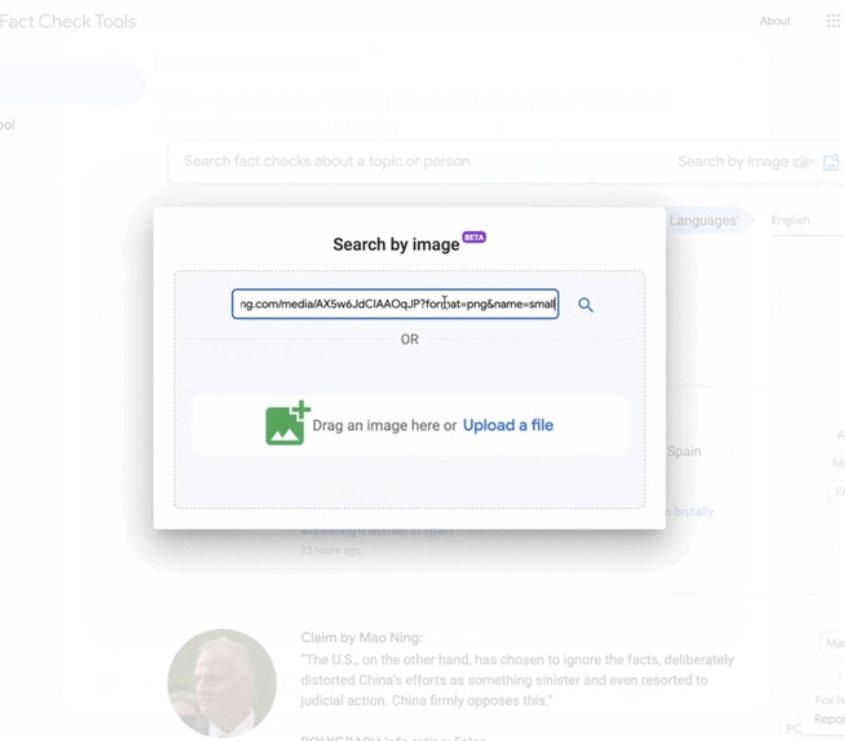

Fact Check Explorer is one of Google’s latest initiatives to combat fake news online. In addition to this, Google and YouTube announced a groundbreaking USD13.2-million grant to the International Fact-Checking Network to establish the Global Fact Check Fund, which aims to support fact-checking organizations worldwide.
Anyone can now use the Fact Check Explorer and look up the latest verifications by going here.

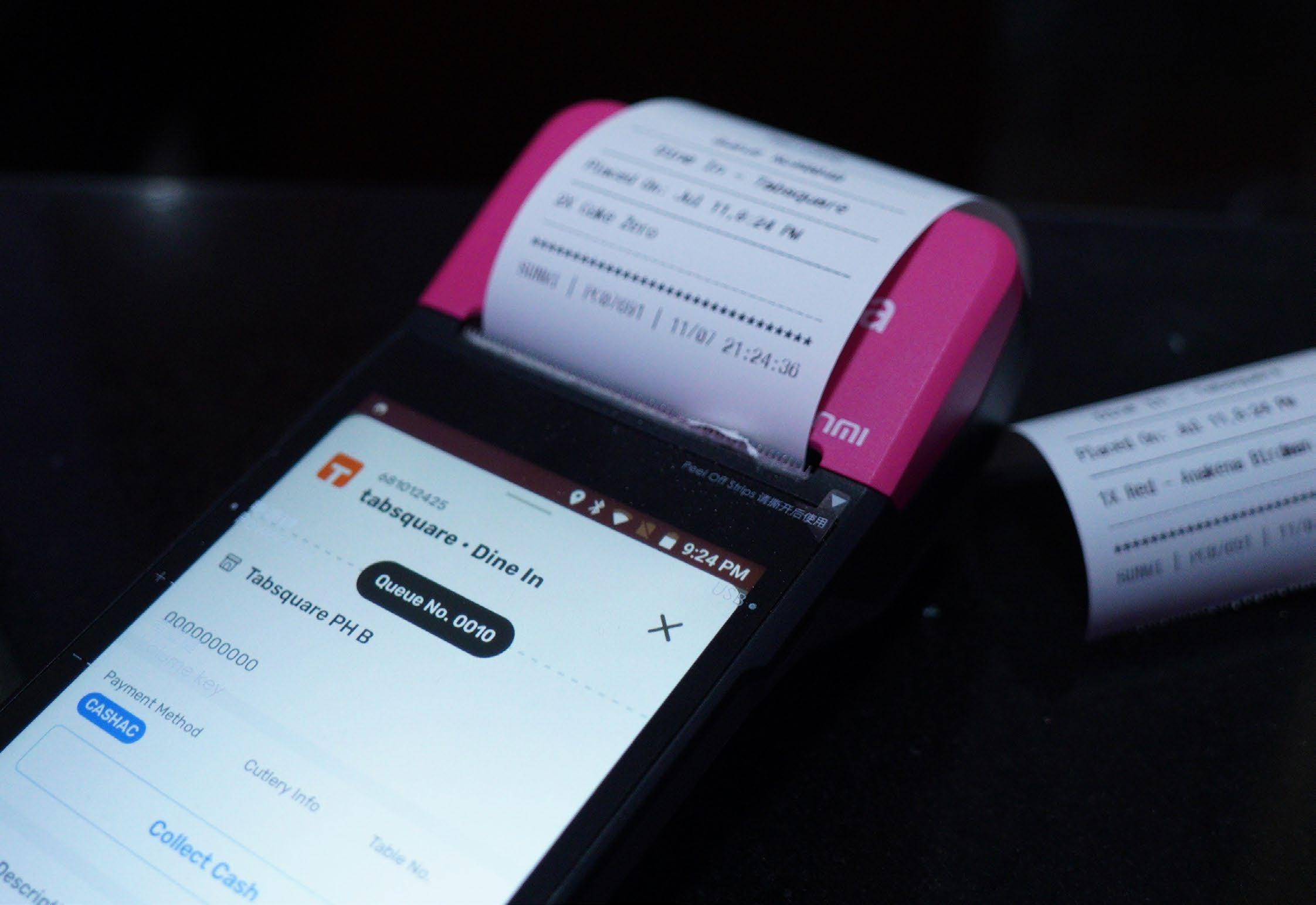

The collaboration is part of a region-wide partnership, including other Asian markets like Singapore, Malaysia, and Taiwan, to help restaurant partners digitize their ordering, payment, and customer engagement-related processes.
In the Philippines, the announcement was made during foodpanda’s recent partner vendors summit, entitled CRAVE: Creating Relationships and Advancing Vendor Experiences. At the event, partner vendor attendees were provided a firsthand end-to-end experience using TabSquare, showcasing its convenience, seamless operations, and efficiency.
With TabSquare’s Smart QR solution, foodpanda’s vendor partners can automate tasks, including order processing and payments, while ensuring enhanced profitability. It also contributes to labor savings by minimizing order errors and reducing staff workload.

According to foodpanda Philippines commercial director Luis Antonio Yanga, “By offering digital menus through QR codes, we enable customers to place orders and make payments via TabSquare’s platform effortlessly. This enhances the dining experience by seamlessly bridging the offline-to-online gap and provides efficient solutions for our thousands of partner vendors and merchants.”
With foodpanda and TabSquare’s combined data and predictive technologies, restaurant partners can enhance customer engagement and retention.
Restaurant owners can review the transactions via TabSquare’s analytics, which provides valuable insights to support partners in improving menu items, pricing, and promotions, among other things. “This enables restaurant owners to identify trends, and personalize subsequent experiences based on customers’ purchasing history,” Yanga said.
Moreover, digital menus offer numerous advantages, including reduced reliance on wait staff, minimized employee turnover, decreased losses on food and finances due to human error, and more efficient menu changes without costly reprints.
According to foodpanda and TabSquare’s data, restaurants using this digital solution can see up to 10% higher bill sizes, up to 50% reduction in staff costs, and better customer satisfaction. At the same time, restaurants on foodpanda see an average of at least a 10% uplift in business performance since joining the platform.
In the dining service, there has been a massive shift in digitally-led solutions and services which TabSquare believes will further enhance the appeal of their services. “With foodpanda, we will be bringing many new innovative features to the industry. For example, restaurants working with TabSquare can now promote themselves to foodpanda’s large customer base and attract new customers,” told Anshul Gupta, co-founder of TabSquare.
Dine-in is offered through foodpanda’s pandapro subscription program with exclusive discounts and deals for app users.
Yanga shared that to further boost this segment and cater to the growing demand for QR Code payments, foodpanda introduced TabSquare’s enhanced QR Code scanning process for dine-in orders. This strategic move comes as a response to the rising demand for QR Code payments, evident by the country’s QR Code transactions totaling P 32.7 billion in Q1 2023.
Recently, dine-in has also become available to all foodpanda app users in Cebu with new features like in-app payment. With “Redeem & Pay,” the process becomes effortless as users can pay directly through the app, saving time and enhancing the overall dining experience.
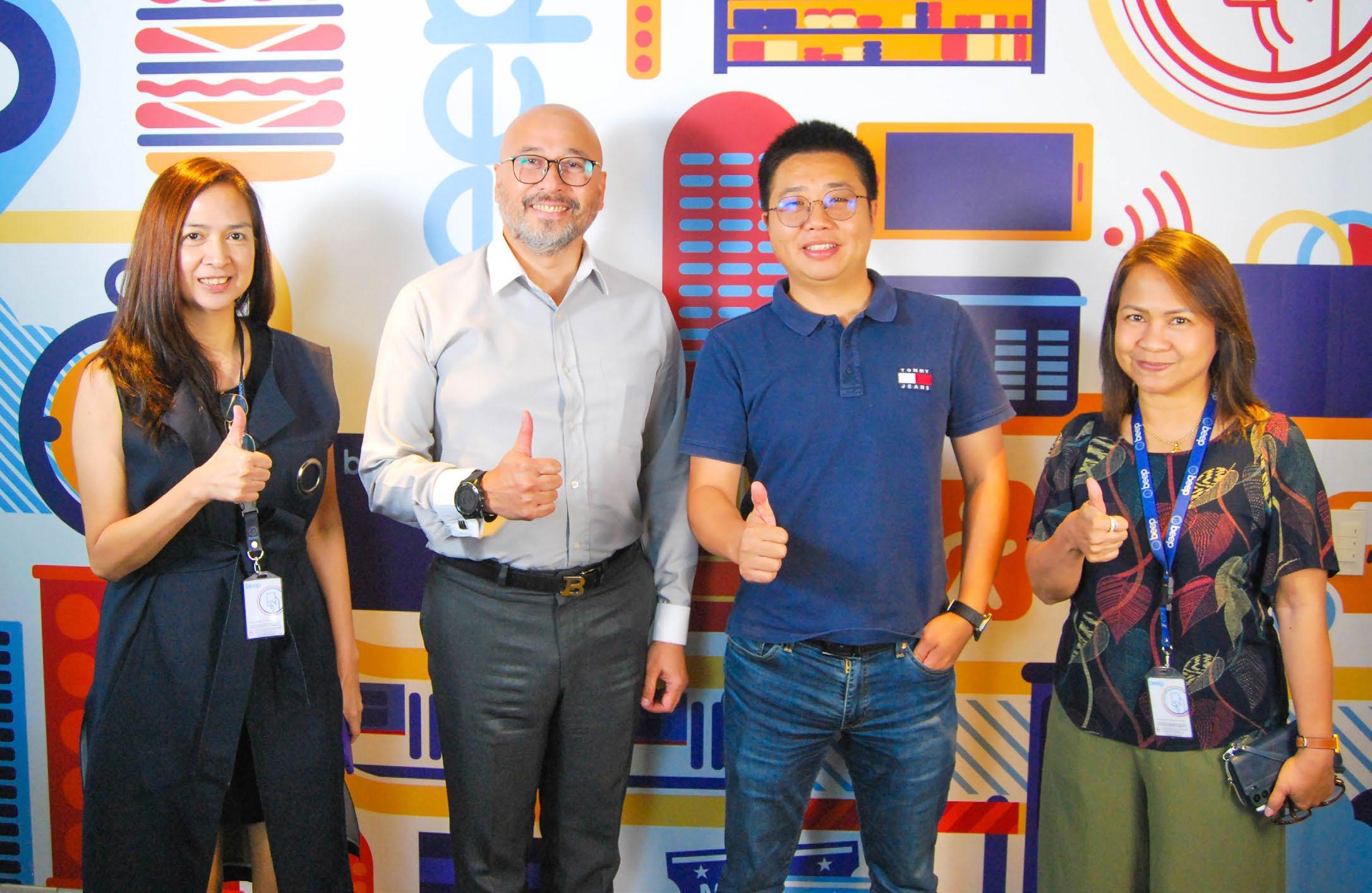
The Philippines’ first virtual credit wallet Mocasa, and automated fare collection service provider AF Payments Inc. (AFPI), recently announced their partnership aimed at improving the everyday travel experience for millions of Filipino commuters. Through this collaboration, users can now easily and securely reload their beep™ cards using Mocasa.
The collaboration comes at an opportune moment with the Philippine government, spearheaded by the Bangko Sentral ng Pilipinas
(BSP), pushing for cashless payment transactions, particularly in the transportation sector.
To reload a beep™ card, users simply need to download the Mocasa mobile app and apply for a Pay Later account, and activate their virtual Mastercard. Once approved, they can choose either to top-up or use their virtual Mastercard to reload.
For the top-up loading option, users simply need to go to the “Buy Load” section, select “BEEP” and choose their desired denomination. Users
have to enter their beep™ account number and pay with Mocasa credit.
Users can also reload using the virtual credit card (VCC) option. They just have to tap the beep™ logo in Mocasa’s home page, which will redirect them to beep™ app. Once rerouted, a pop-up window will show users instructions on how to reload using their VCC by tapping the “MPay” logo and keying in their card details checkout section. This integration streamlines the payment process, and users can be assured that their personal and financial information remain protected at all times.
In addition, Mocasa and AF Payments Inc. will develop loyalty programs that reward frequent Mocasa-beep™ users with exclusive perks and incentives. Both companies also promise to continuously enhance their systems and processes to meet the everevolving needs of commuters.
“We are honored and excited to partner with AF Payments Inc. to further ease the way people travel and pay for transportation services,” said Robin Wong, chief executive officer of Mocasa. “By leveraging our virtual credit technology and AFPI’s extensive network, we aim to redefine the commuting experience, making it more seamless and enjoyable for passengers.”
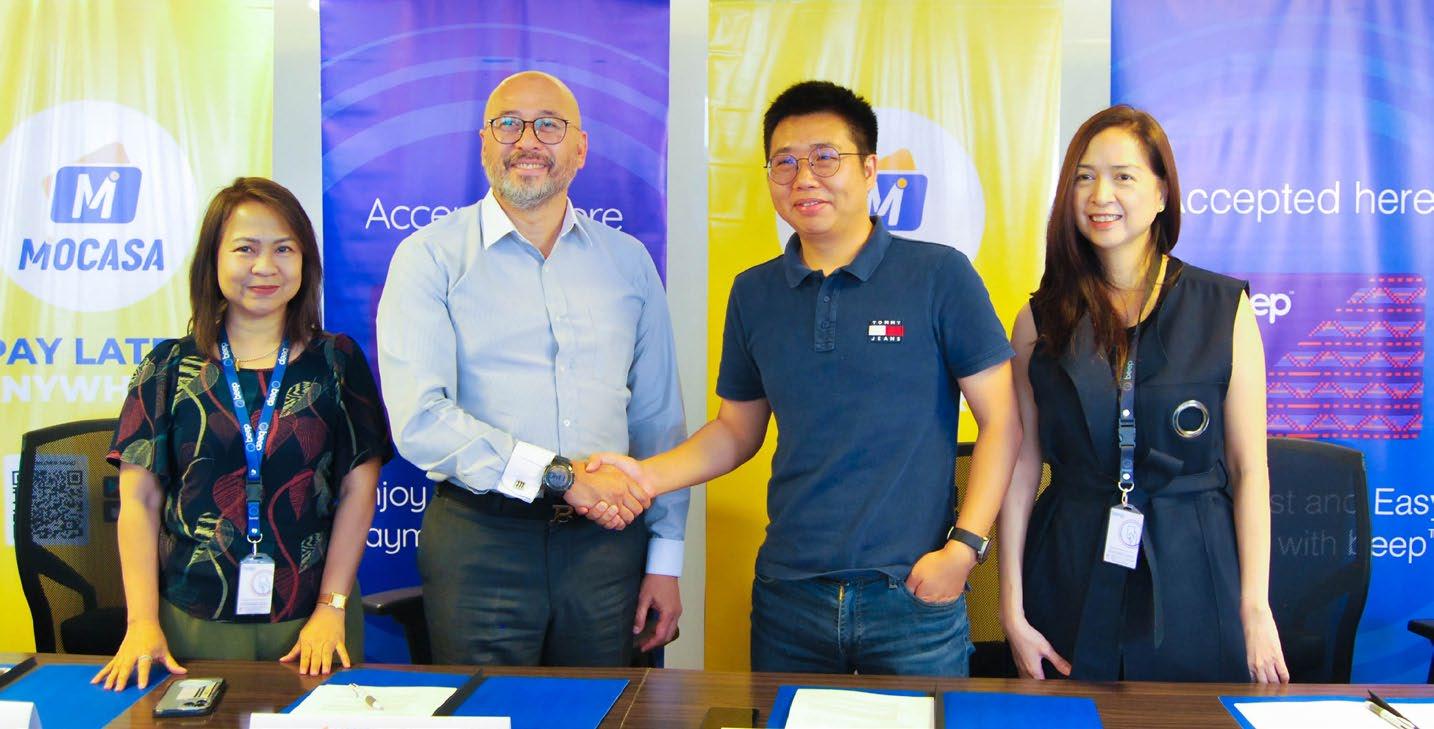
Jonathan Juan Moreno, president and chief executive officer of AF Payments Inc., expressed equal enthusiasm, “This partnership represents a significant milestone in our mission to provide Filipino commuters with the most advanced and user-friendly payment options. Together with Mocasa, we are excited to introduce an innovative payment method that simplifies and enhances the travel experience.”
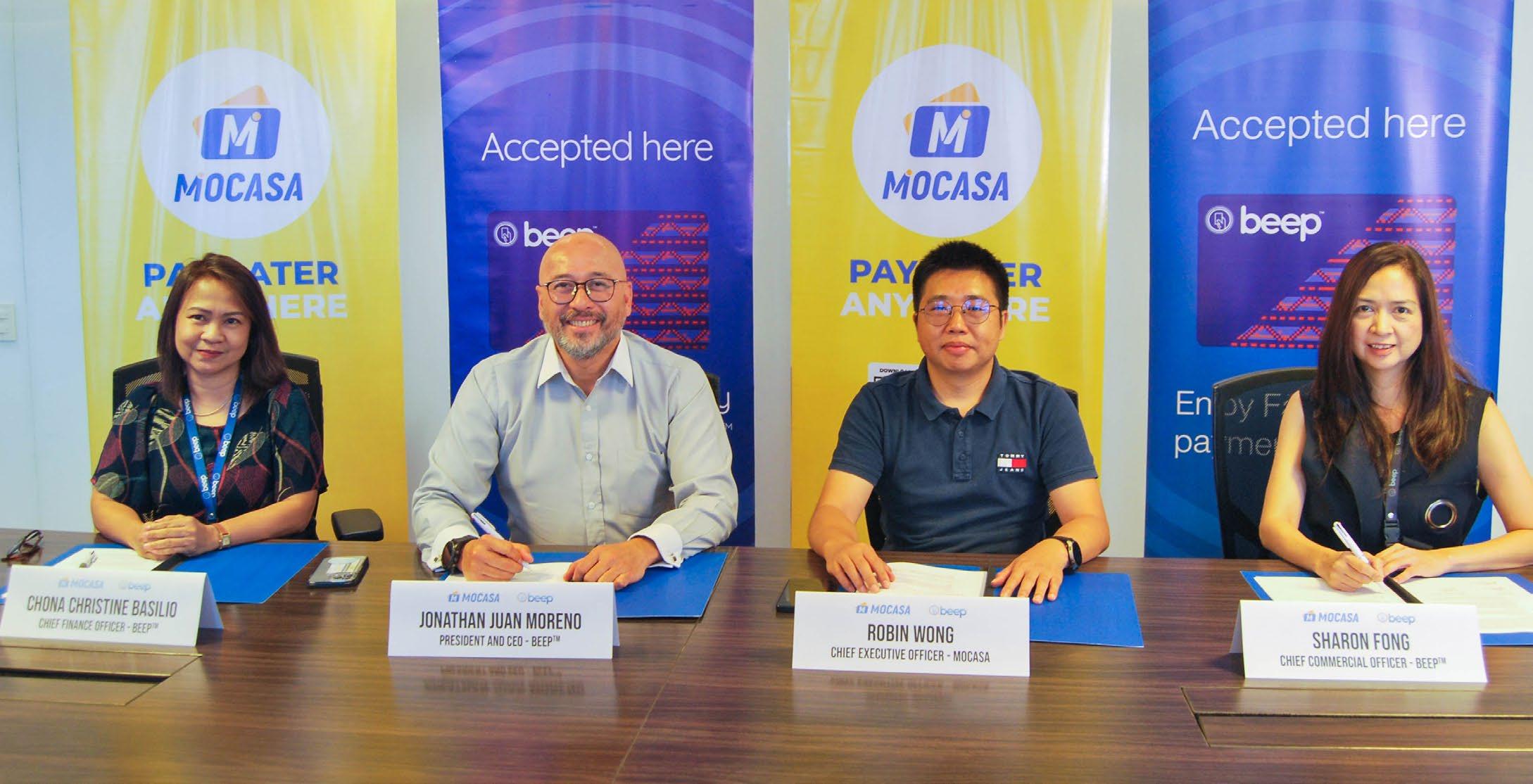
Both companies are committed to an efficient and timely integration process, with the first phase of the partnership’s offerings expected to roll out to commuters within the quarter.
beep™ cards can be purchased and used at Light Rail Transit Line 1 (LRT1), Light Rail Transit Line 2 (LRT-2), Metro Rail Transit Line 3 (MRT-3) stations, select Point-to-Point (P2P) Bus Stations, and retail partners. They are also available on AFPI’s official e-commerce platforms – Lazada, Shopee, and FB Marketplace.
Users are also encouraged to download the beep™ mobile app and
register their card for convenient reloading, to check their balance, monitor transactions, and earn rewards points.
Mocasa is a financial technology company duly licensed and regulated by the Securities and Exchange Commission (SEC) and an accredited accessing entity of Credit Information Corporation (CIC). To learn more about the latest updates from Mocasa, visit www.mocasa.com or its Facebook, Instagram and Tiktok accounts. Customers are encouraged to download the app in Google Play or App Store to know more about its services and latest promos.
As Eastern Communications continues its commitment to champion digital literacy and adoption throughout the country, the Philippine premier telecommunications company has launched its Eastern Cloud free trial allowing business owners to experience premium Infrastructure as a Service (IaaS) resources and test out its many features.

Among products offered free include 10GB RAM, 500GB of hard disk drive (HDD) storage, 100GB of solid-state drive (SSD) storage, 2 IP addresses, 1 VLAN, and 1TB of outbound data transfer. Interested individuals and business owners can utilize the
free cloud service for 30 days and experience a flexible, scalable, and robust cloud network for day-today operations by simply registering through this link: tinyurl.com/ EasternCloudTrial.
Enterprises of all sizes can take advantage of the Eastern Cloud free trial until October 31, 2023. The service boasts stringent security features so users can maximize the free trial without worries about their data privacy and safety.
Satisfied users who would like to continue their Eastern Cloud subscription after the trial can explore the match subscription
funds of up to $1,000. Additionally, customers will experience a smooth transition as Eastern offers a complimentary migration tool that provides uninterrupted continuity.
If users are looking to maximize the cloud through a flexible subscription, they can enjoy the latest features— Platform as a Service (PaaS), Eastern Cloud Virtual Router, and SGX Confidential Computing.
PaaS lets businesses employ higherlevel programming with dramatically reduced complexity. This also allows the creation of customizable applications from scratch and lowers the costs often involved with
developing cloud-based products. Eastern Cloud Virtual Router, and SGX Confidential Computing on the other hand, ensure maximum safety of the cloud through added network security and redundancy features.
“As we enter the latter part of the year, Eastern Communications is dedicated to serving more businesses across the nation. Cloud adoption is pivotal for all businesses, ushering in their growth and innovation. In today’s digital era, cloud adoption will provide businesses the capacity to cover a larger scope of work, a space for collaboration, and a multi-purpose hosting platform that offers flexibility,” shared Edsel Paglinawan, Eastern Communications vice president and head for product and innovation.
Eastern Communications recognizes the transformative impact of cloud services on business operations over the years, evolving into an encompassing solution that addresses various business needs.
Eastern Cloud is one of the most customizable cloud platforms in the market where customers can do convenient provision processing, storage, networks, and other fundamental computing resources at their discretion. Depending on your business needs, CPU, RAM, Storage and bandwidth can be tailored fit independently to allow the best combination of cloud resources that matches your requirements.
Moreover, emerging businesses can experience seamless collaboration and communication through Eastern Cloud without compromising company data with its enhanced security features, including data encryption and automatic backup tools.
On top of the Eastern Cloud free trial, Eastern Communications ramped up in empowering SMEs by hosting a series of workshops where
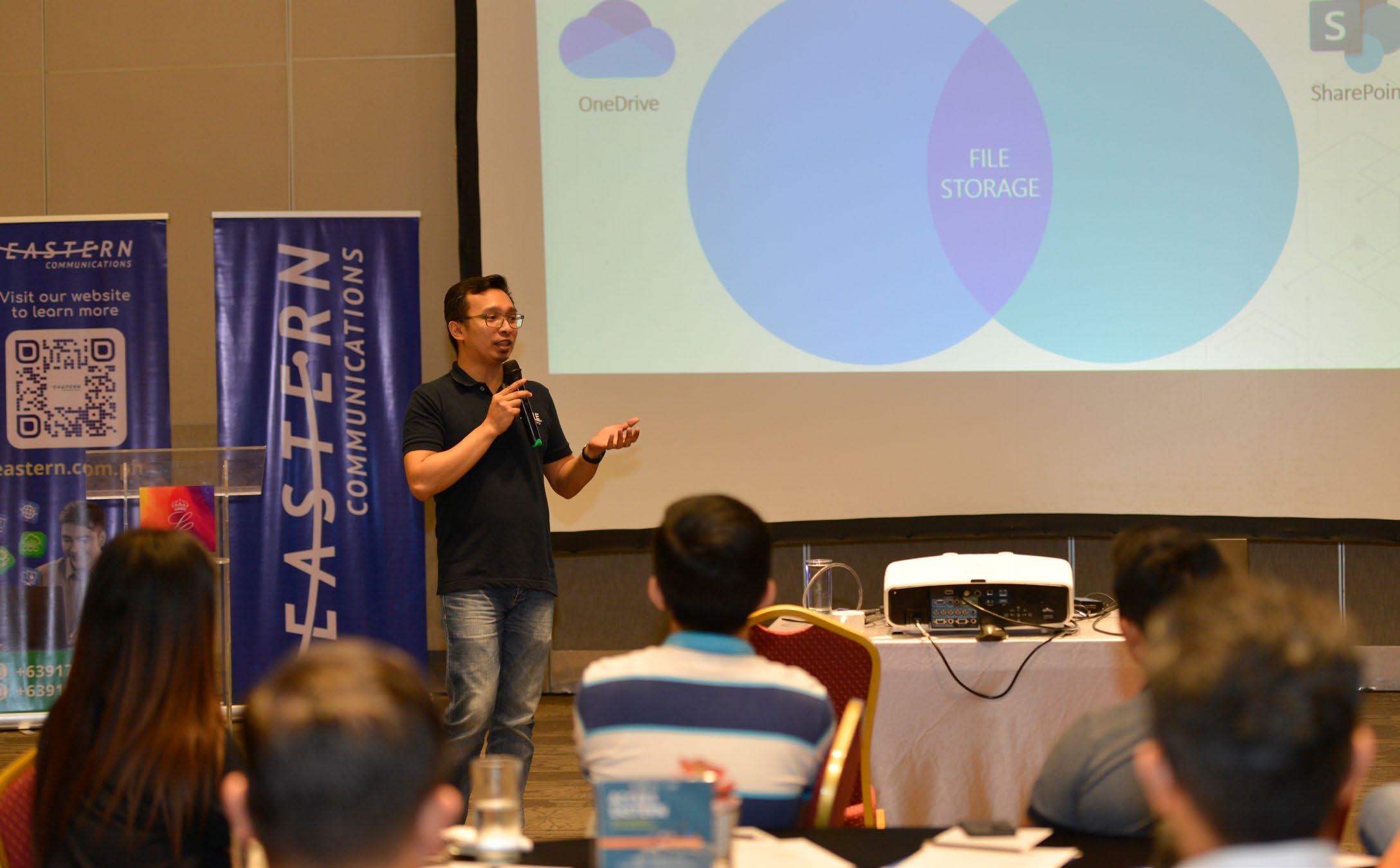
entrepreneurs engage in knowledgesharing activities and discover trends and strategies that address various challenges in running a business.
Aimed at reinforcing the SME empowerment campaign of Eastern Communications, the “Eastern Huddles” and “Access Eastern” events were held early this year, providing exclusive workshops and seminars among enterprise owners, IT heads, and key decision-makers in the Metro and provinces such as Legaspi, Sorsogon, Cebu, Tuguegarao, and Laguna.
Furthermore, Eastern Communications will soon launch its Evolving Entrepreneurs video series, featuring its SME clients from various industries sharing about their journey, inspiration, business philosophies, and insights on digitalization.
To learn more about Eastern Communications’ products and services, visit eastern.com.ph
Hexagon’s Safety, Infrastructure & Geospatial division and Fujitsu Limited recently announced the joint development of digital twin applications for predicting and mitigating natural disasters and traffic accidents. The solutions reflect the two companies’ ongoing efforts to realize resilient, disasterresistant cities based on a business alliance formed in June 2022.
To support disaster mitigation, the two companies are developing a prediction model that calculates the extent and impact of flooding from precipitation data, visualizes the extent of flooding and performs damage prediction analysis. Based on the analysis, cities can develop disaster response plans.
To support traffic safety, the companies have focused on an application that identifies areas
where heavy traffic and road design heighten the risk of accidents and proposes measures for improvement. The application would allow city planners and road administrators to develop safer, more resilient transportation networks.
Going forward, Fujitsu and Hexagon will continue conducting field trials with customers in the administrative, municipal, and transportation sectors to support decisionmaking for urban environmental optimization, with an aim to develop solutions globally by the end of fiscal 2023 ending March 2024.
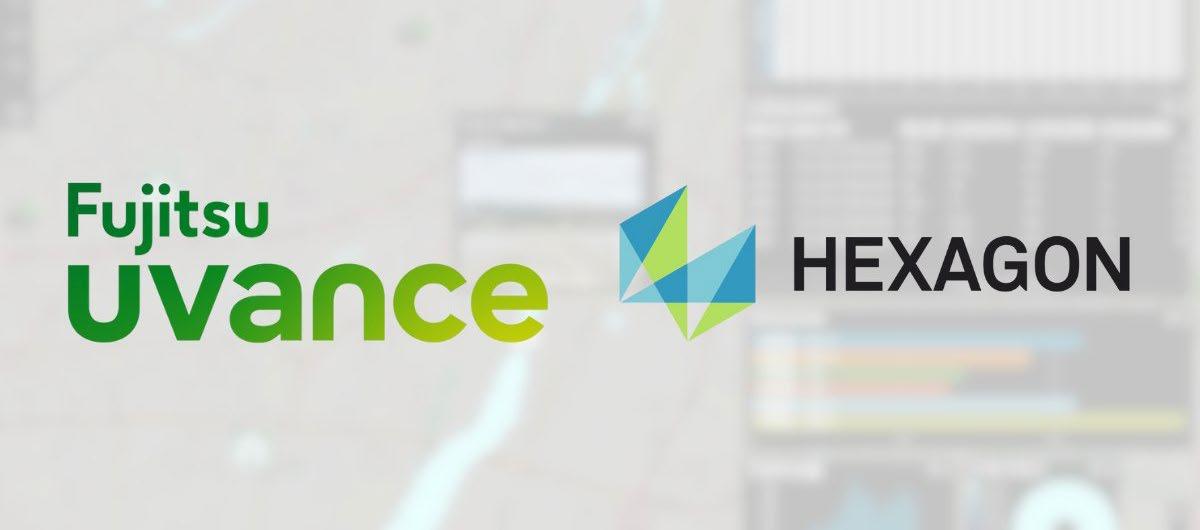
Coordinating and visualizing data across multiple areas, including medicine, transportation, energy and the environment is vital to protect
people and social infrastructure from the various threats posed by natural disasters and other dangers in an increasingly unpredictable world. Leveraging Fujitsu’s Computing as a Service (CaaS) platform, which offers users a powerful suite of easy-to-use services based on Fujitsu’s advanced computing and software technologies, alongside Hexagon’s M.App Enterprise realtime geospatial application, the two companies will use ‘digital rehearsal’ technology (Note 1) to analyze and verify disaster threats and optimal disaster preparedness in advance on a digital twin that replicates real world conditions with incredible detail.
The combined solution uses flood forecasting models and precipitation data to perform sophisticated calculations and visualize flooding, as well as to address challenges and
use cases in the medical, financial, public and distribution industries, such as infrastructure damage forecasting, formulation of disaster response plans and estimation of damage amounts. In addition, it aims to secure safe evacuation routes and support infrastructure protection in the event of abnormal weather and natural disasters by leveraging weather IoT sensors and weather forecast services that monitor temperature and rainfall.
According to a 2022 study report compiled by the World Health Organization (WHO), 50 million people are seriously injured and 1.35 million die annually from traffic accidents. Many accidents are caused by excessive speed, improper road guidance or the road environment. To reduce such accidents, it is important to visualize where accidents frequently occur, analyze the causes of accidents and propose solutions.
Through a combination of Hexagon’s geospatial visualization tool M. App Enterprise and Fujitsu’s infrastructure services, the companies have developed an application that visualizes areas with high levels of traffic accidents; analyzes traffic volumes, road design, signs, and other factors; and provides recommendations for reducing traffic accidents in accordance with the Road Safety Toolkit (Note 2) of the International Road Assessment Program (iRAP).

For example, in a spot where traffic volume is low but accidents frequently occur, several improvement measures, such as speed control, installation of warning signs, and separation of traffic routes between pedestrians and vehicles by guardrails, are presented together for a cost-effective solution. These proposals for city planners, road administrators, local governments and consulting services contribute to the reduction of traffic accidents and the creation of safe and secure communities.
Mladen Stojic, president of government, transportation, defense, and security for Hexagon’s Safety, Infrastructure & Geospatial division, said the partnership with Fujitsu continues to pay dividends for cities. “Hexagon is proud to work with Fujitsu to provide cities with tools to take control of their futures,” said Stojic. “By monitoring and mitigating factors that have negative impacts on society, from pollution to traffic congestion to flooding, our partnership is helping to make urban areas more sustainable and liveable.”
Yoshinami Takahashi, SEVP, Head of Global Business Solutions of Fujitsu Limited said, “We are very pleased to report on the progress of our partnership with Hexagon, which represents a big step towards realizing Fujitsu’s Trusted Society for Fujitsu Uvance. This new global offering promotes “sustainability transformation,” combining the strengths of both companies to address many complex issues facing society that cannot be solved through existing means.”
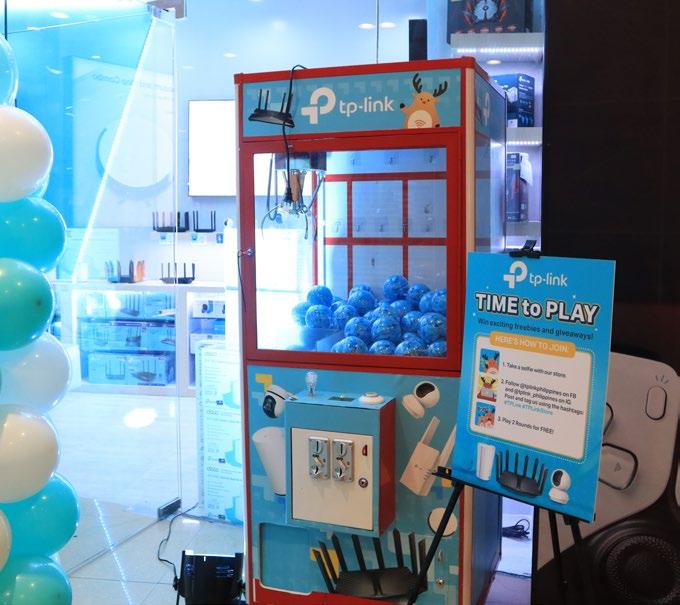

The world-renowned networking and connectivity solutions provider now has its first physical store in the country. As its first entry into the Philippines, this marks an exciting chapter for Filipino consumers and tech enthusiasts.
For 12 years straight, TP-Link has stayed a trusted leader in the industry. Located in SM North EDSA, the opening of the brand’s first store will not only mark a significant milestone for the company but also display TP-Link’s commitment to connecting the Filipino market through its wide range of available products. Bringing its world-class products and expertise to the fingertips of Filipinos, TP-Link’s extensive range of routers, switches, Wi-Fi systems, and smart home devices are designed to enhance connectivity, productivity, and convenience in homes and businesses across the country.
“We are thrilled to open our first branch in the country, as it gives us the opportunity to showcase our deep commitment to providing the Filipino public with a seamlessly connected experience through our products,” said Ben Chen, TP-Link’s country manager. “At TP-Link, we believe in delivering not just cutting-edge routers, mesh Wi-Fi systems, network cameras, switches, and smart home devices but also exceptional service to our valued customers. With our physical presence, we aim to better serve the Filipino community by providing direct access to our innovative networking solutions and personalized support.”
From routers to smart home devices, the TP-Link branch at SM North EDSA has something for everyone. TP-Link’s Deco X95 is a highperformance mesh system that delivers faster speeds, improved capacity, and reduced network congestion. The Archer AX11000 is a great example of a
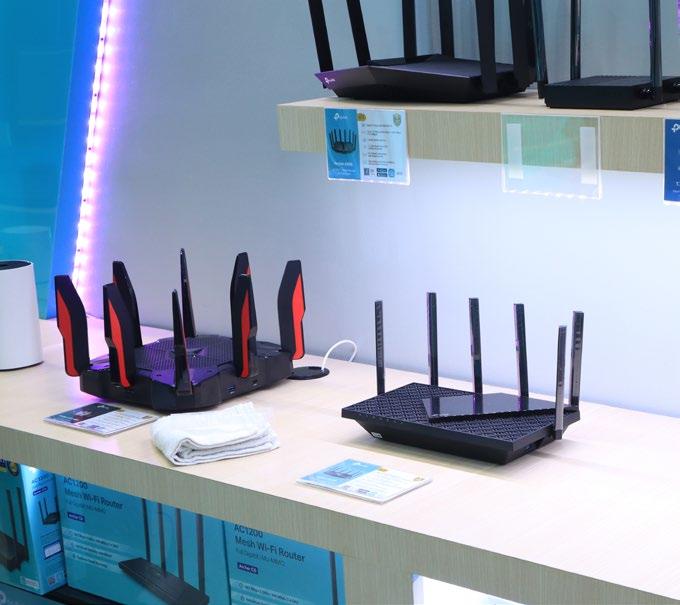
powerful Wi-Fi system offering fast and reliable performance to all parts of the home, perfect for personal and highbandwidth users.
For those seeking enhanced property security, the Tapo 325WB offers HD video surveillance with 1080p resolution and advanced night vision capabilities, making it a versatile and feature-rich security system.
On the other hand, consumers may also elevate their business security with the VIGI C540-W powerful outdoor pan tilt network camera, providing 4MP full-color surveillance to cover every corner flexibly.
Filipinos looking forward to trying out the wide selection of TP-Link products can do so by visiting the brand’s store at the 3/F of The Annex at SM North EDSA. With TP-Link’s physical presence, don’t miss this chance to be part of the networking revolution.

Urban mobility is defined as the movement of people and goods that occur within a city through either public or private transportation. That being said, what about the infrastructure and services that support such movement? Some local examples include roads (C5), mass transit systems (LRT and MRT), taxis or ridesharing apps (Uber, Grab), or trucks that deliver goods from places of production to stores. To truly understand urban mobility, one must look across the ocean to one of the greatest achievements that spurred urban (and suburban) mobility: the US Interstate Highway System.
The Federal Aid Road Act of 1916 provided USD75 million (~USD2.1 billion in 2023) over five years to match funds to the states to construct and improve highways. The
Ford Model T was also at peak production at this time, but World War I prevented this policy from being implemented on a large scale. In December 1918, just shortly after the conclusion of World War I, civil engineer E.J. Mehren made a proposal to state highway officials called A Suggested National Highway Policy and Plan, which proposed five east-west routes and 10 north-south routes for both military and commercial purposes.
In 1919, the U.S. Army sent an expedition from Washington, D.C., to San Francisco’s Presidio army base to determine the feasibility of the plan. It took 62 days to drive the 3,200mi (5,100km) route on the Lincoln Highway. Among the members of the expedition was a 28-year-old Dwight D. Eisenhower, who described the trip as “through darkest America with trunk and
tank...a succession of dust, ruts, pits, and holes.” The Federal Aid Highway Act of 1921, or the Phipps Act, revived the hopes of an interstate highway system. In 1922, World War I hero General John J. “Black Jack” Pershing submitted the Pershing Map, a network of roads that he considered necessary for national defense, which included 20,000mi (32,000km) of roads.
The states themselves, namely New York, were creating their own road networks in response to increased automobile travel throughout the 1920s, but a national system was needed by the late 1930s. In 1938, then-President Franklin D. Roosevelt authorized Thomas MacDonald, the chief of the Bureau of Public Roads, to study superhighway corridors. In 1939, Herbert S. Fairbank, the Bureau of Public

Roads’ Division of Information Chief, wrote a report called Toll Roads and Free Roads, which was the blueprint of the Interstate Highway System. While World War II put those plans on hold temporarily, a familiar face would come back to implement the Interstate Highway System.

By 1954, Eisenhower was the President of the United States, which allowed him to realize his dream of an interstate highway system. He appointed General Lucius D. Clay to head the committee to propose an interstate highway plan. Clay said, “It was evident we needed better highways. We needed them for safety, to accommodate more automobiles. We needed them for defense purposes if that should ever be necessary. And we needed them for the economy. Not just as a public works measure, but for future
growth.” Eisenhower promoted the Federal Aid Highway Act of 1956, which was inspired by postwar Germany’s Autobahn. Recalling his experiences on the 1919 expedition, Eisenhower said, “The old convoy had started me thinking about good two-lane highways...the wisdom of broader ribbons across our land.”
Construction on the Interstate Highway System started in August 1956 in Missouri, upgrading a section of the famous Route 66 into Interstate 44 (I-44). In 1974, Nebraska completed its portion of the Interstate Highway System by completing its portion of I-80. By 1979, I-5 was dedicated near Stockton, California, which connected Canada and Mexico along the West Coast. By 1986, I-80, the longest interstate highway in the United States, was completed, linking San Francisco,
California and Teaneck, New Jersey. In 1990, I-10 was completed, connecting Santa Monica, California and Jacksonville, Florida. The entire system was officially completed in 1992 when I-70 was completed in Colorado in dramatic fashion, with a 12 mi (19 km) span with numerous bridges and tunnels in an otherwise rural area.
Overall, the initial cost estimate for the entire system was about USD25 billion over 12 years, but it ended up costing USD114 billion (USD558 billion in 2021) and took 35 years to complete. However, there are future expansions planned for the system as the population continues to grow. To truly understand urban mobility, the Interstate Highway System is a good example of scaling it to cover larger areas and improve overall mobility as well.







